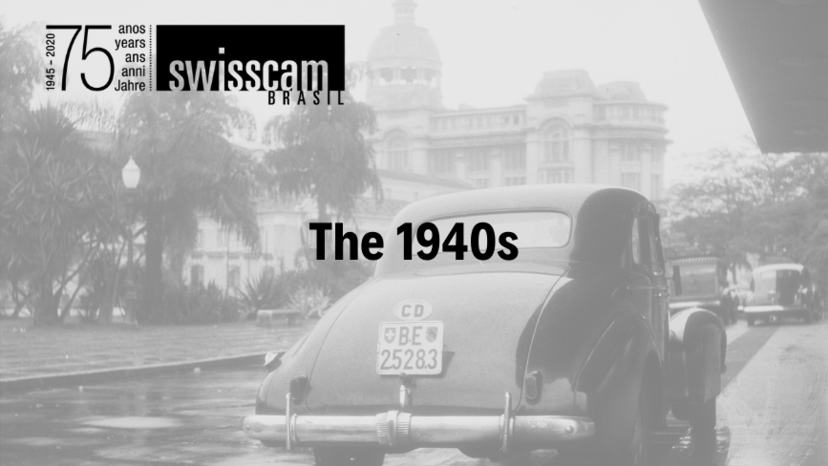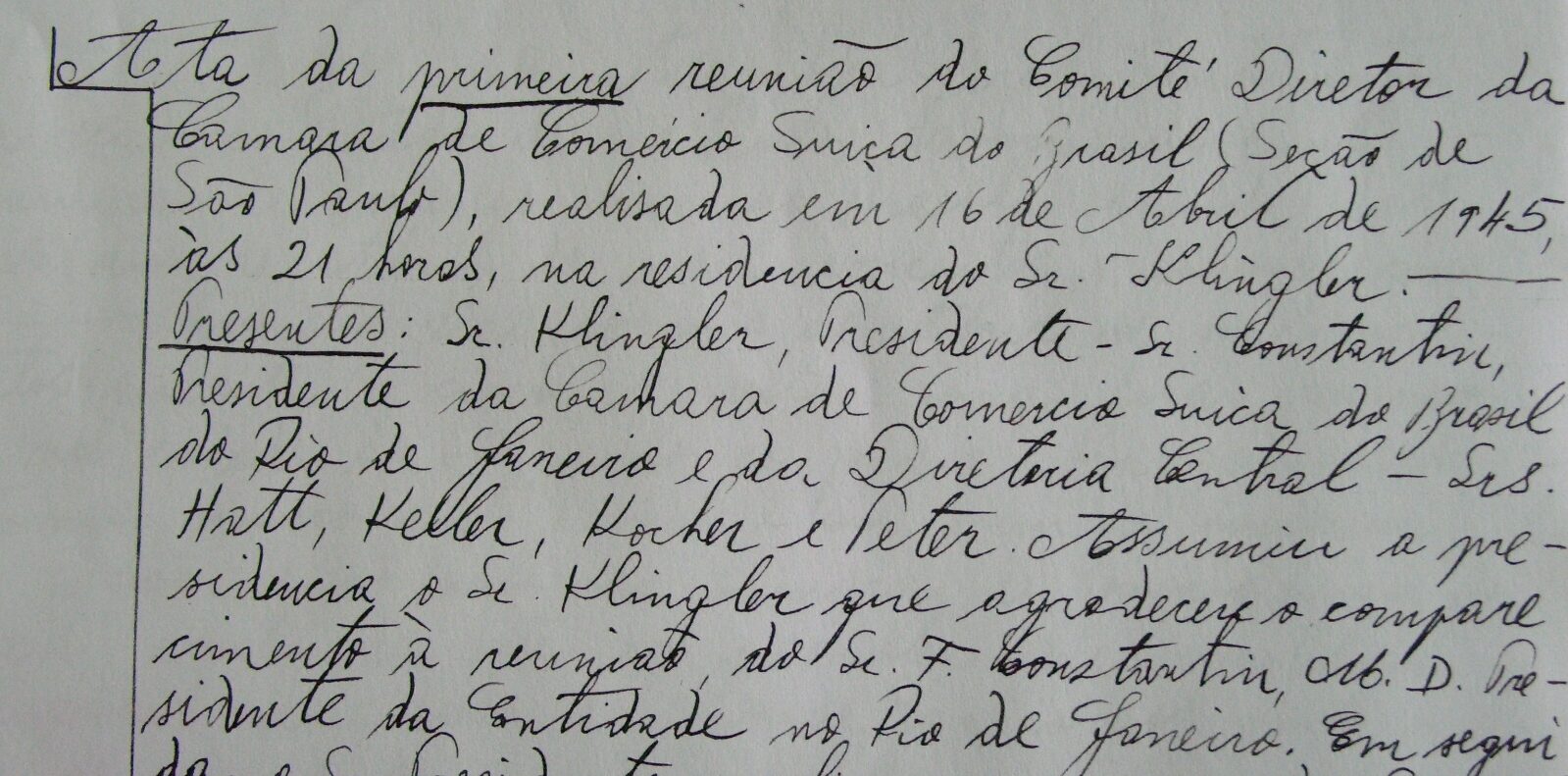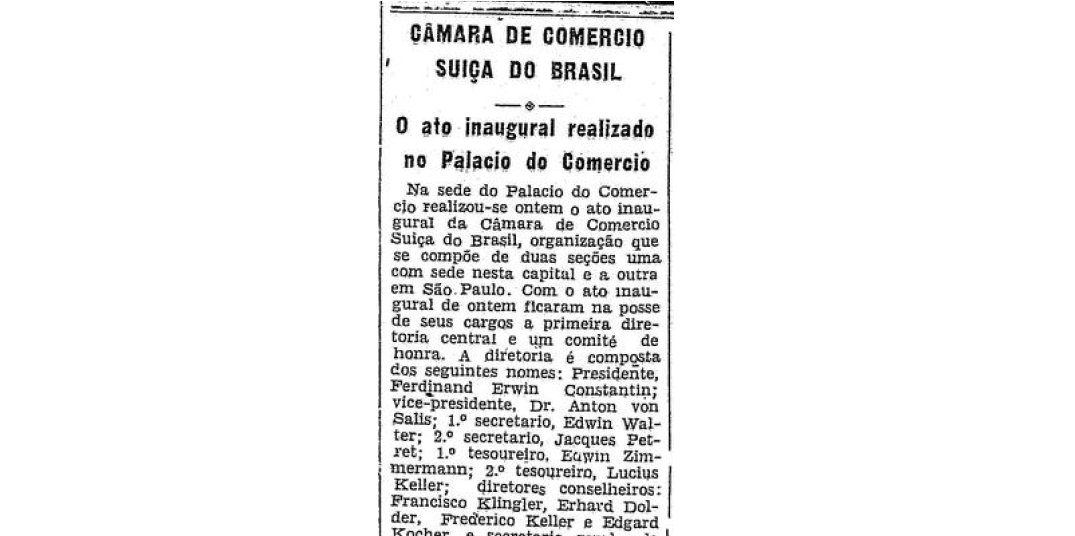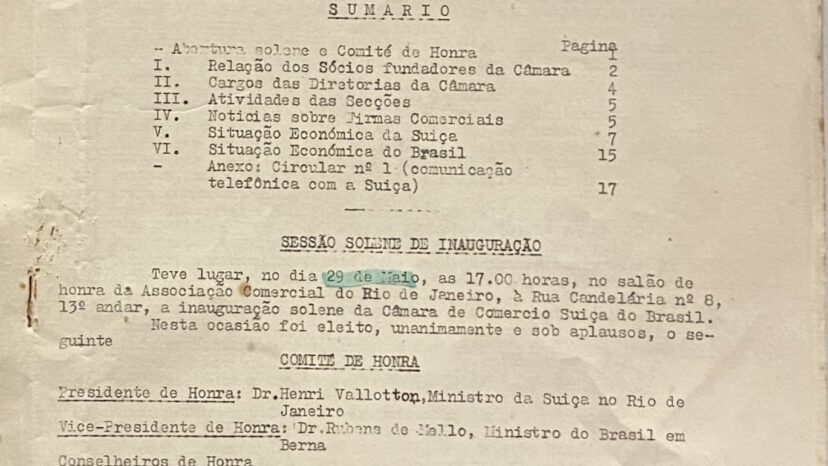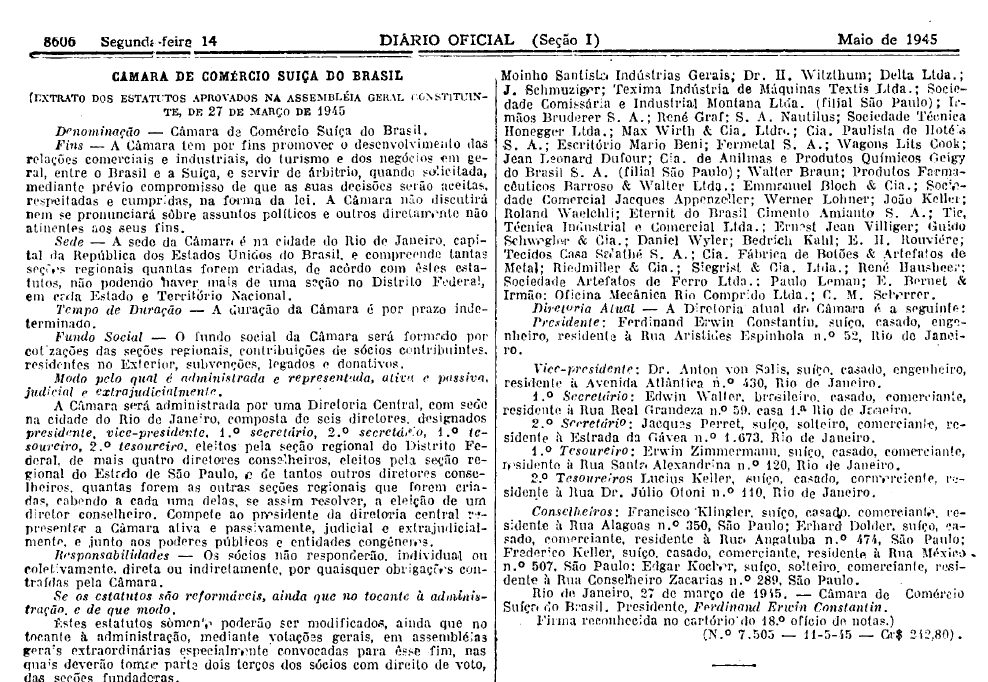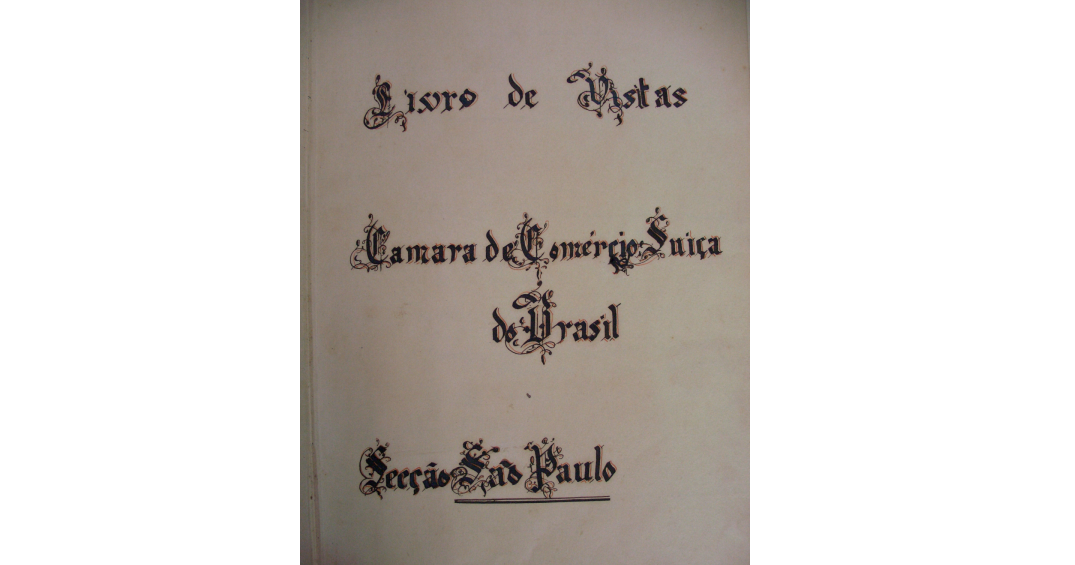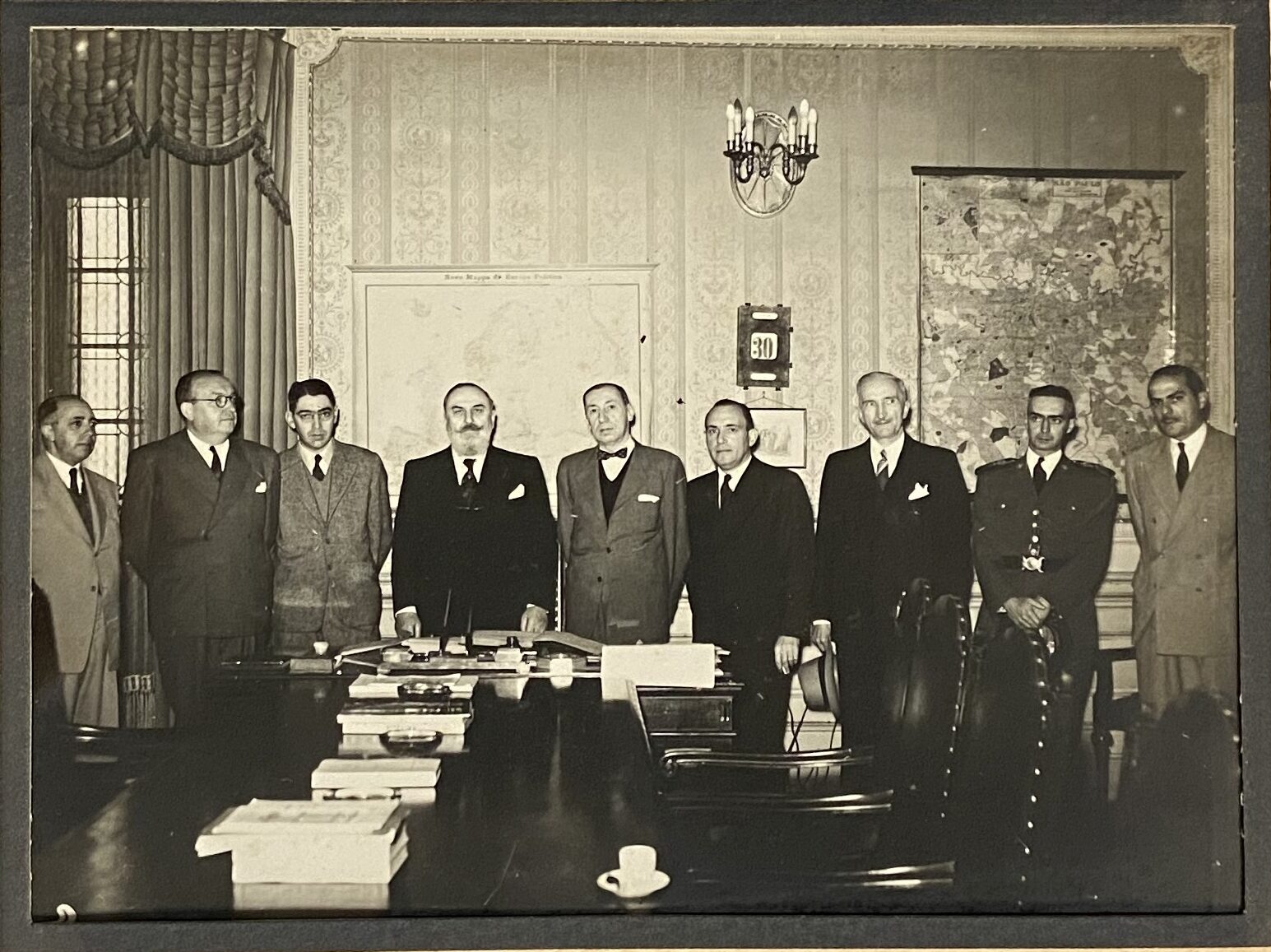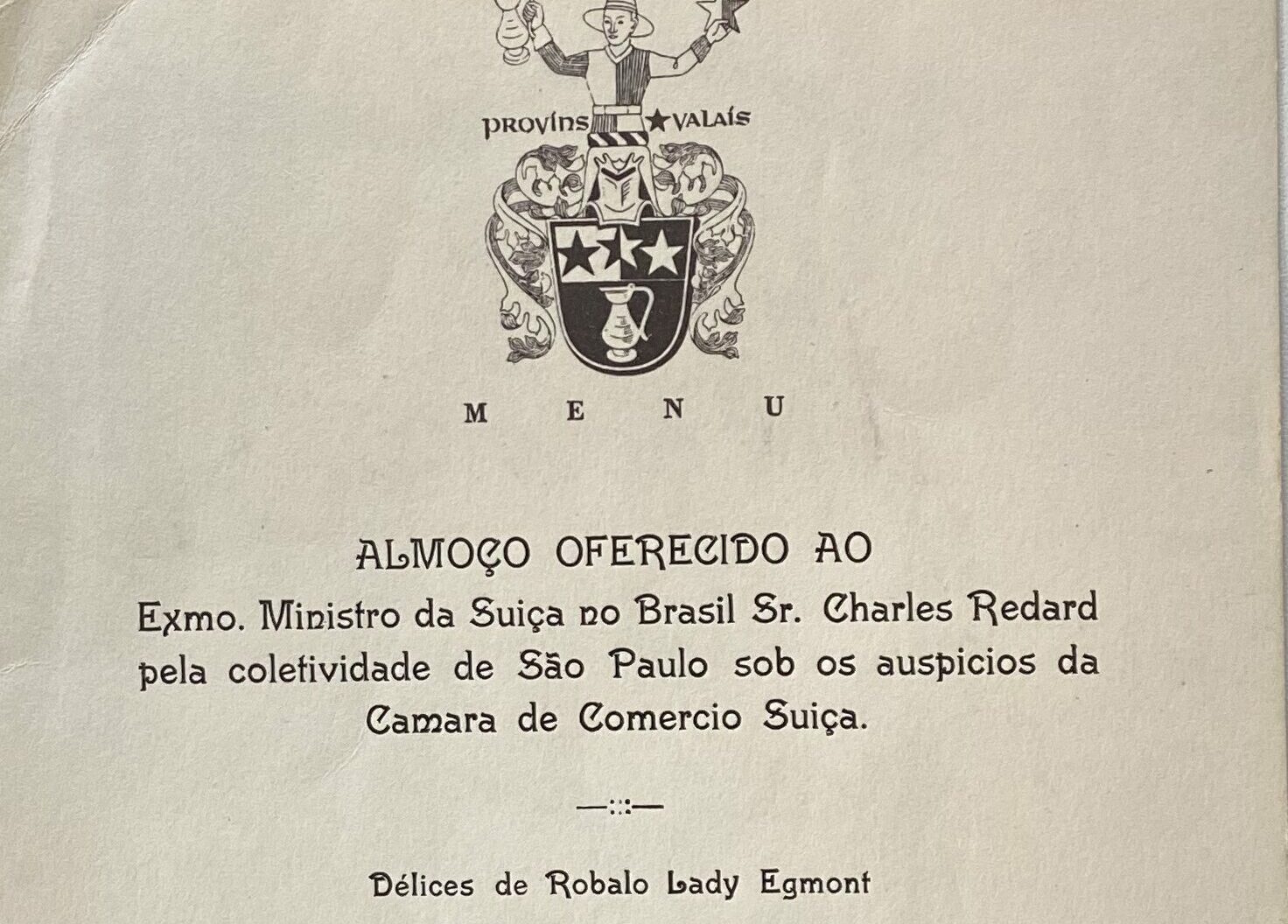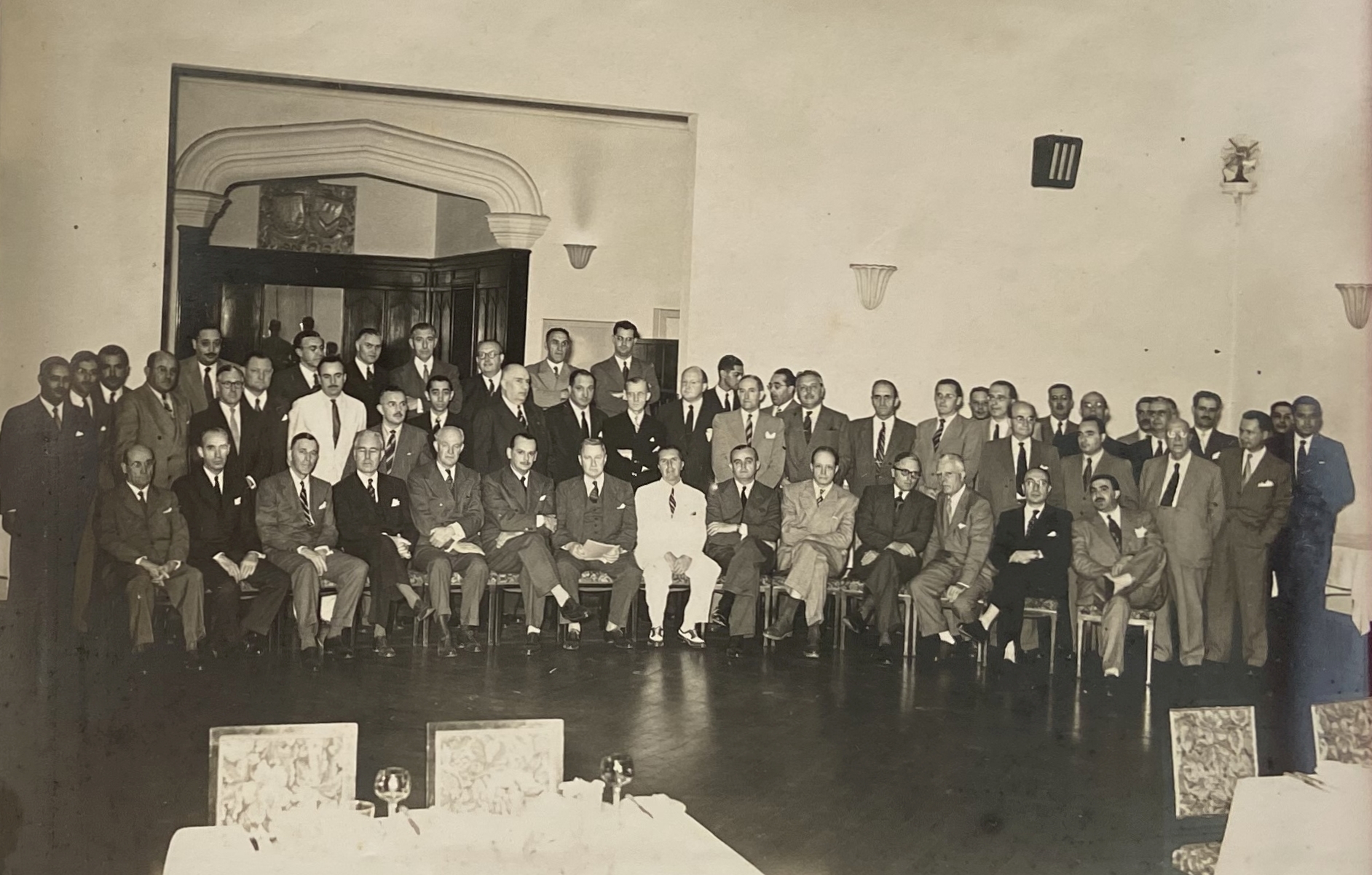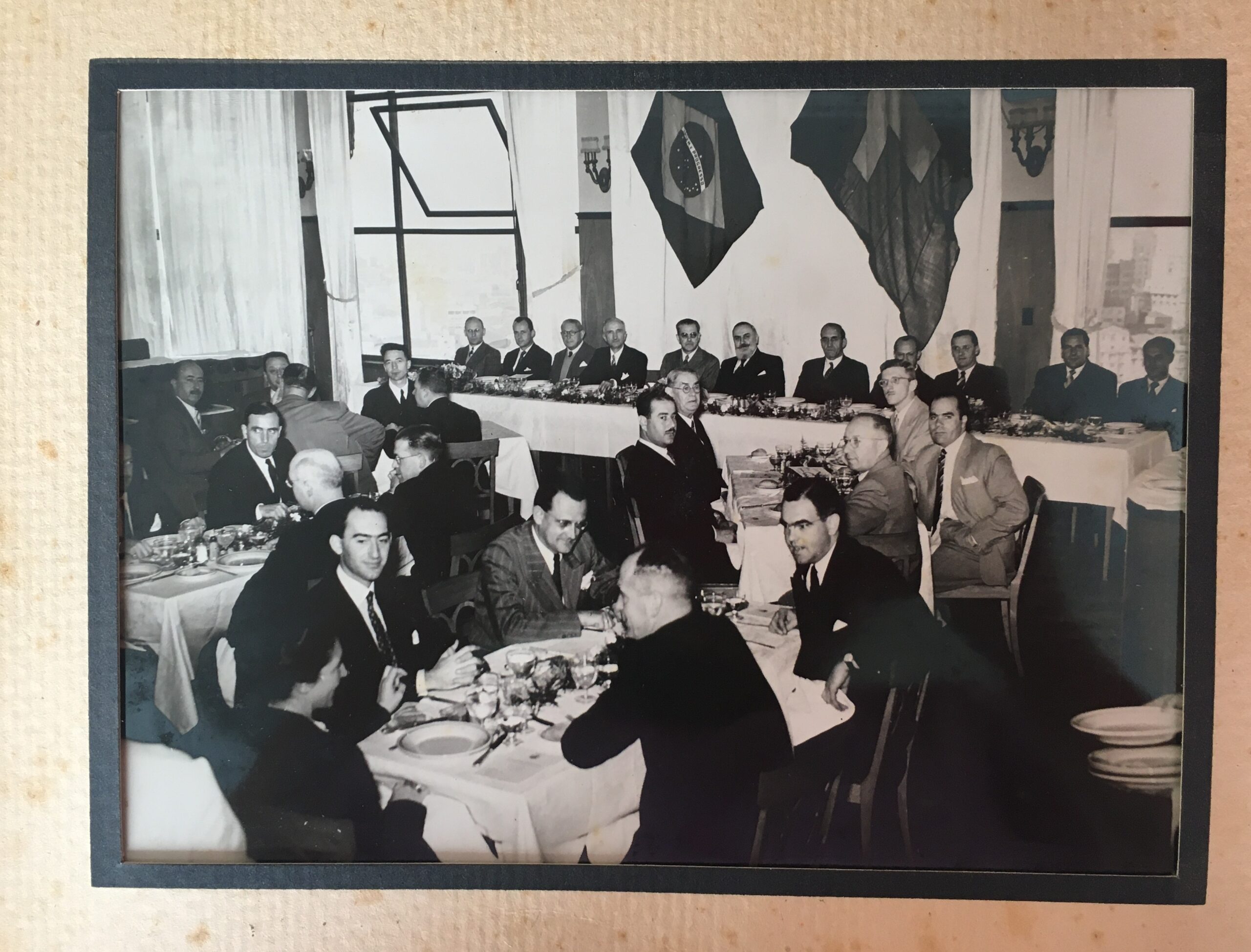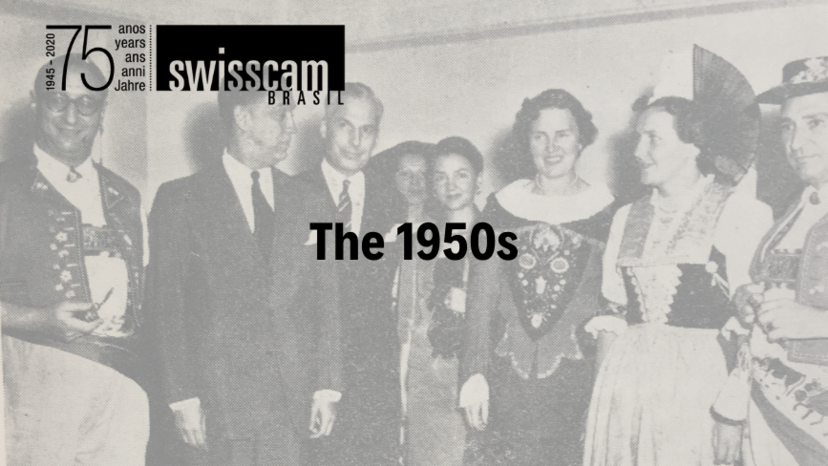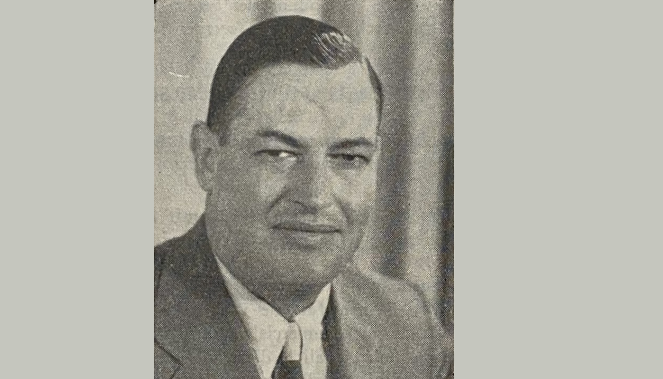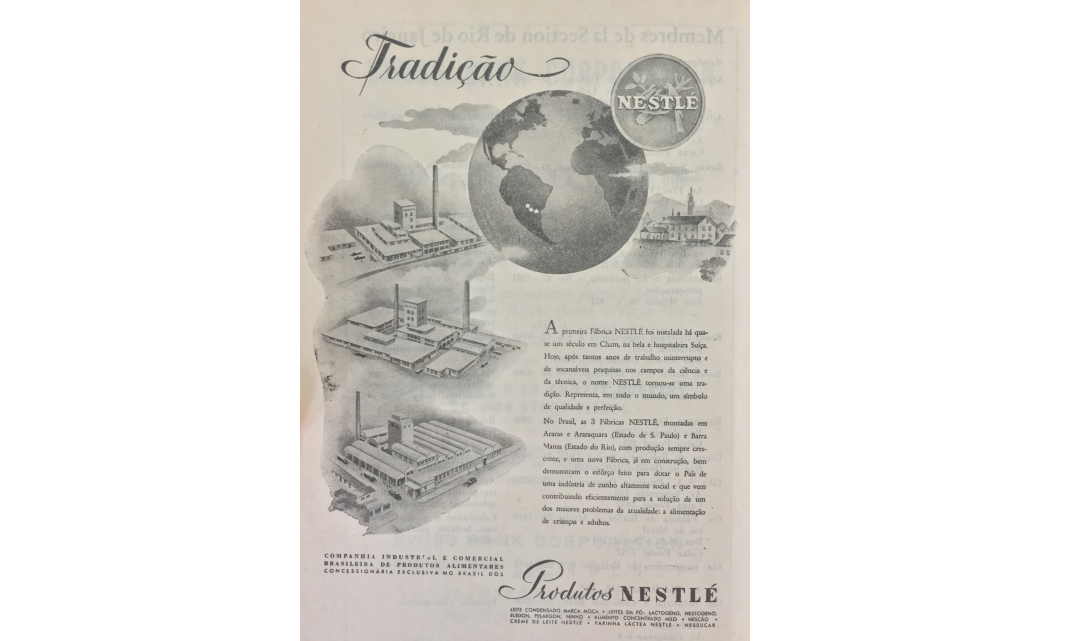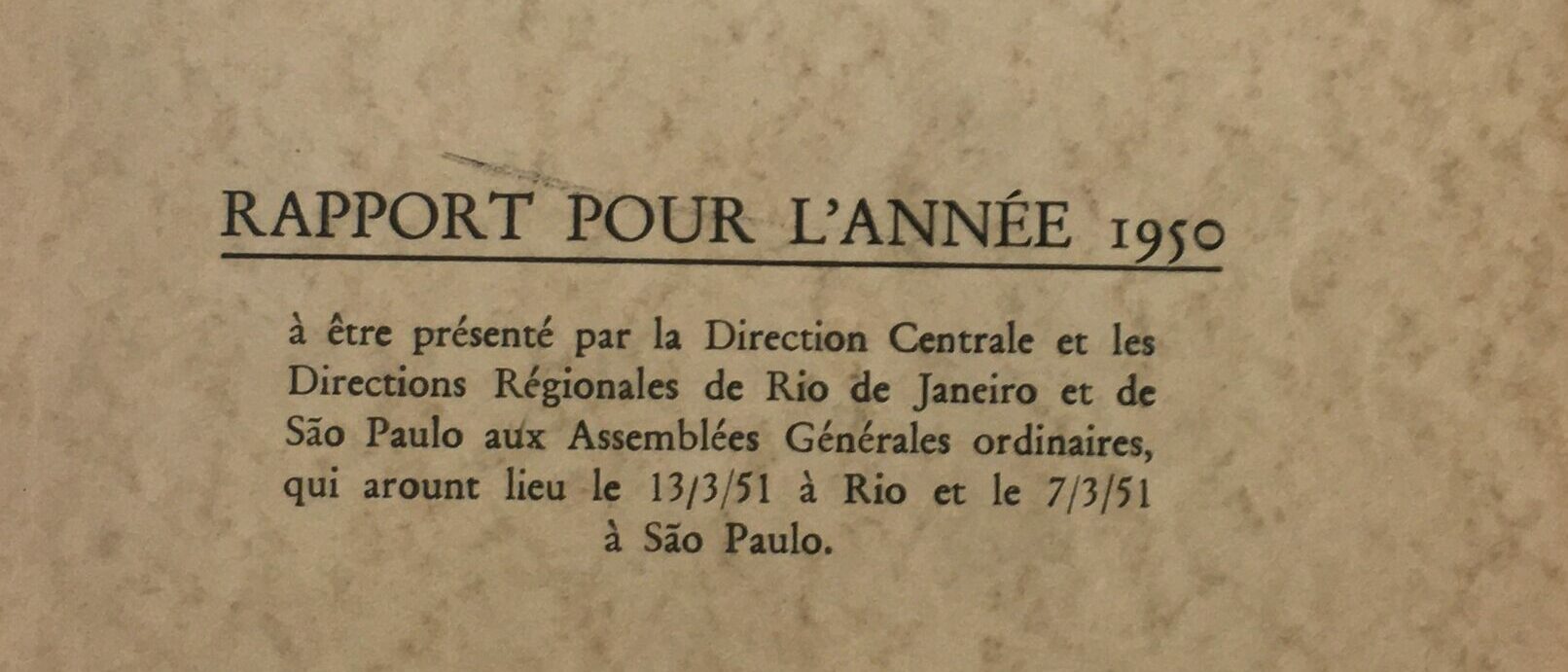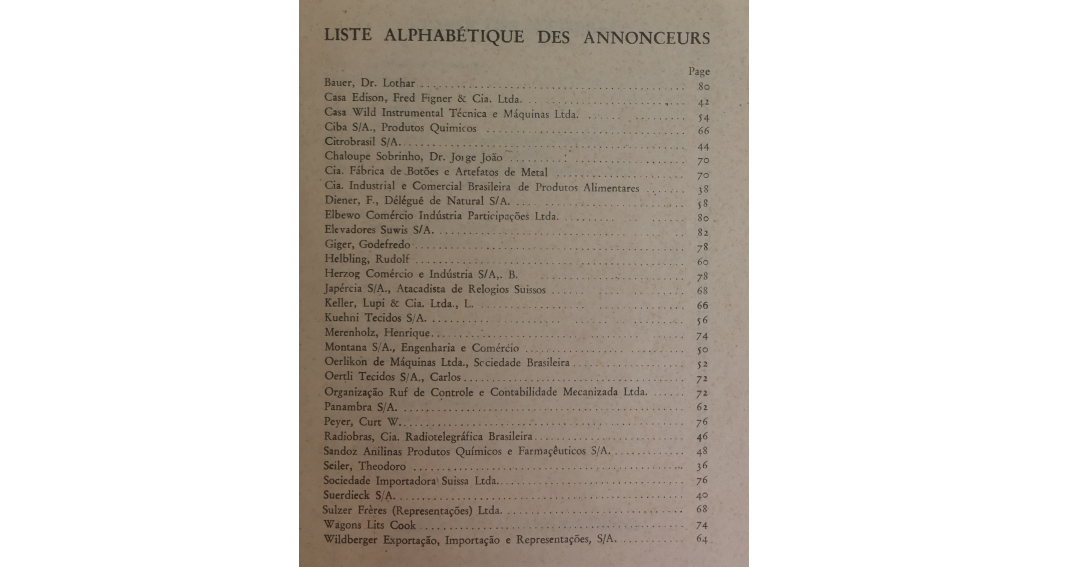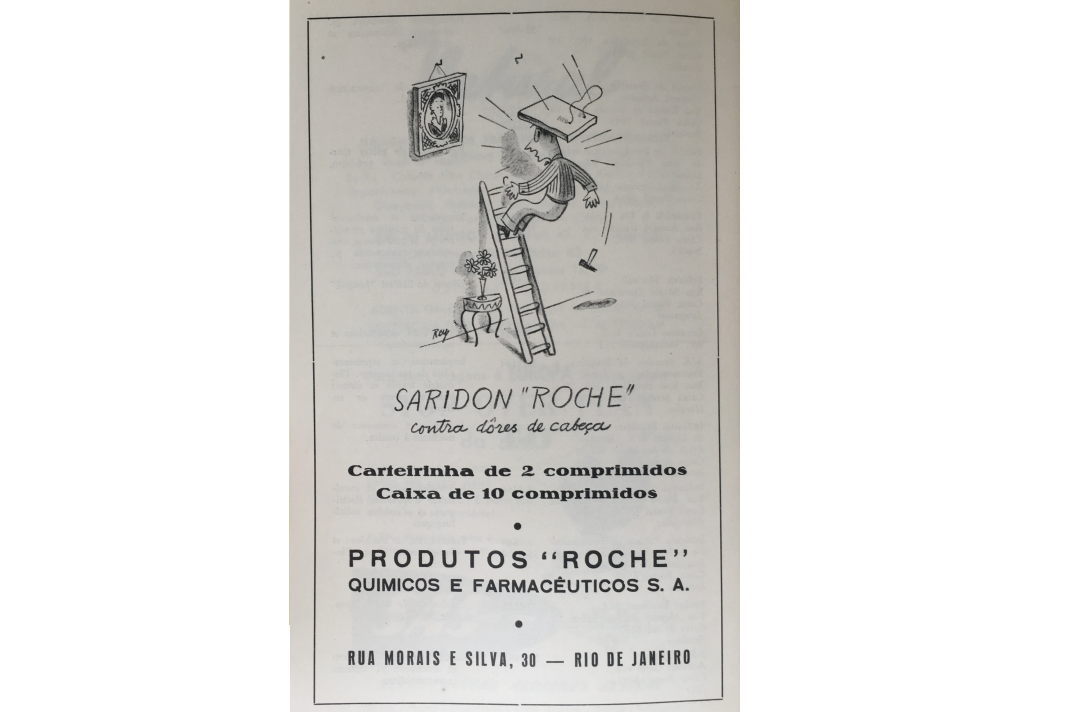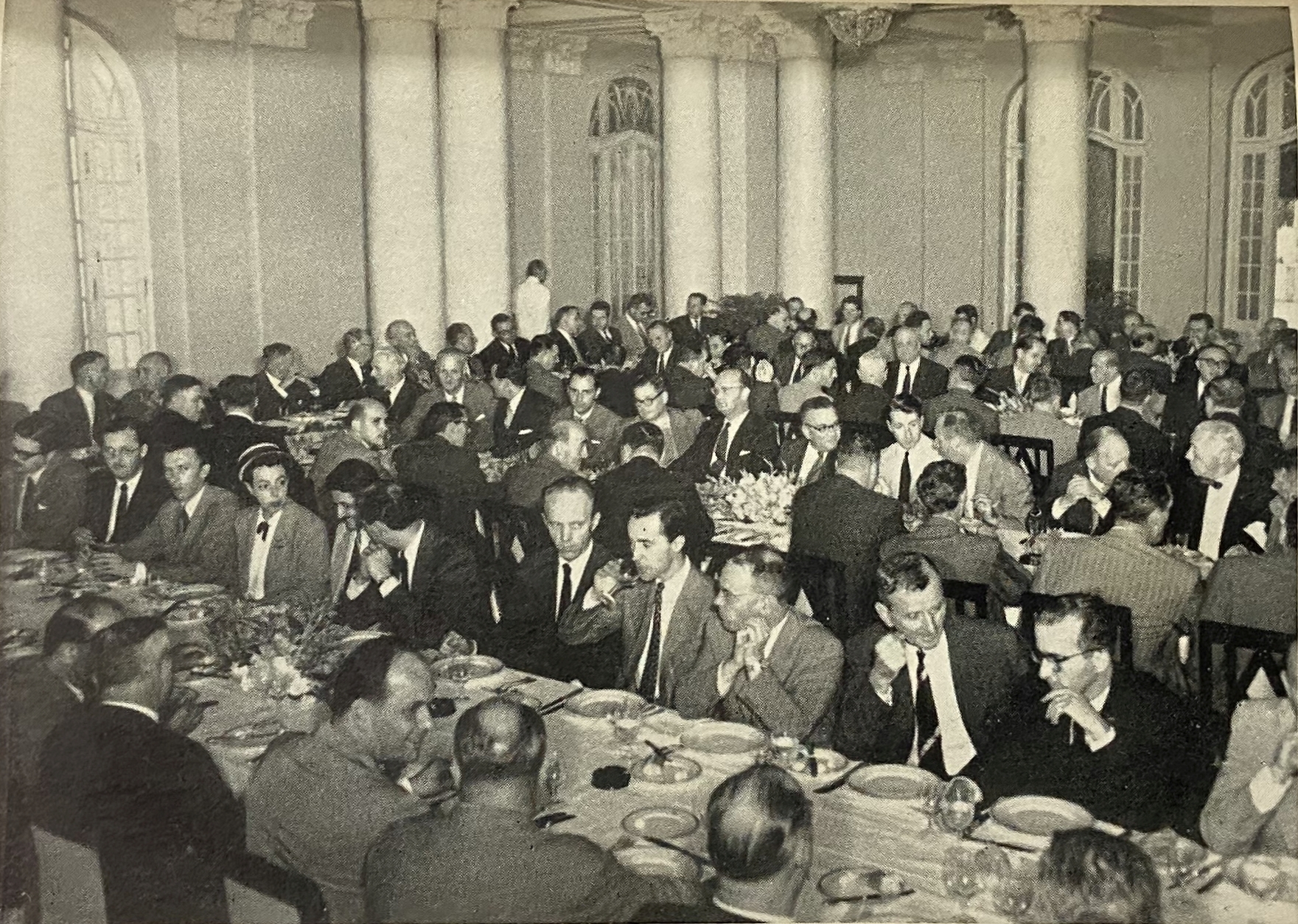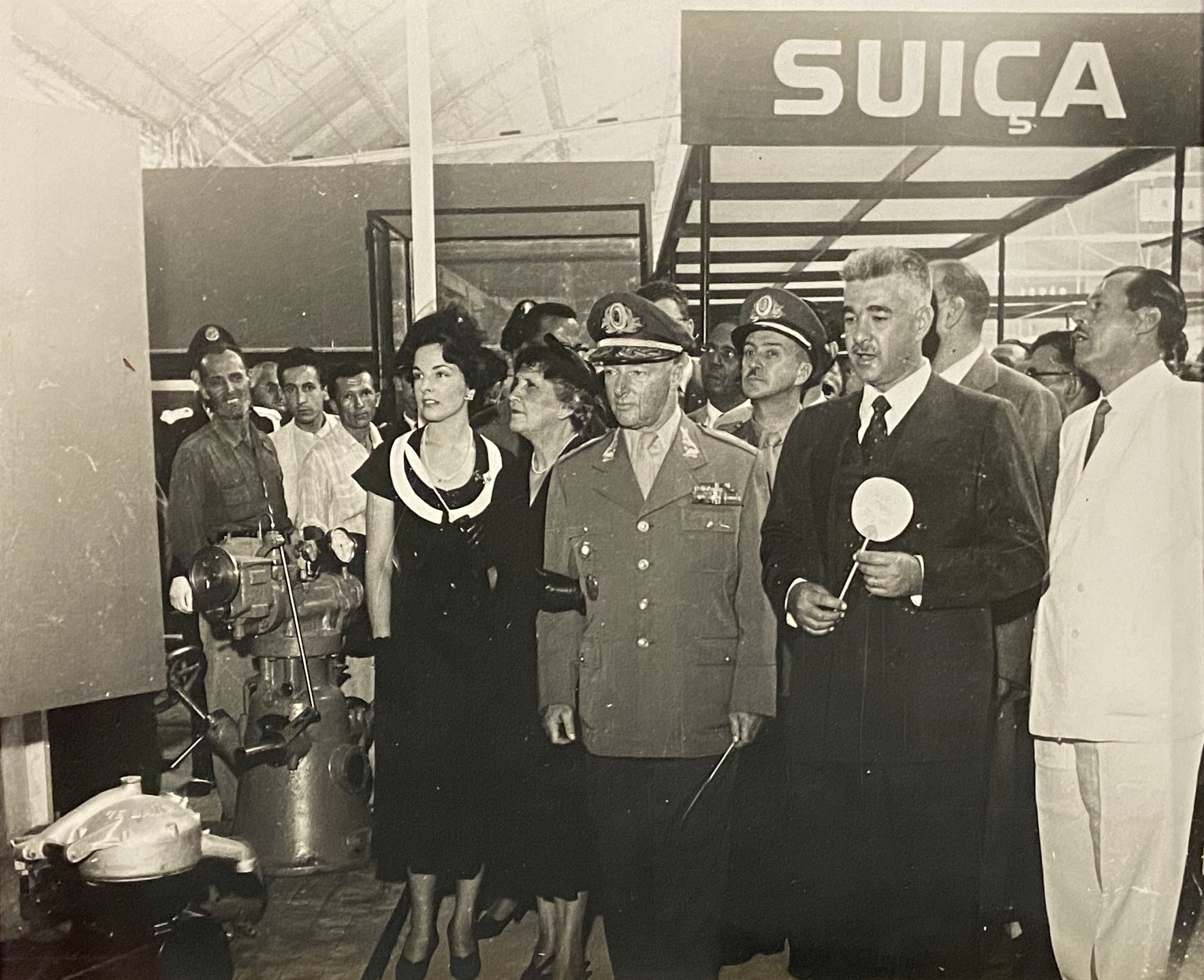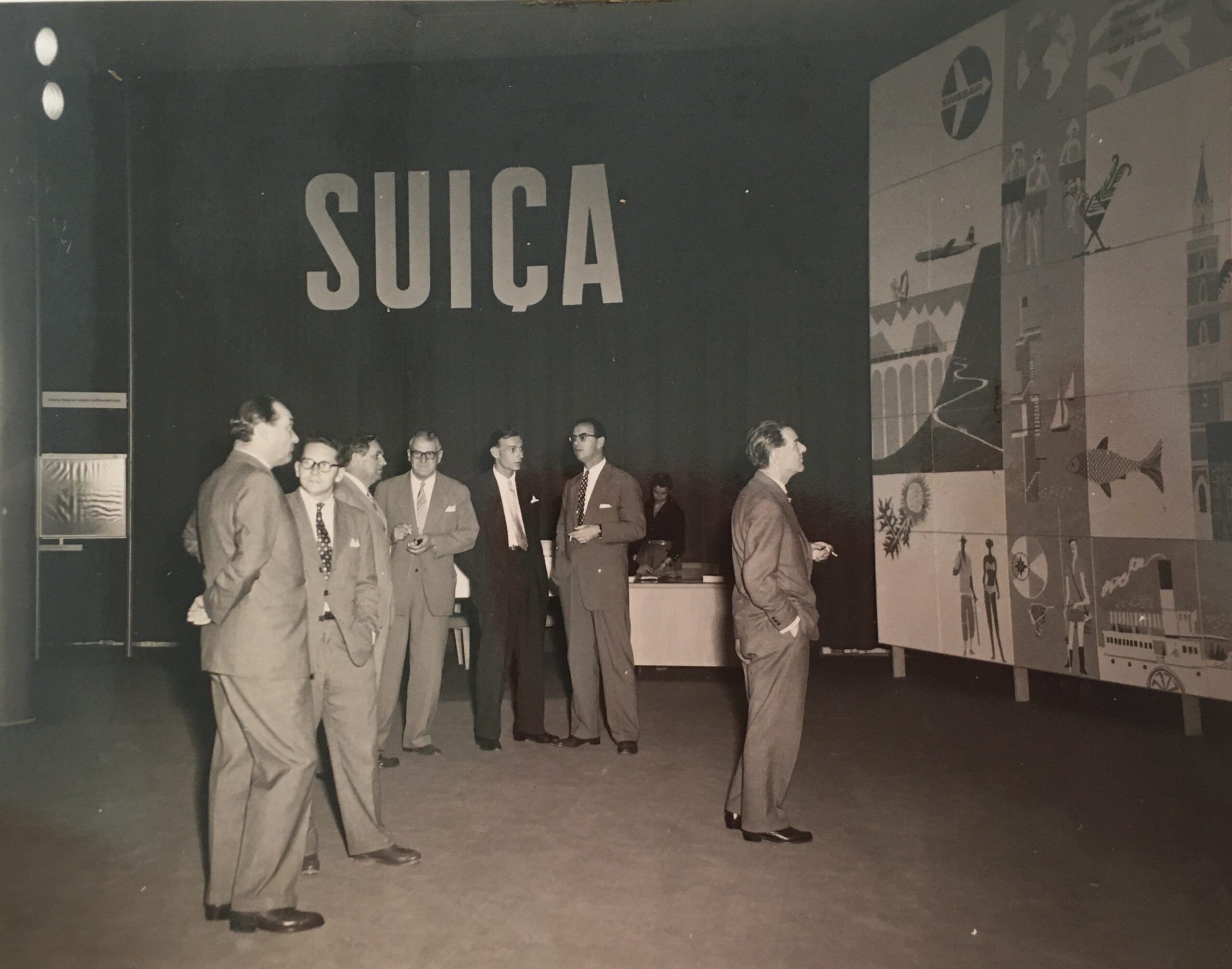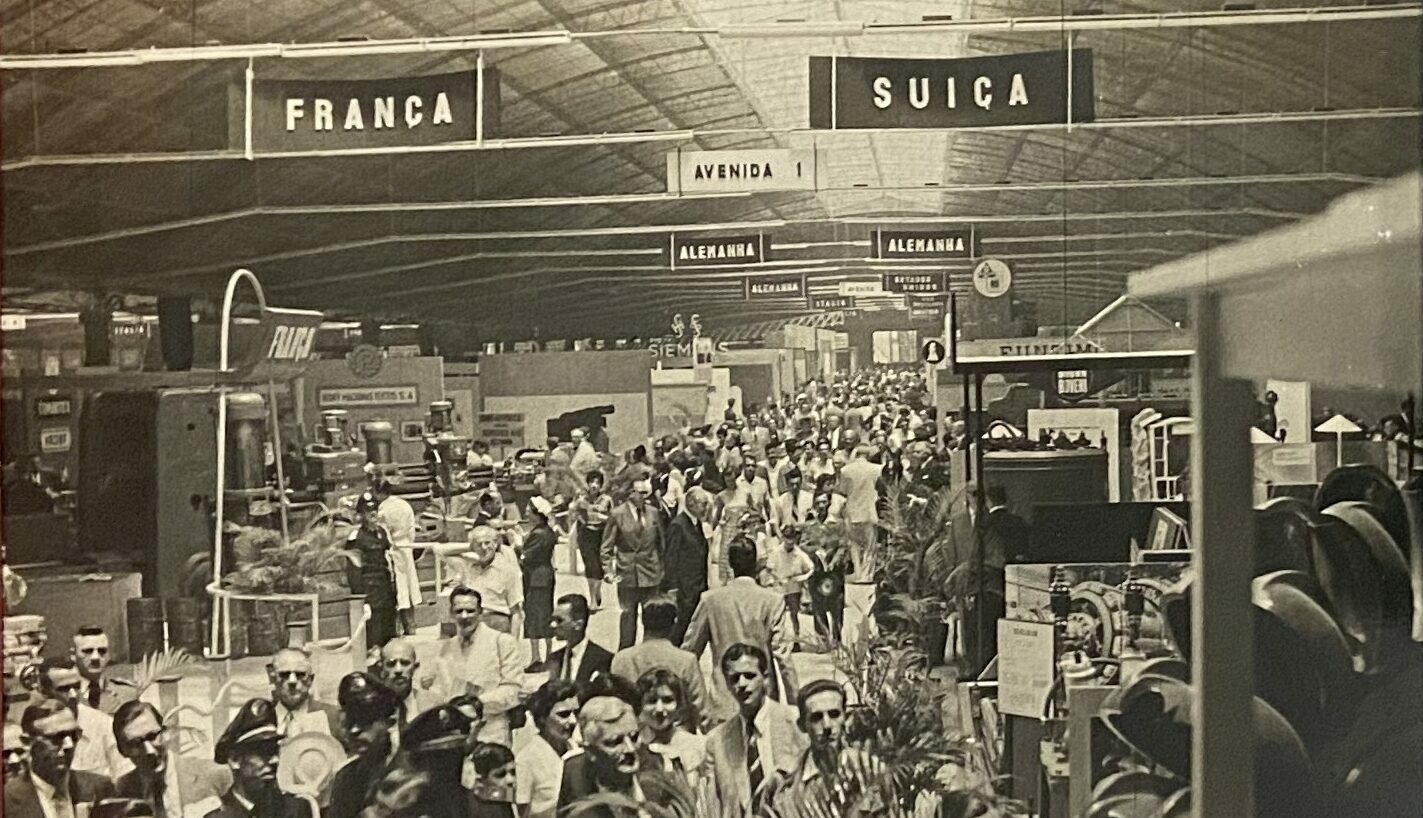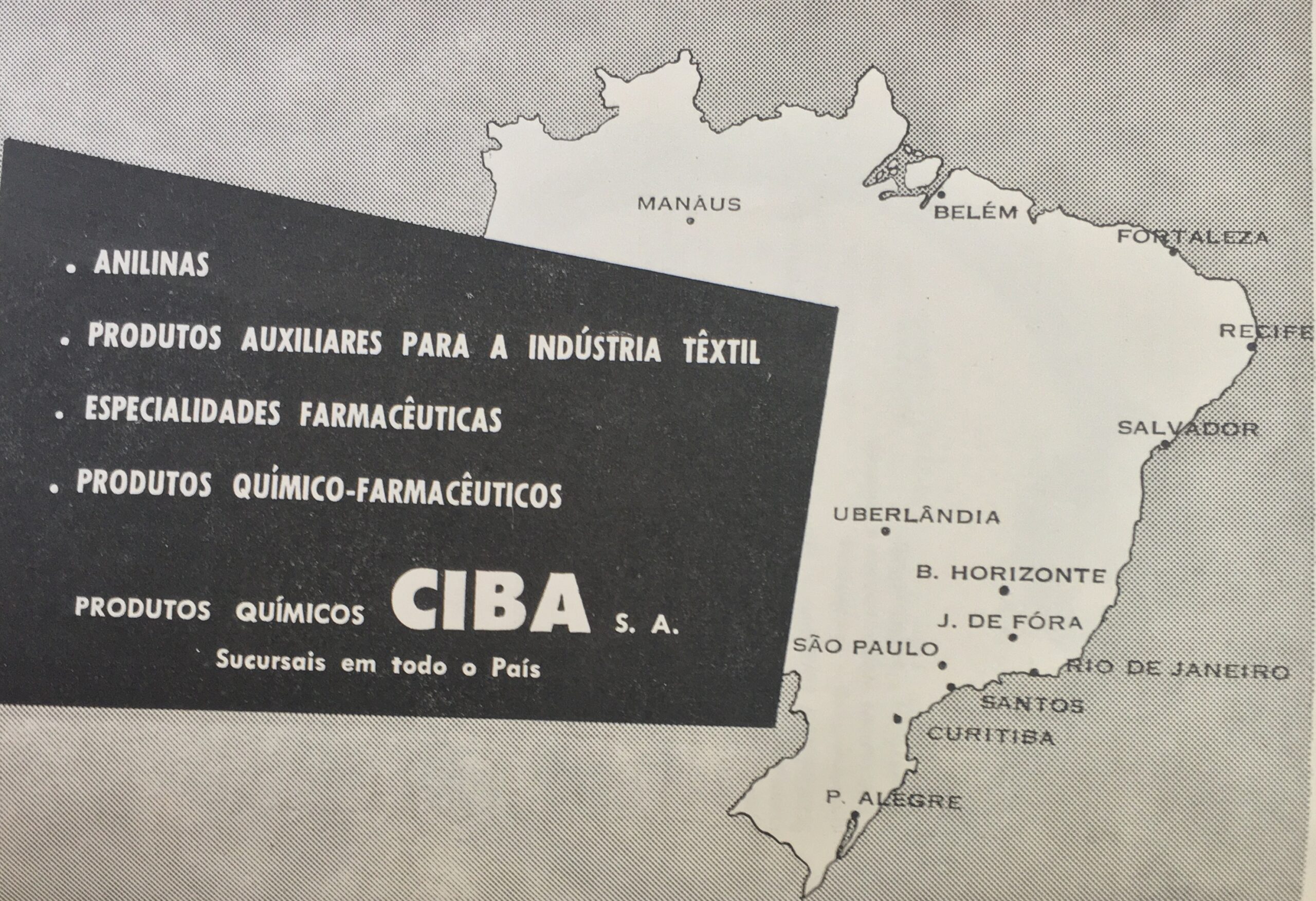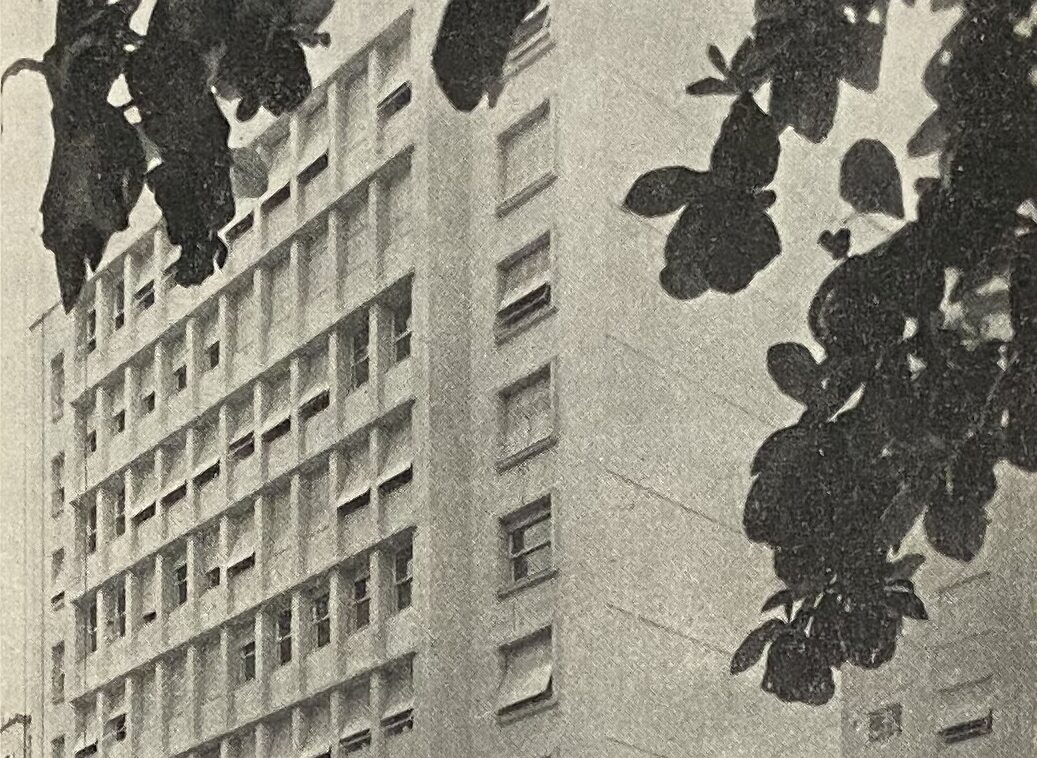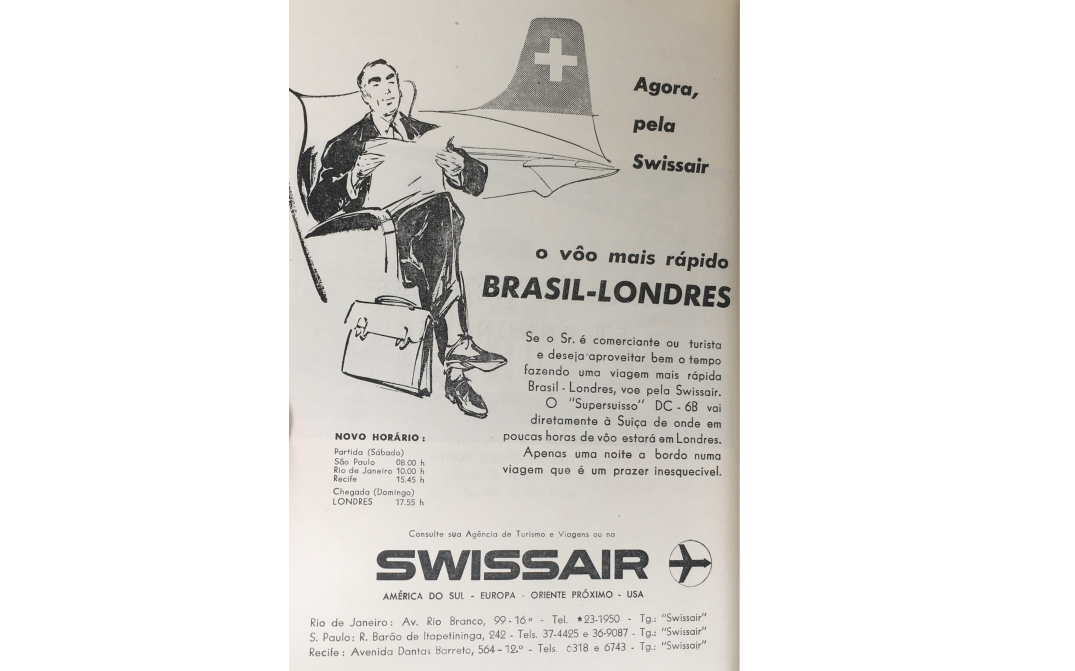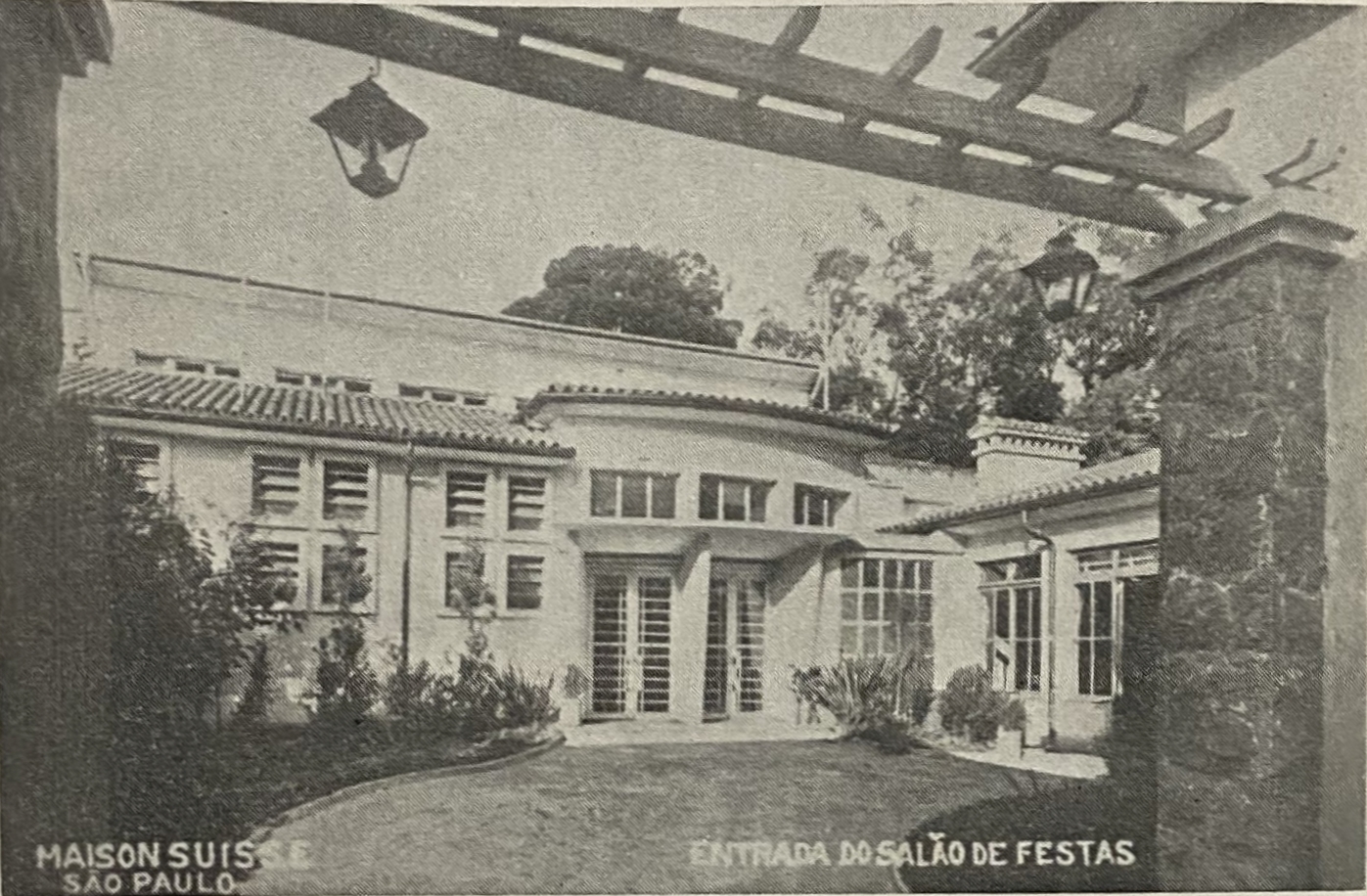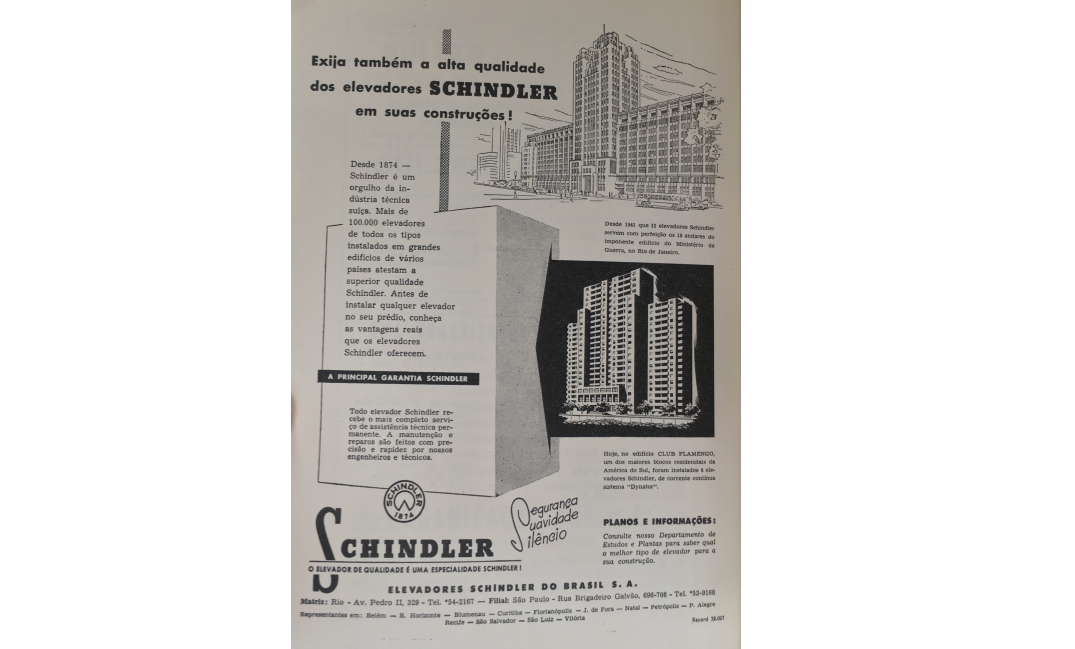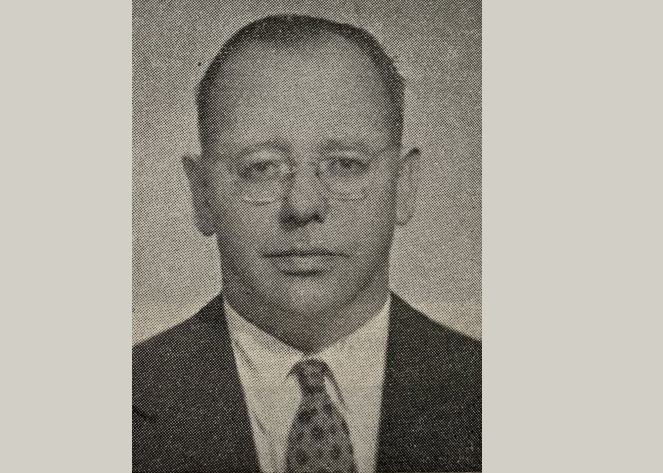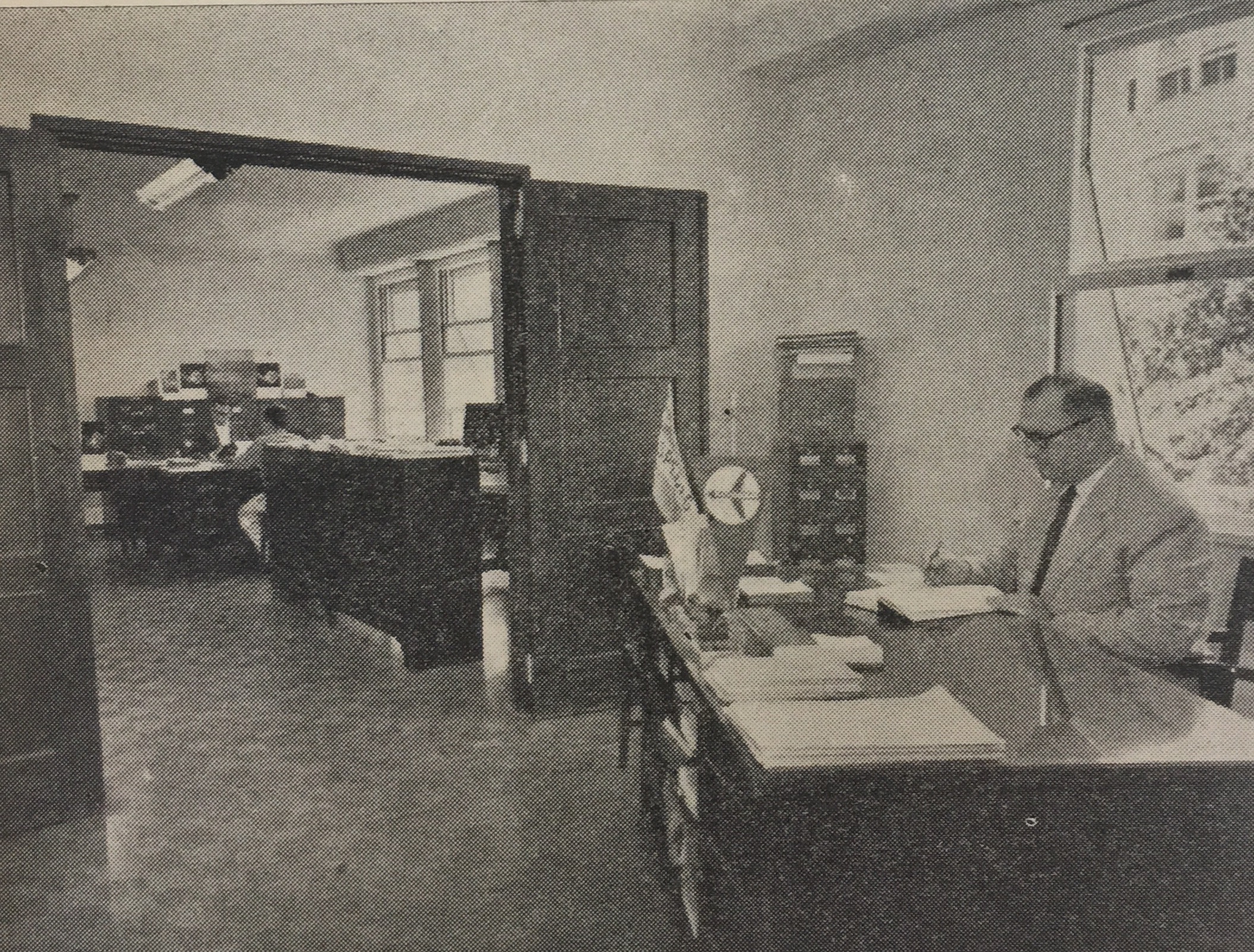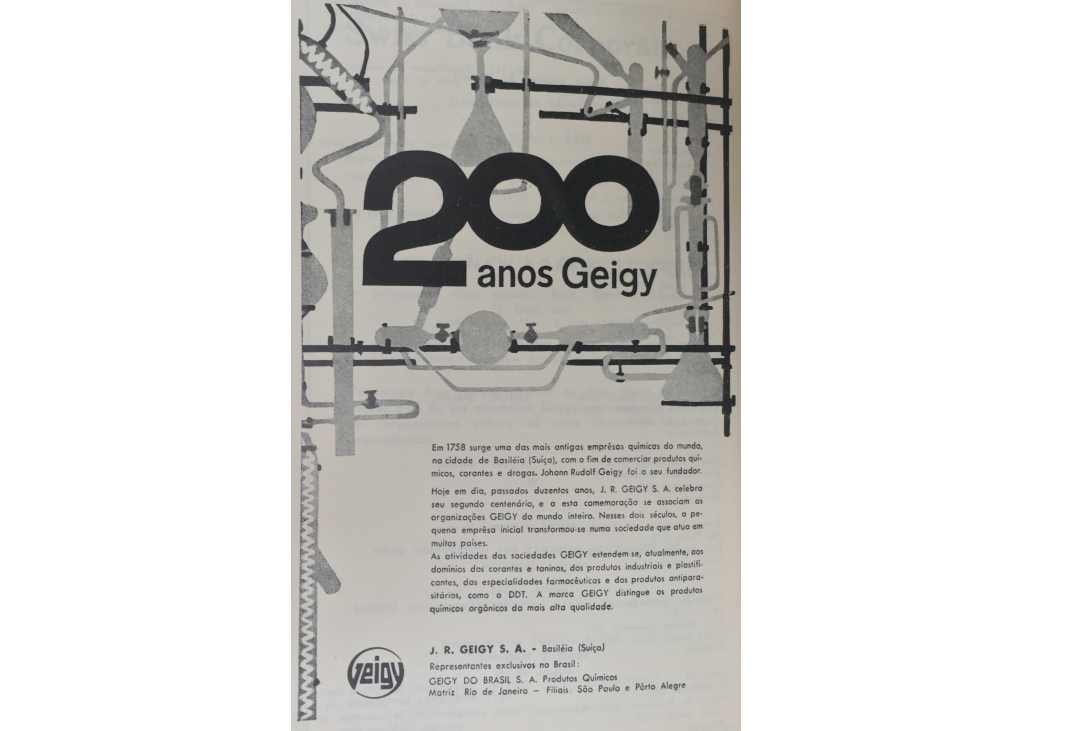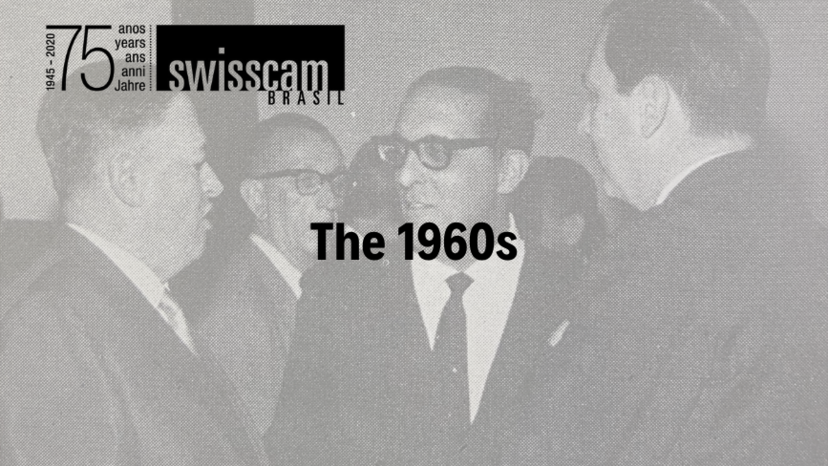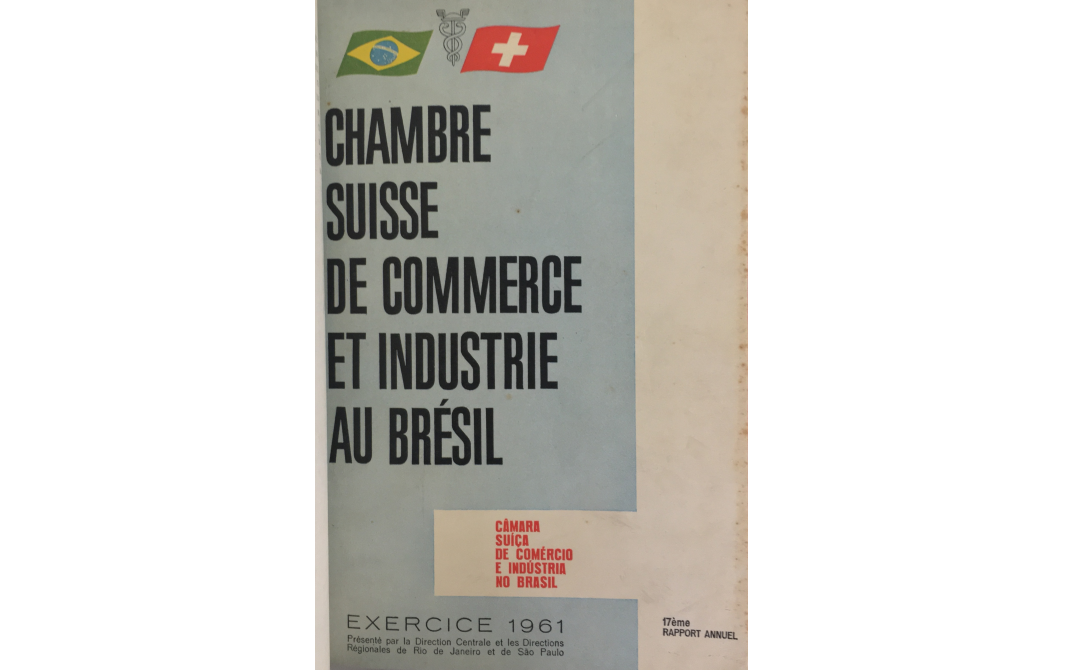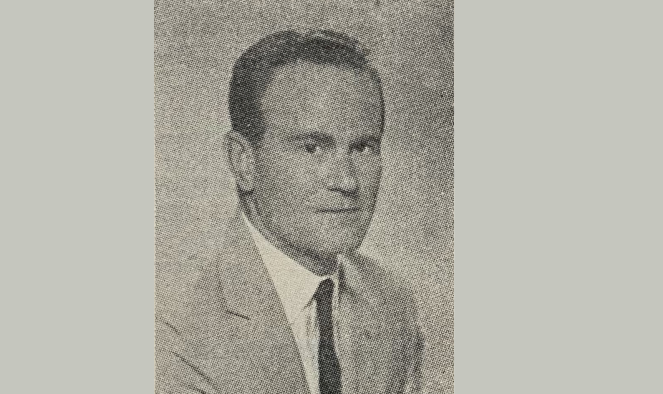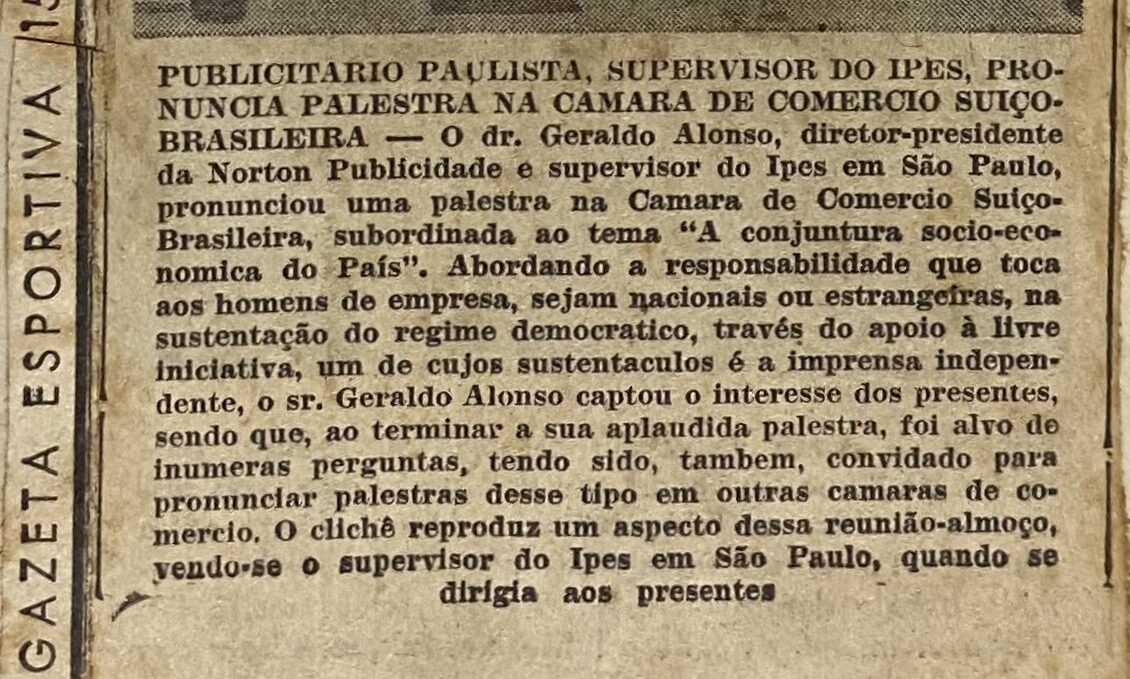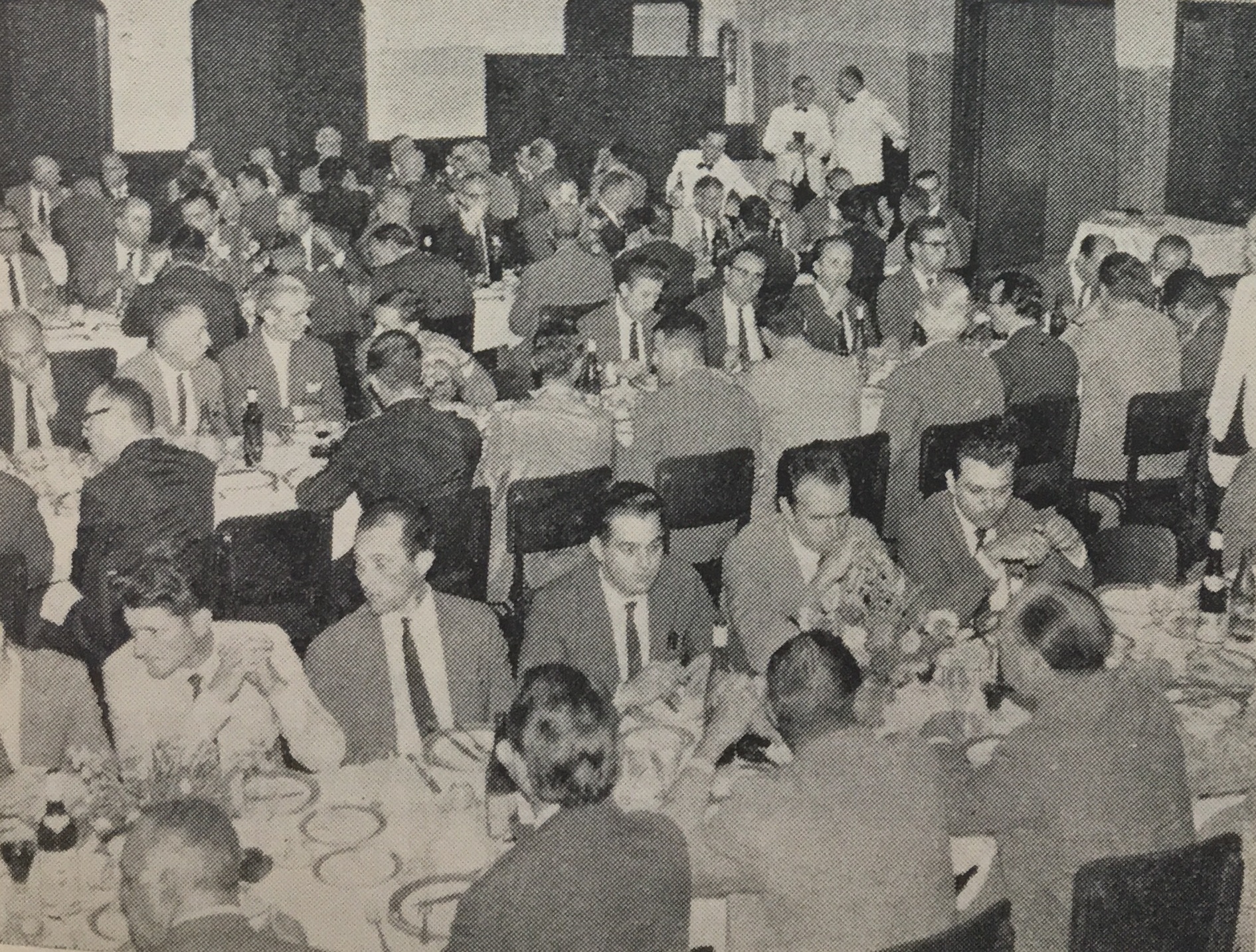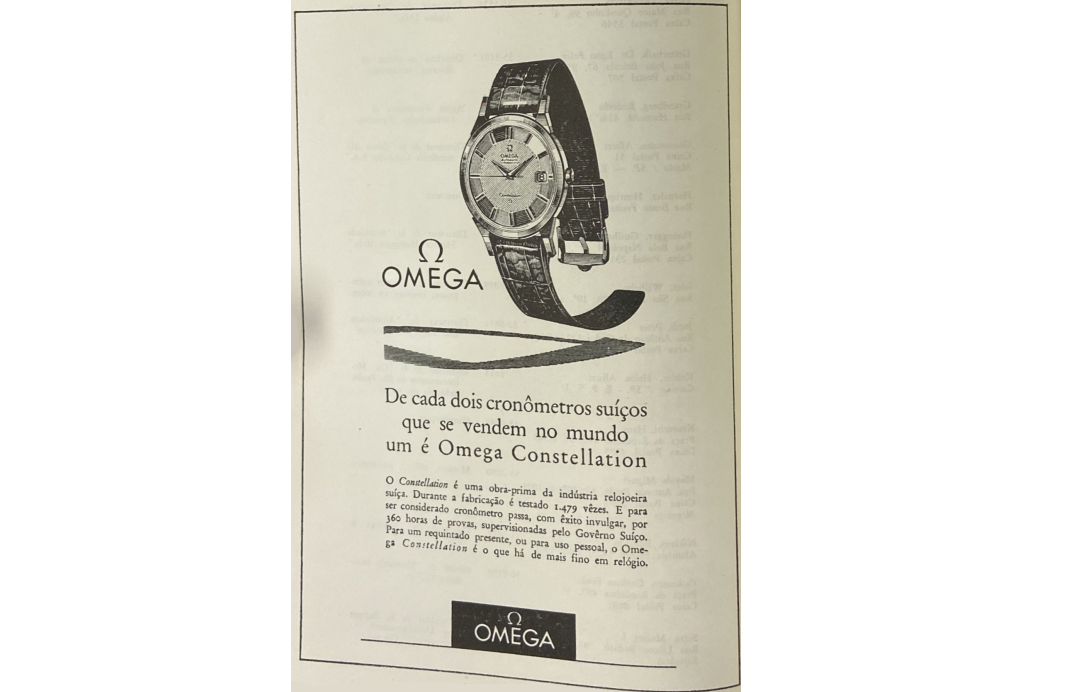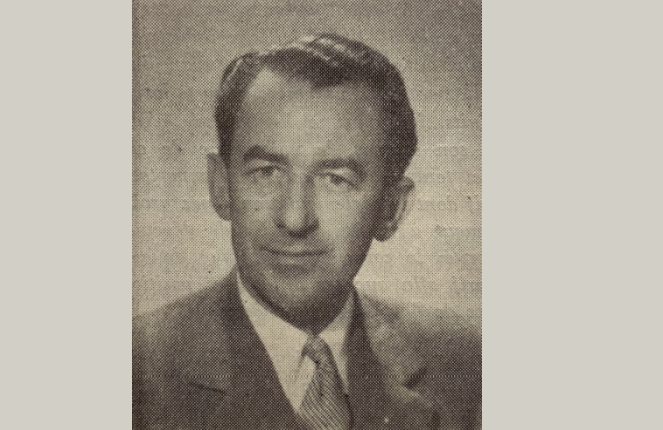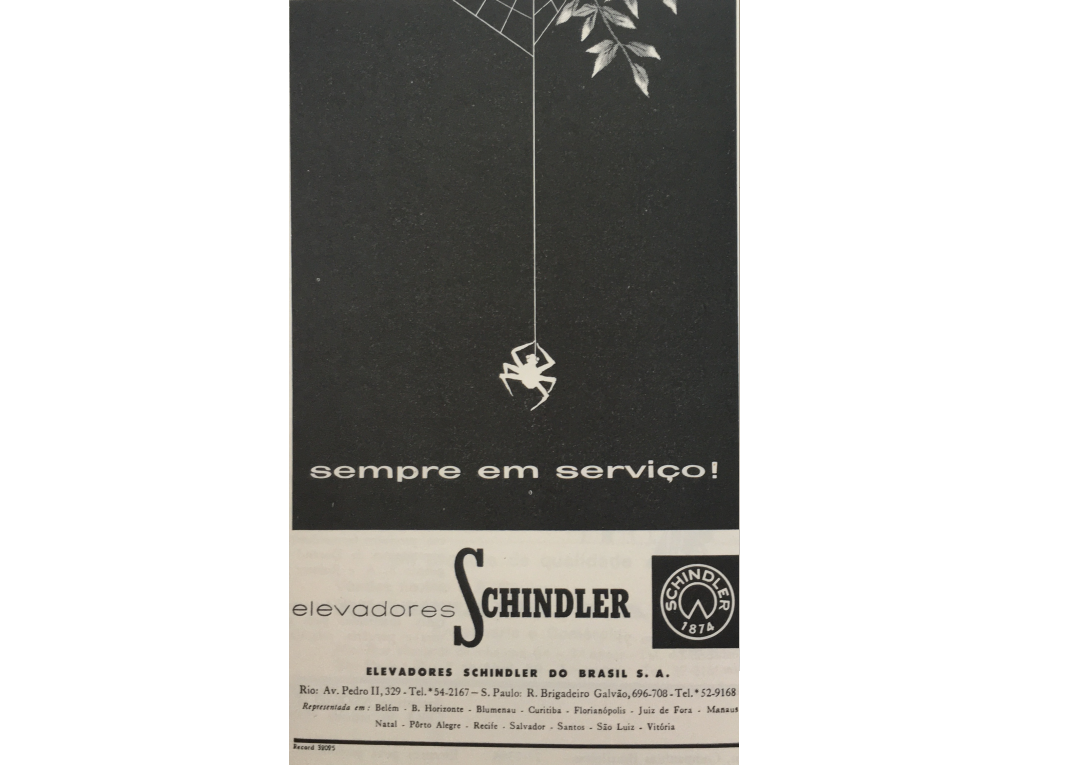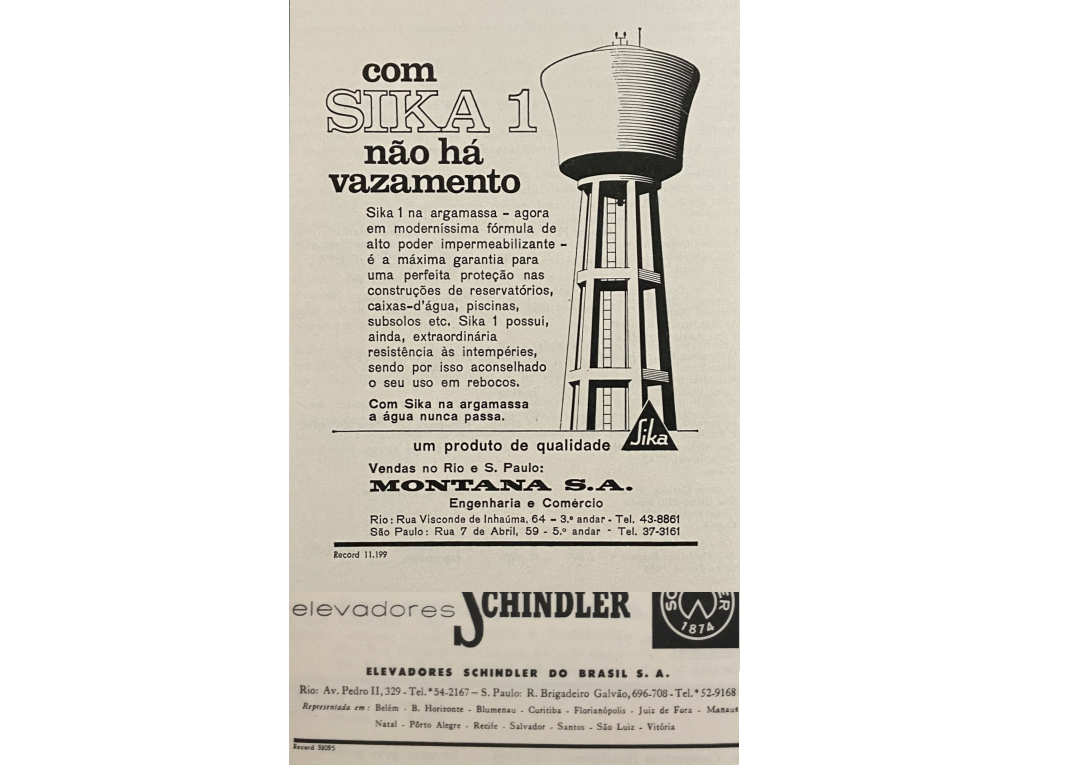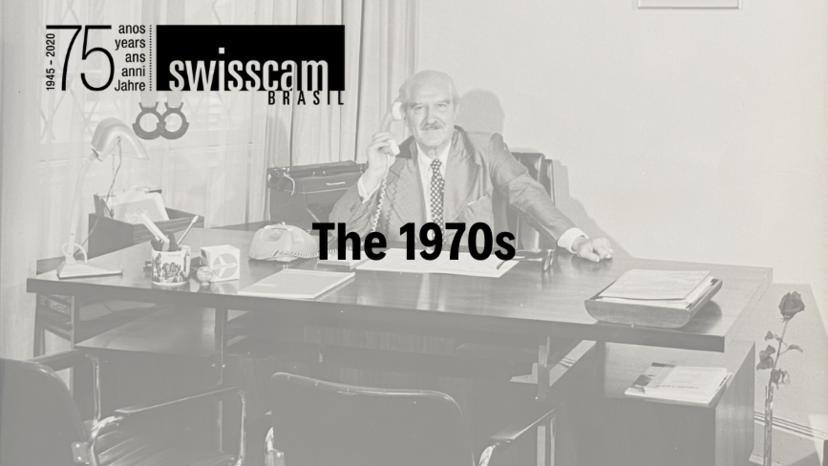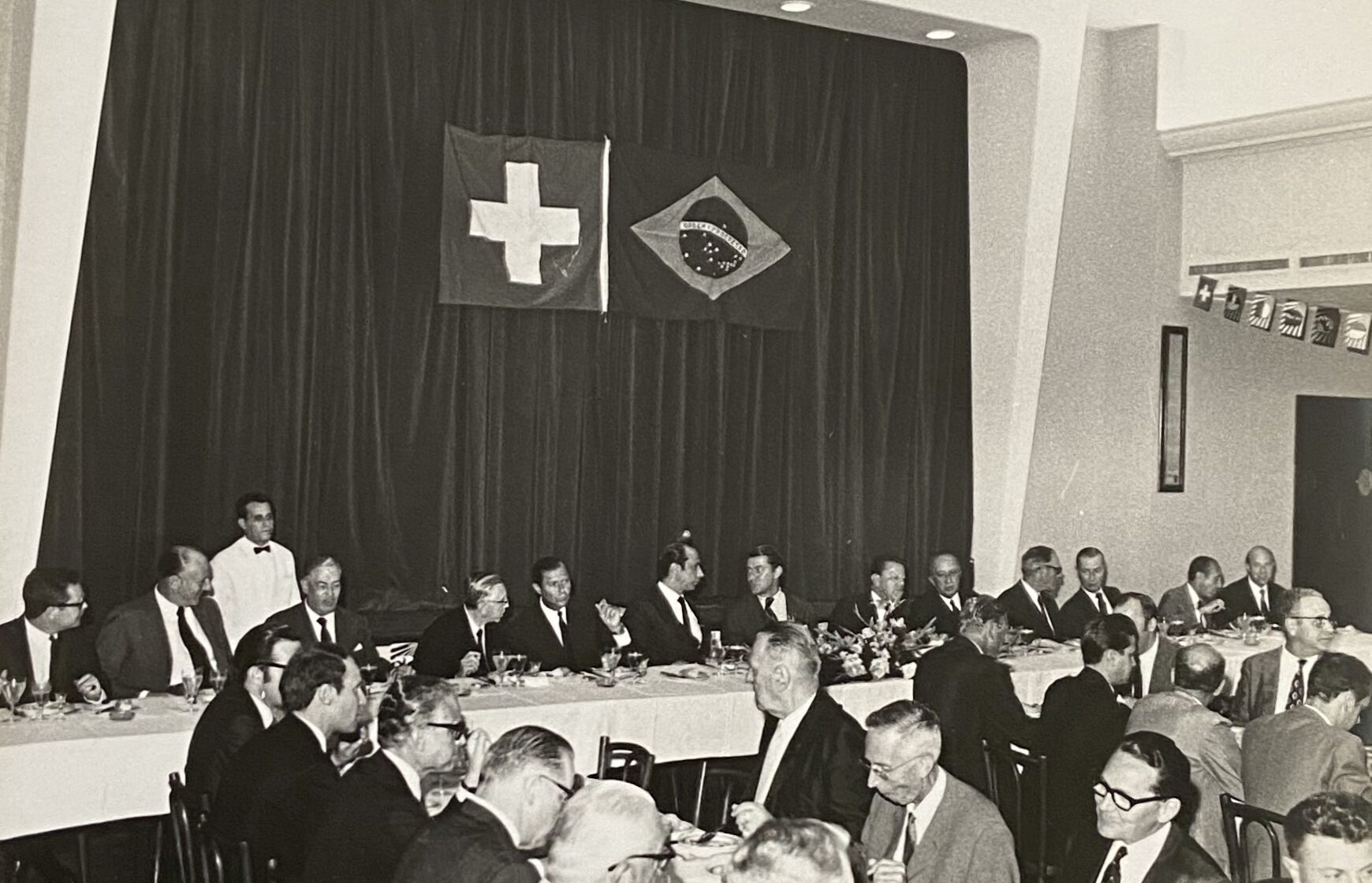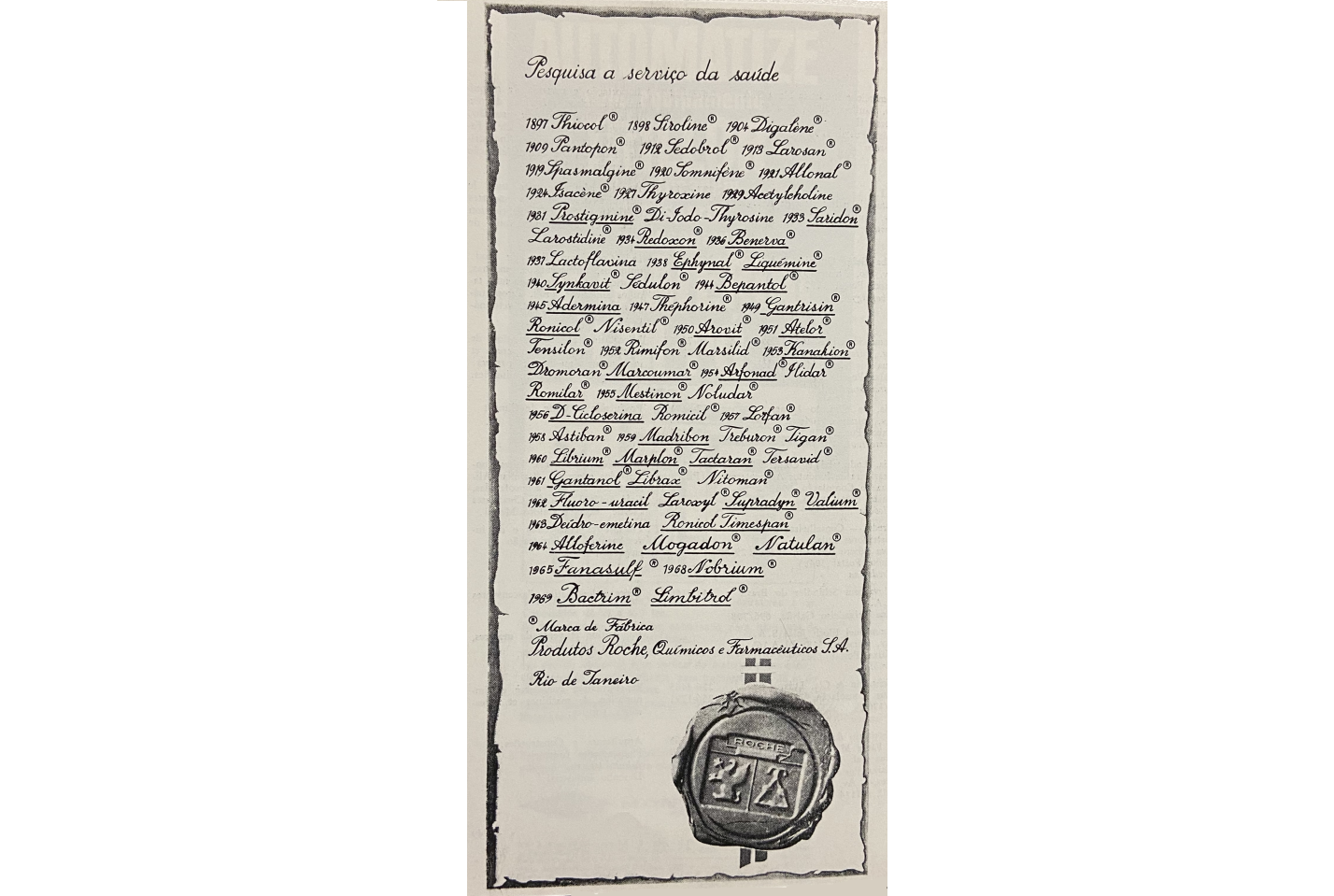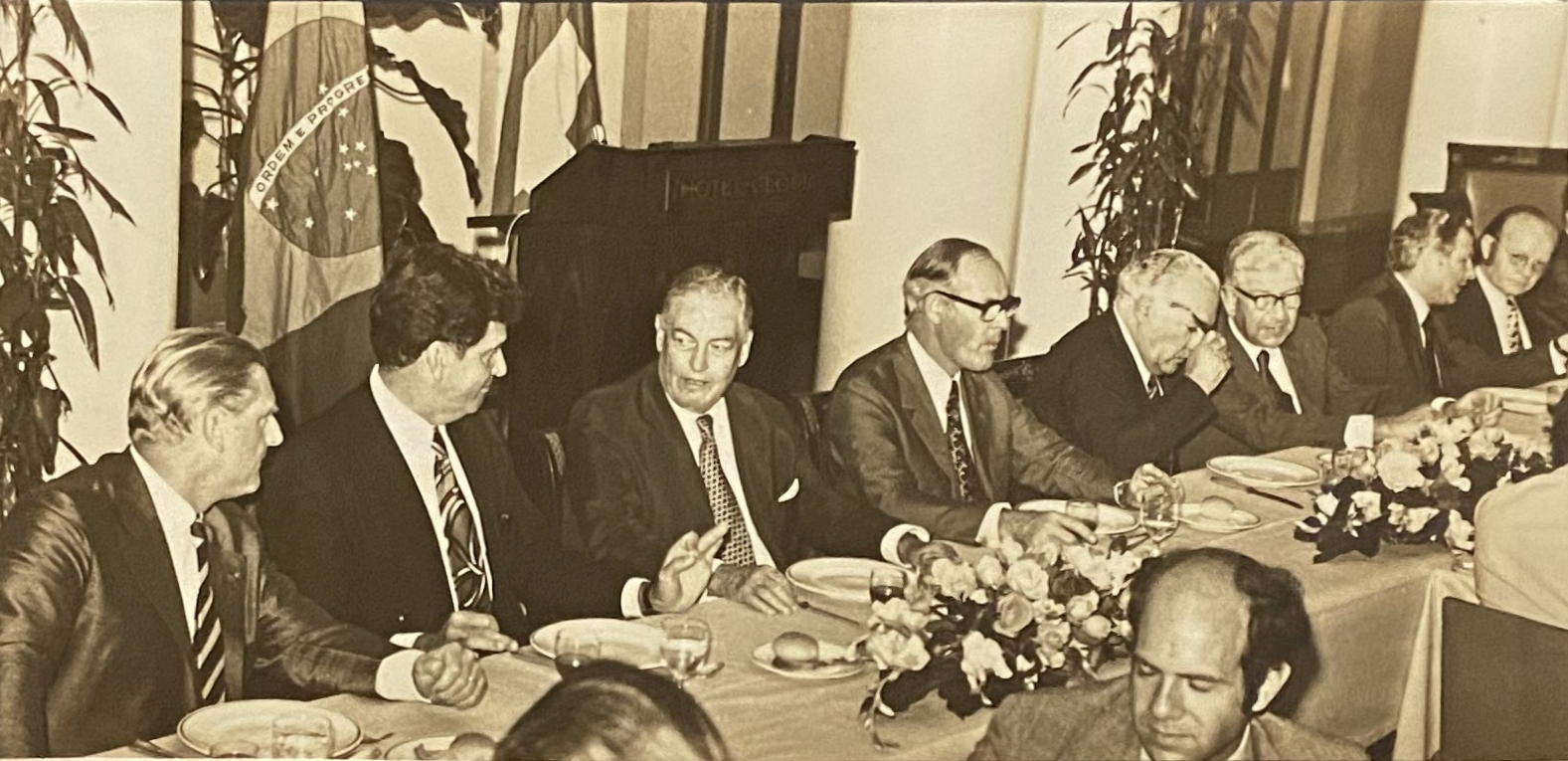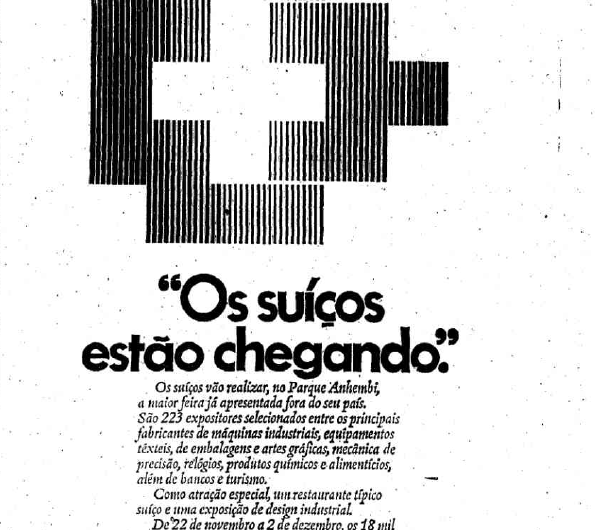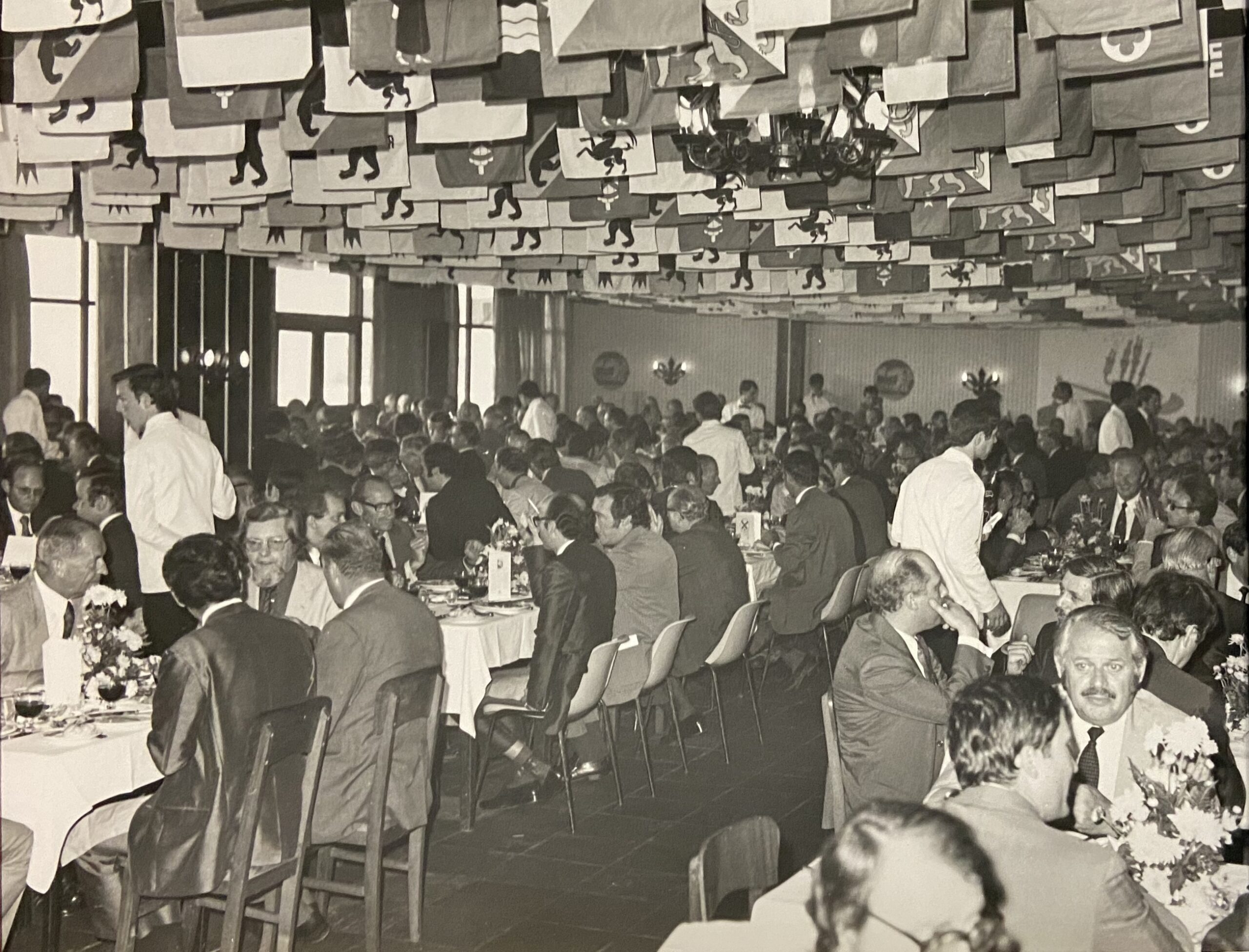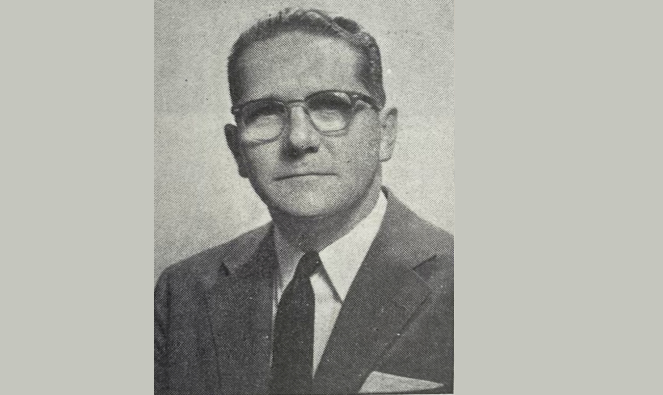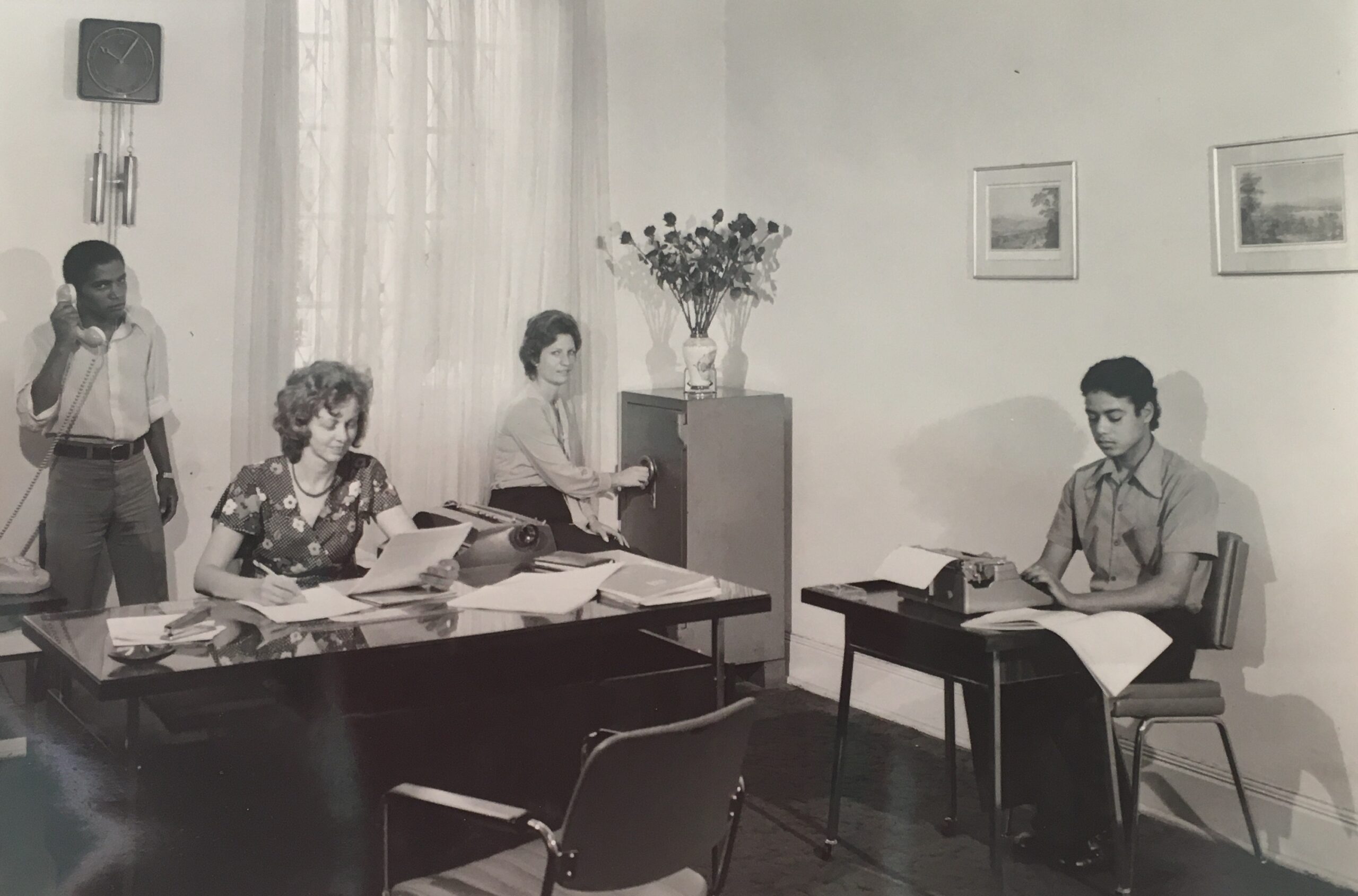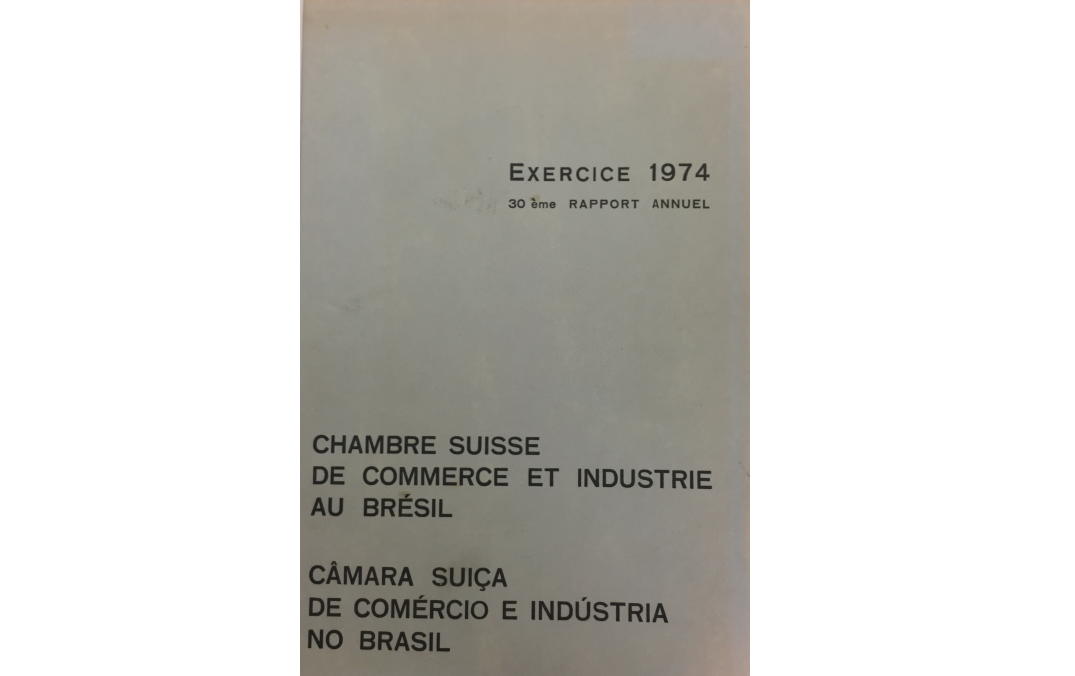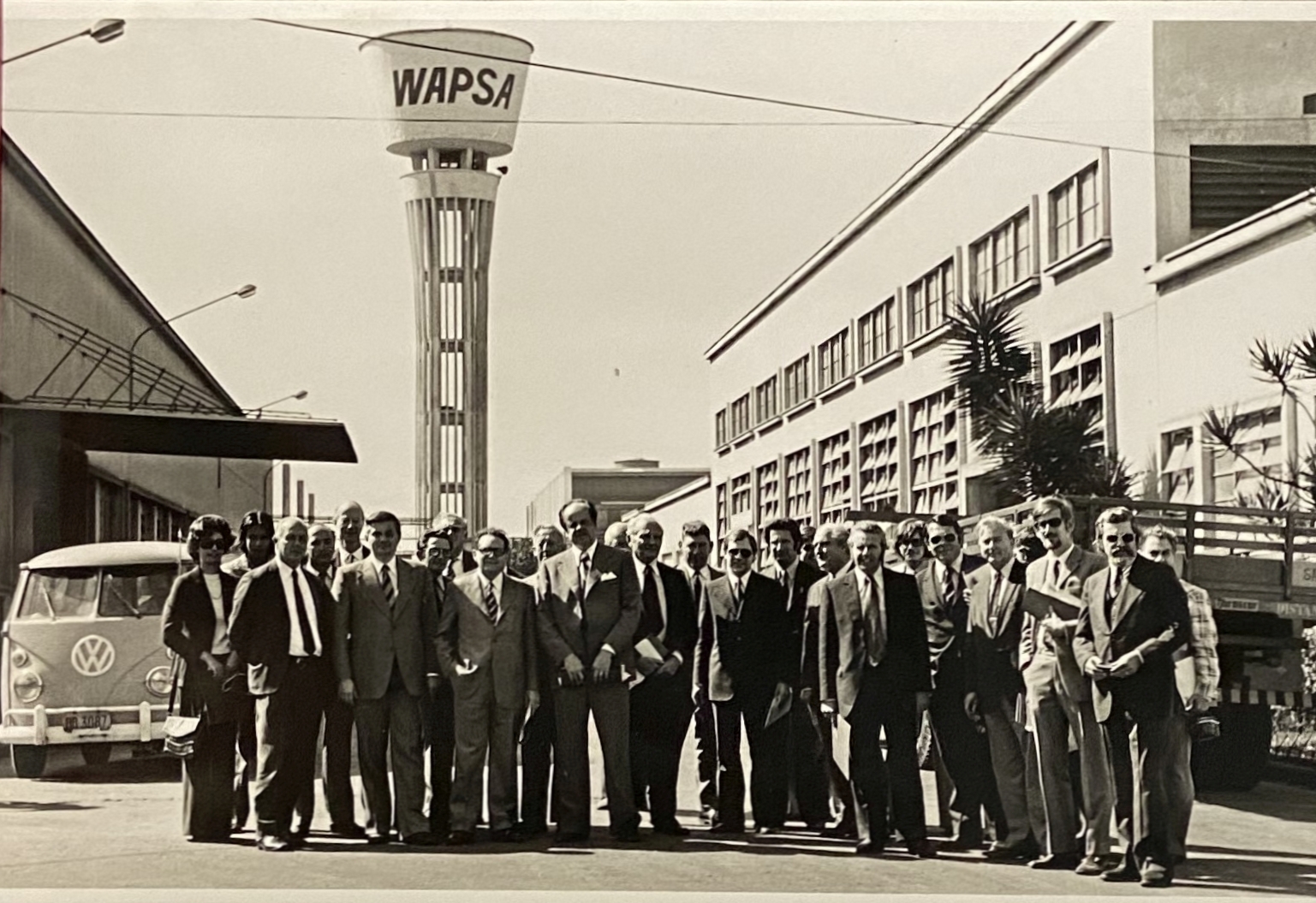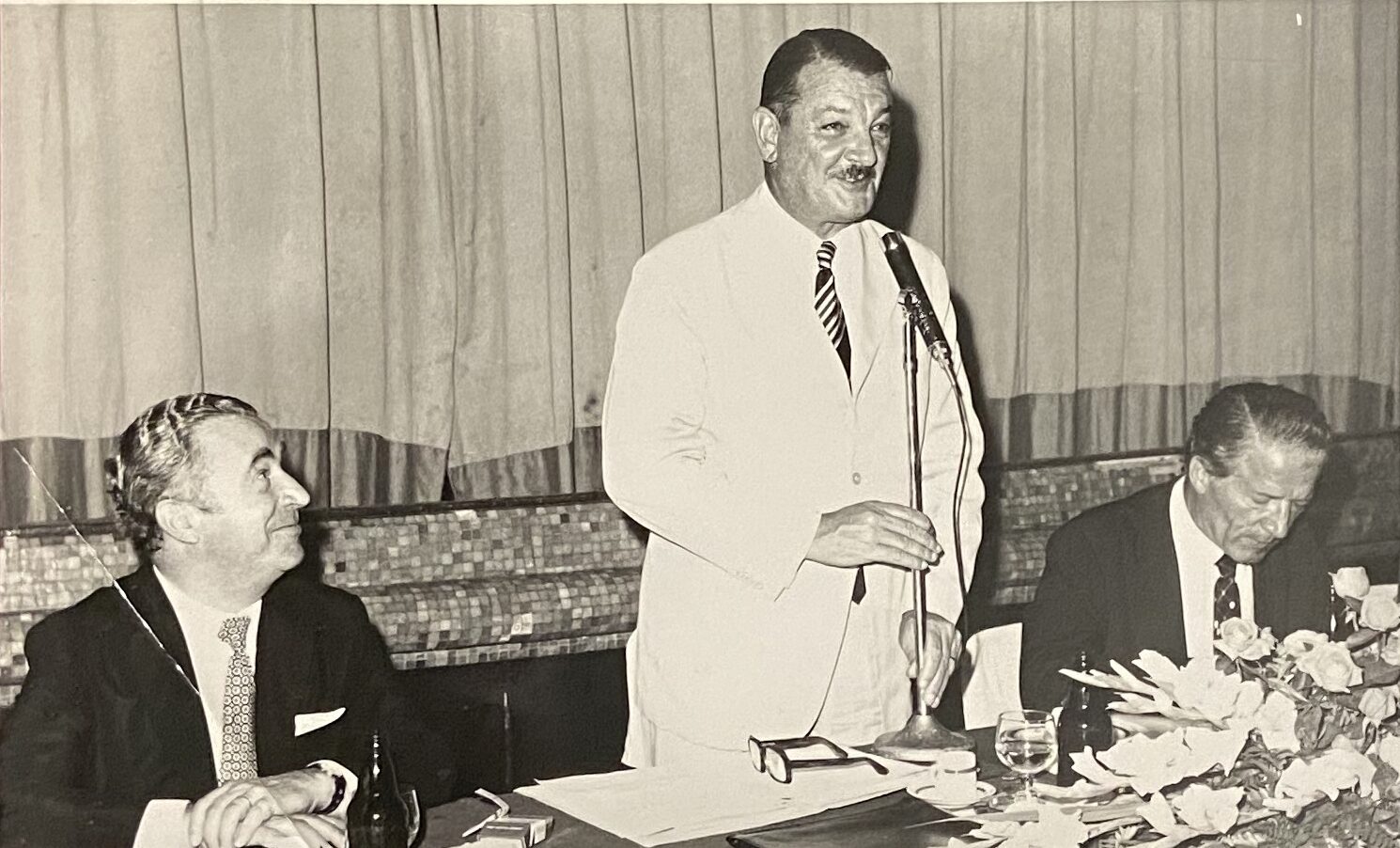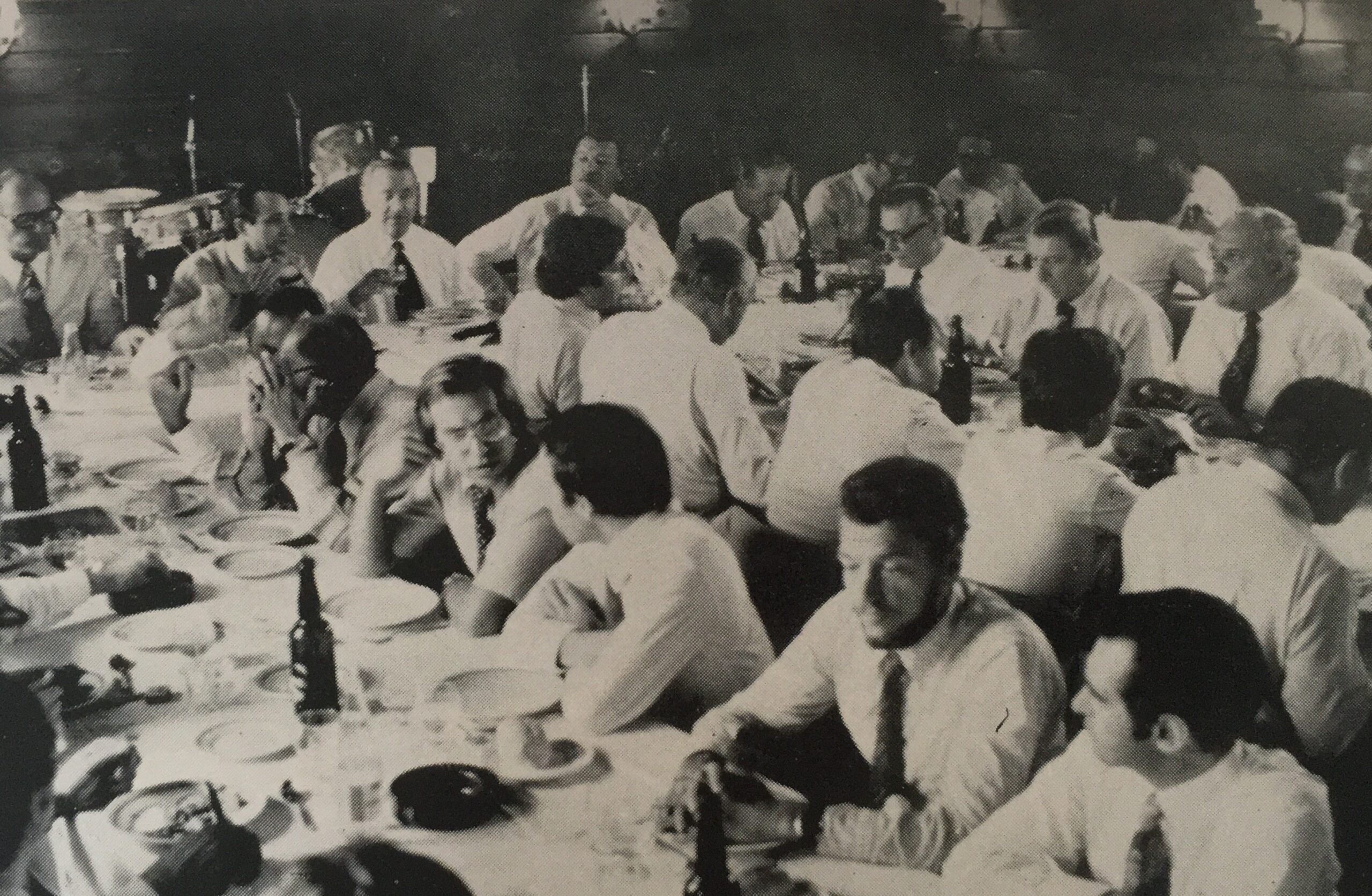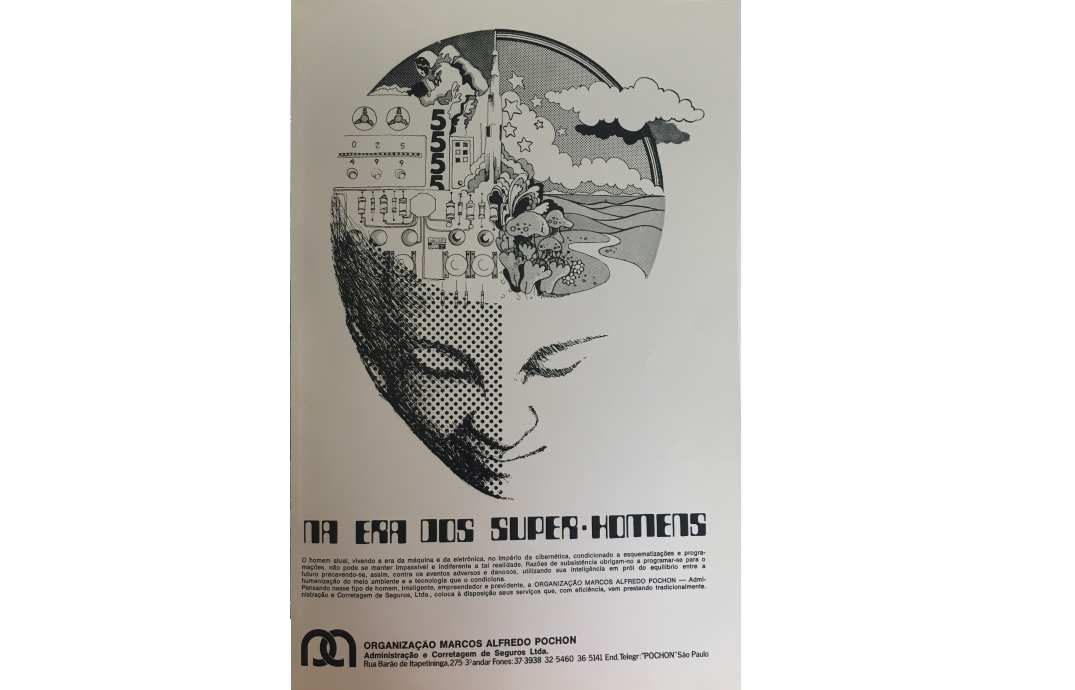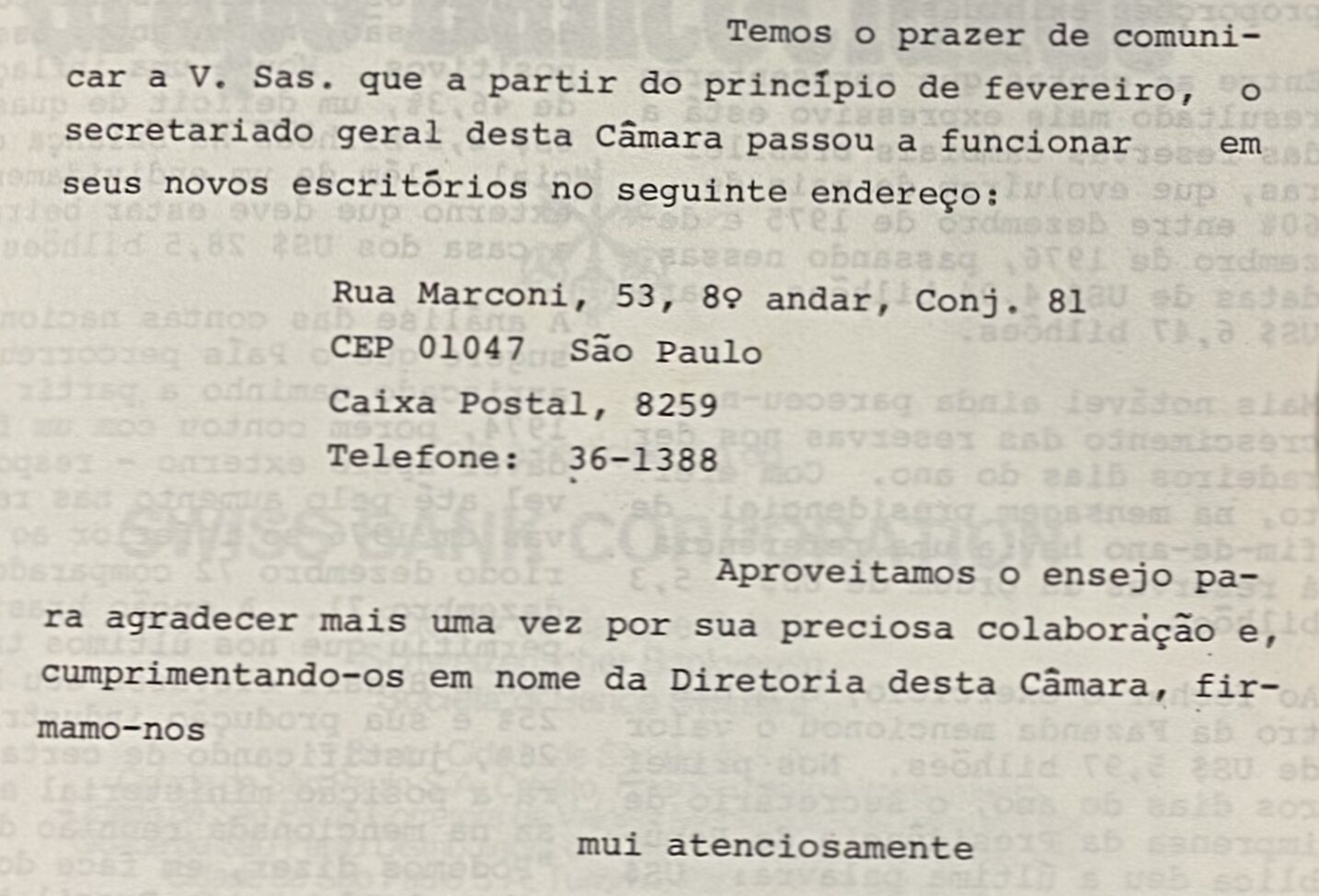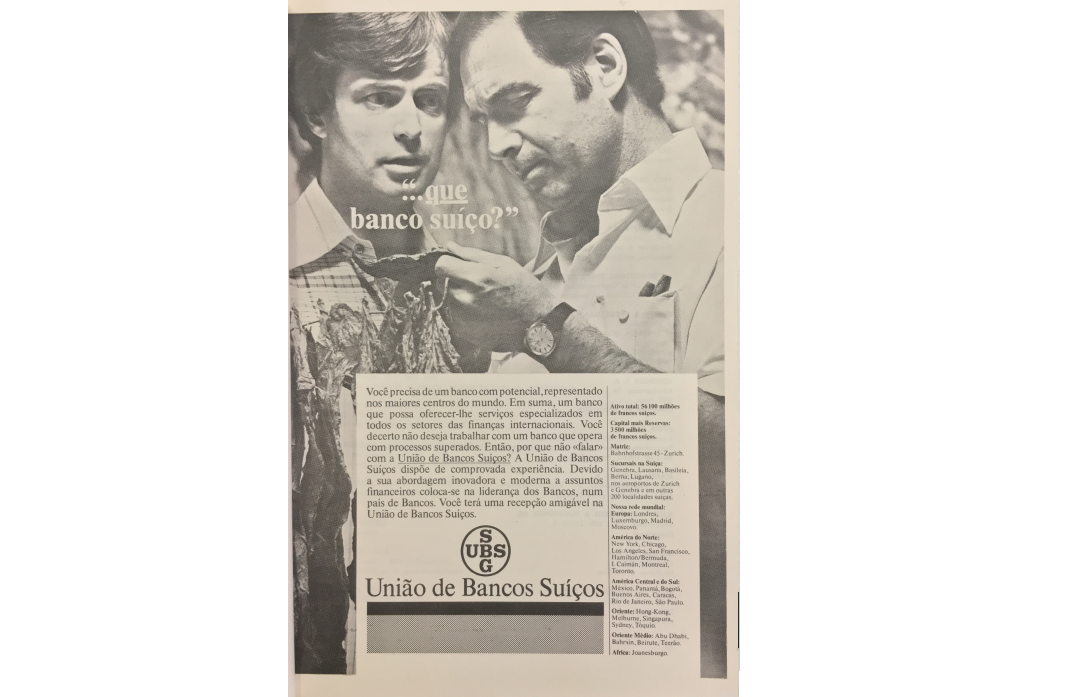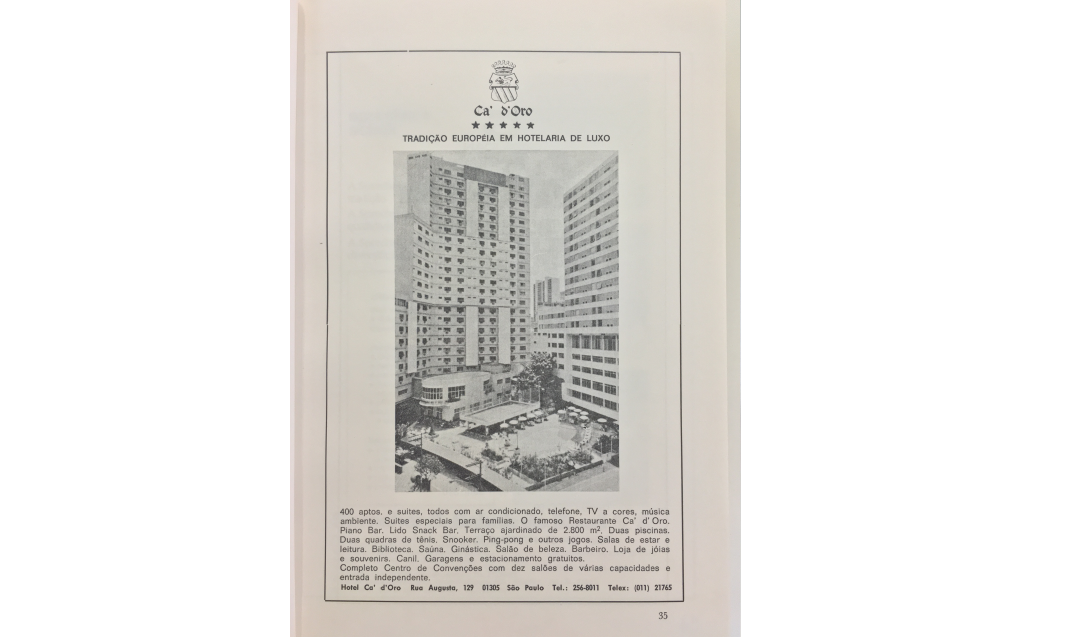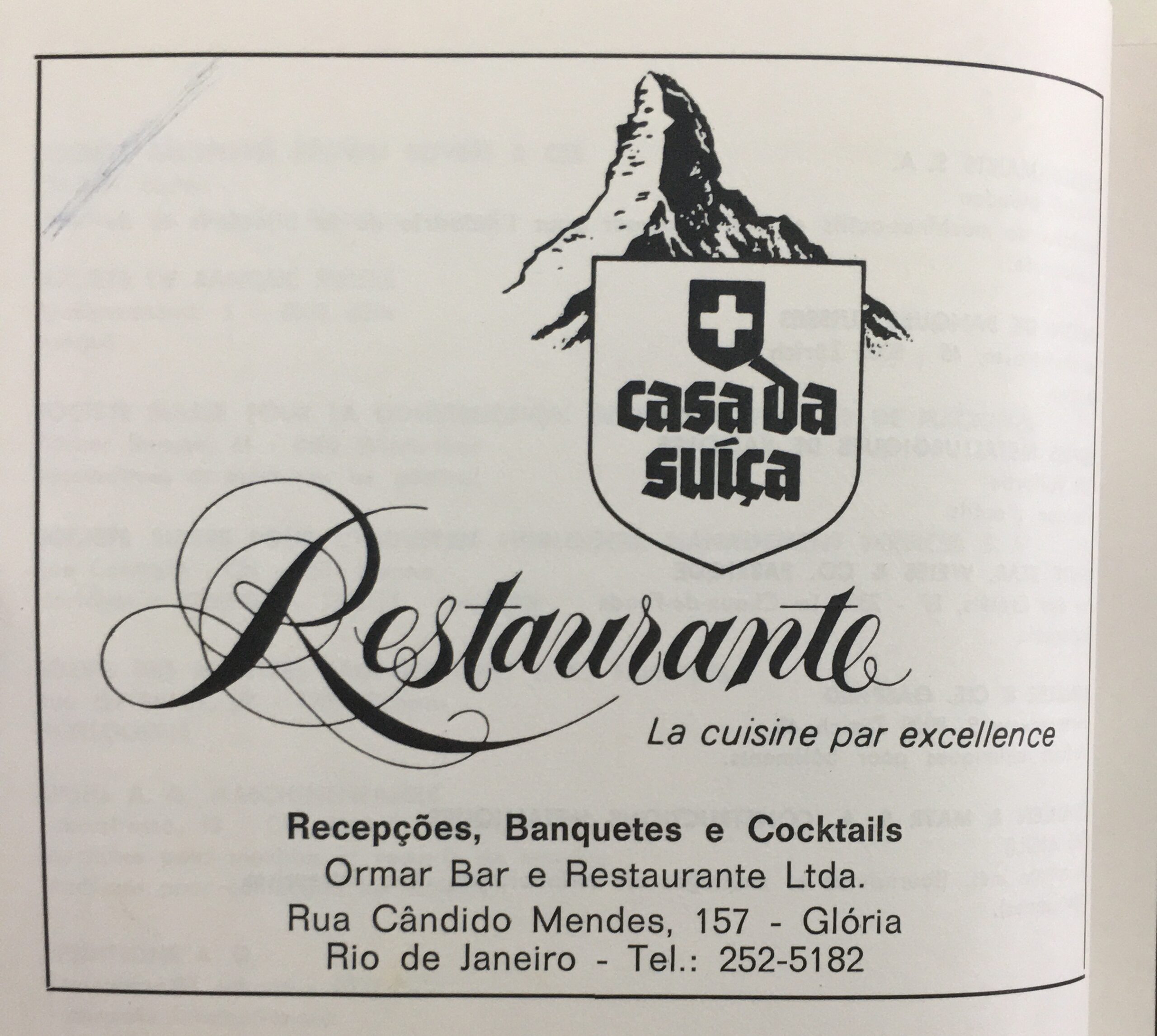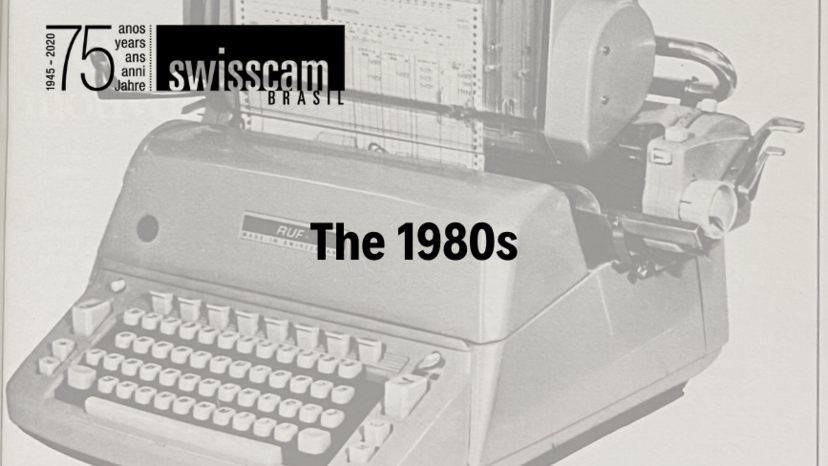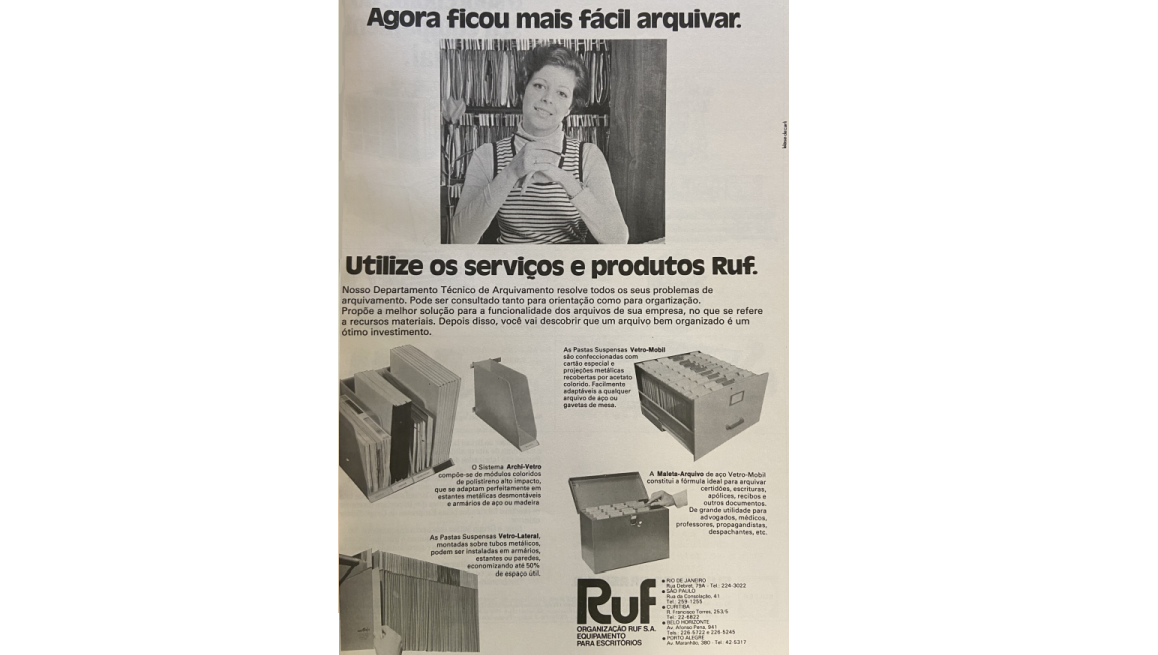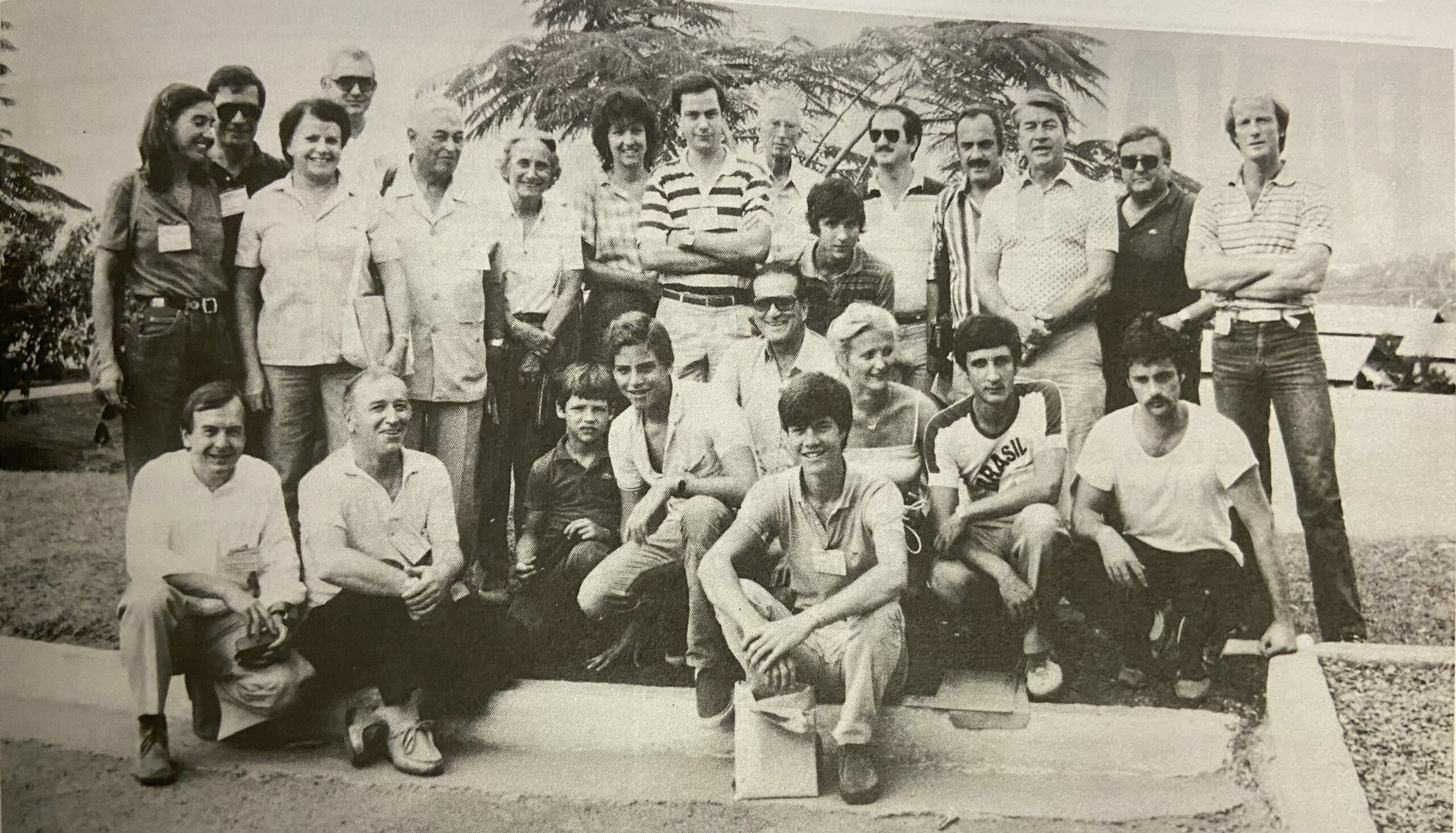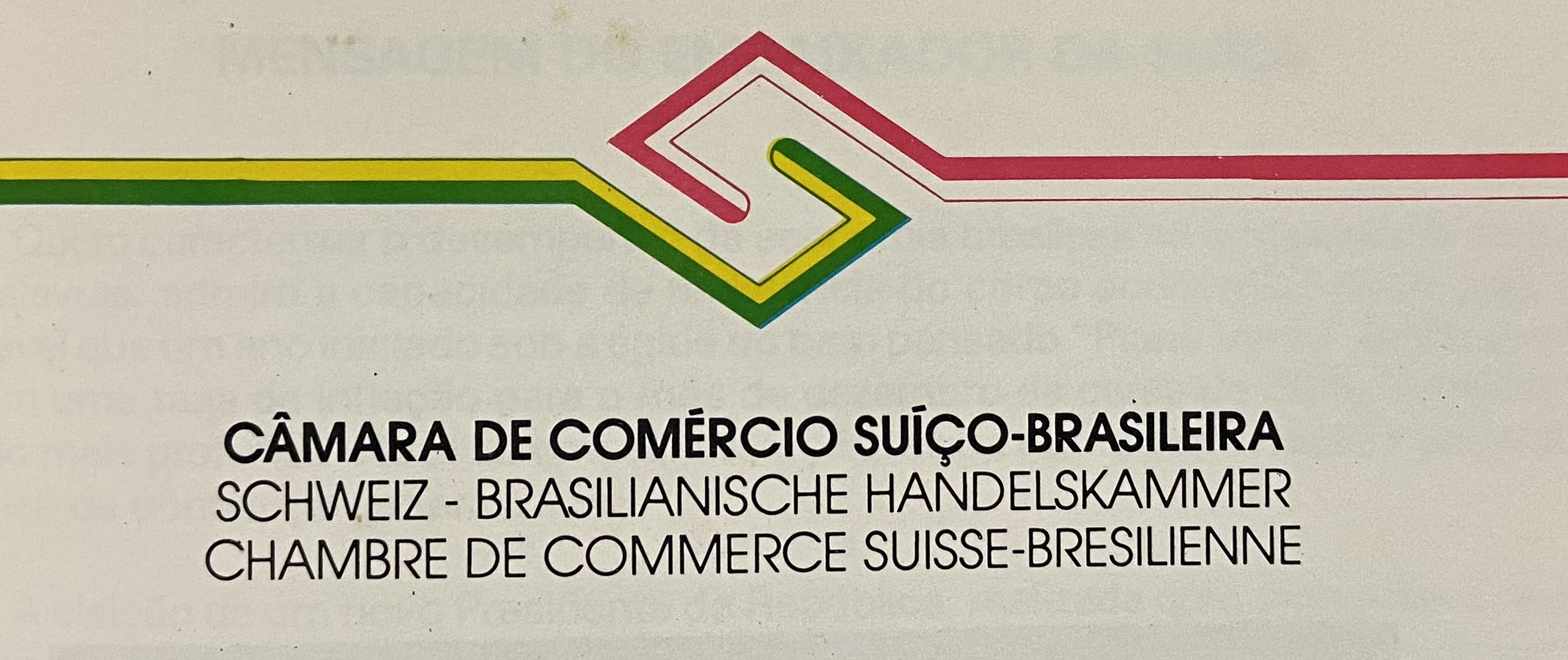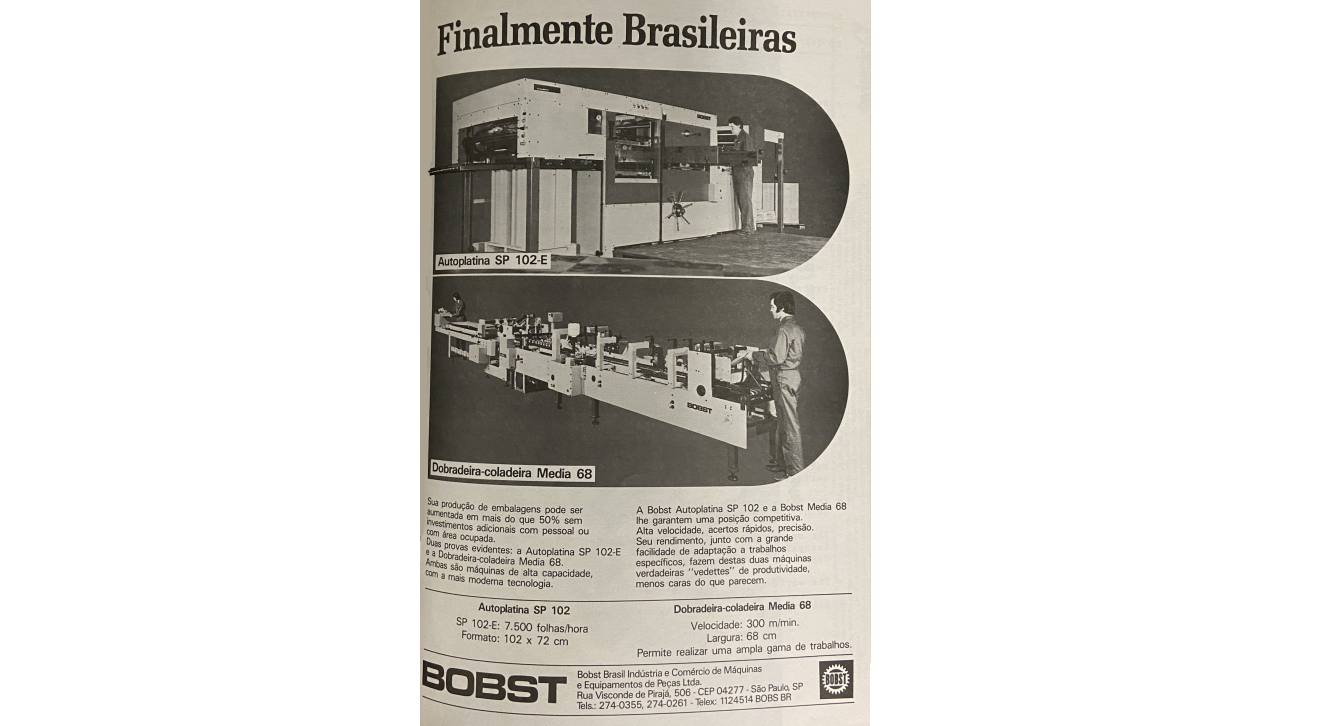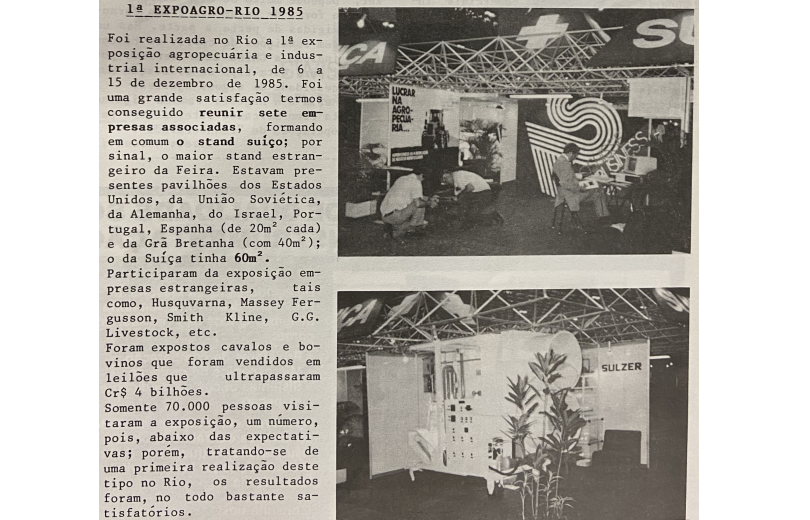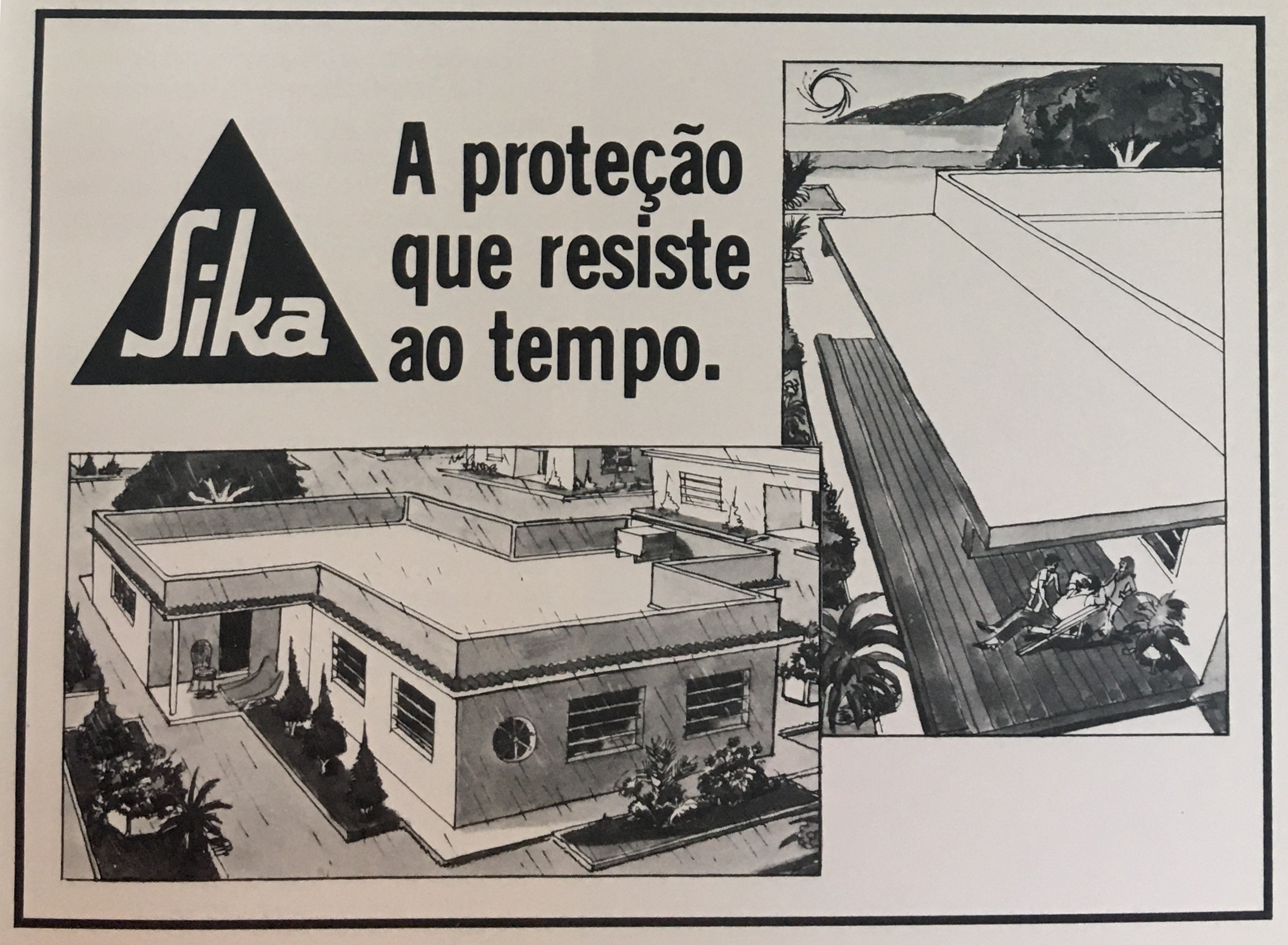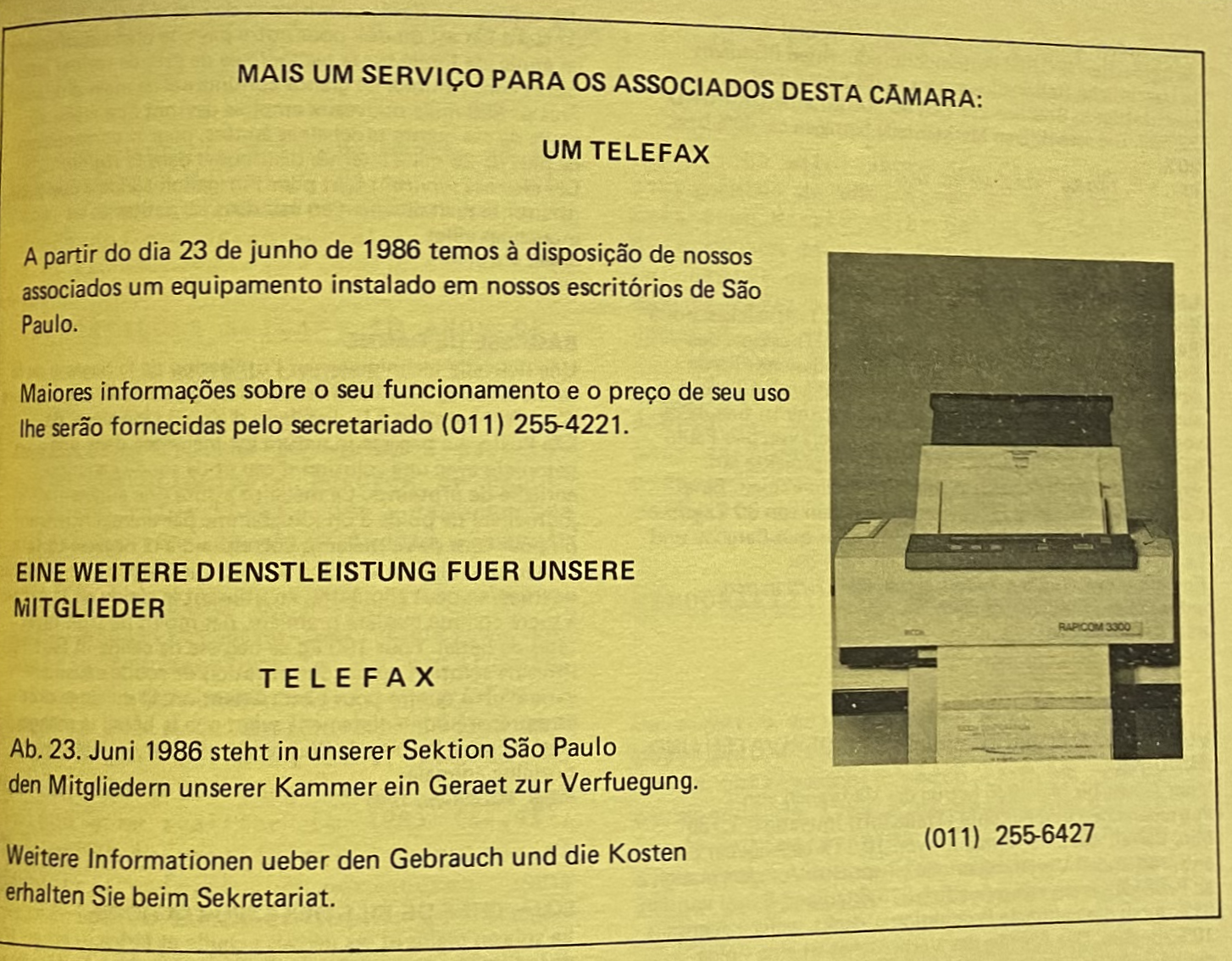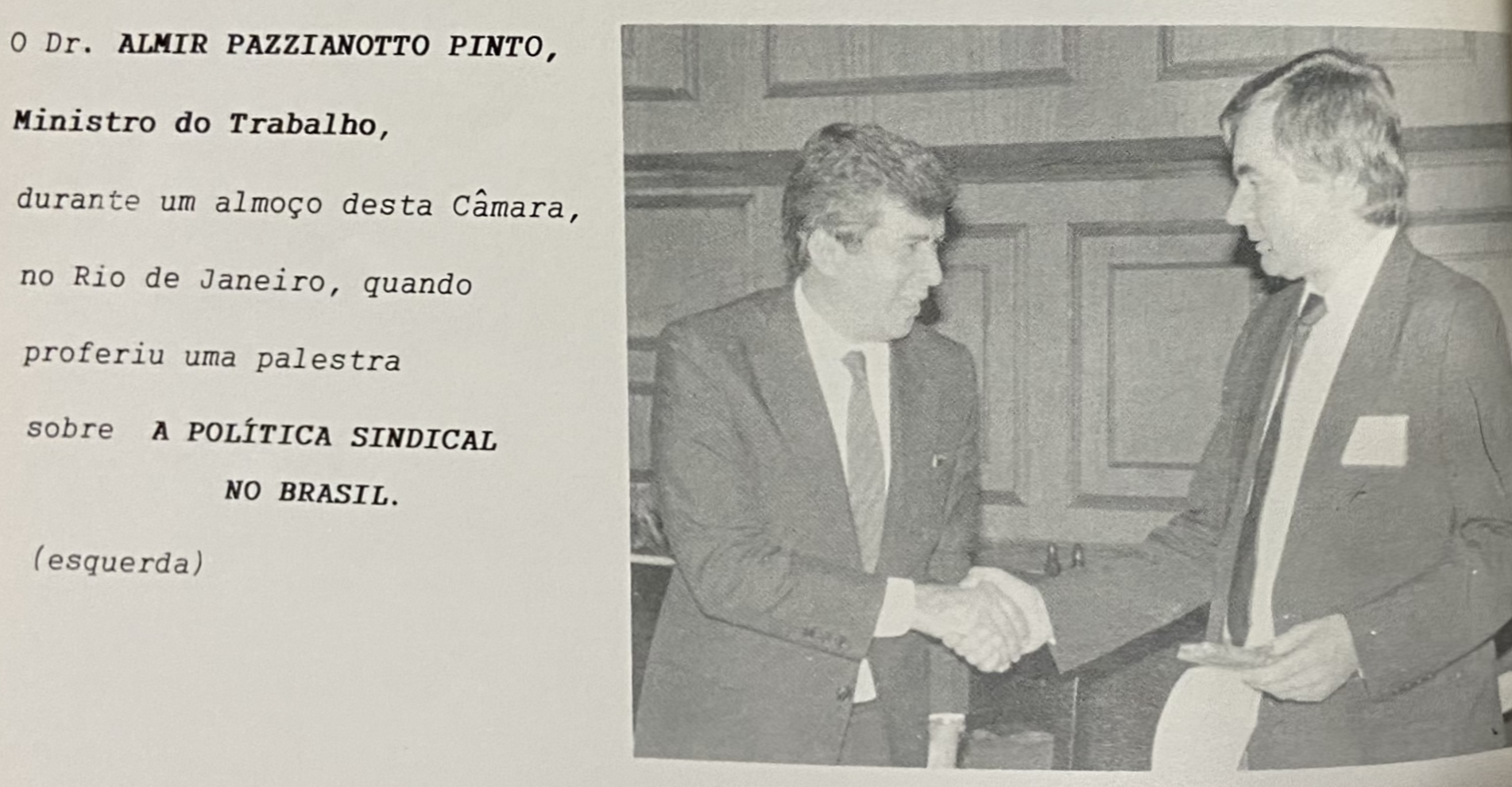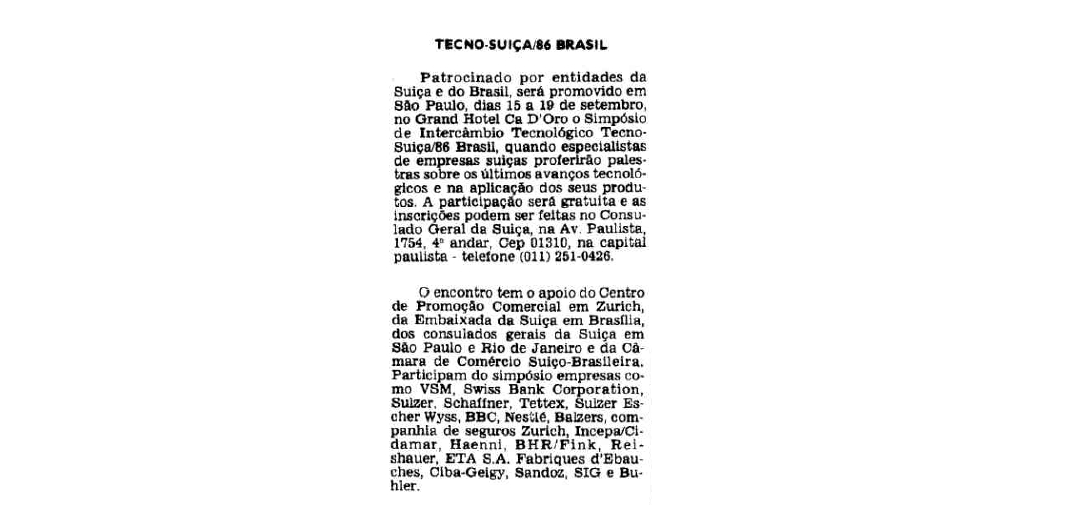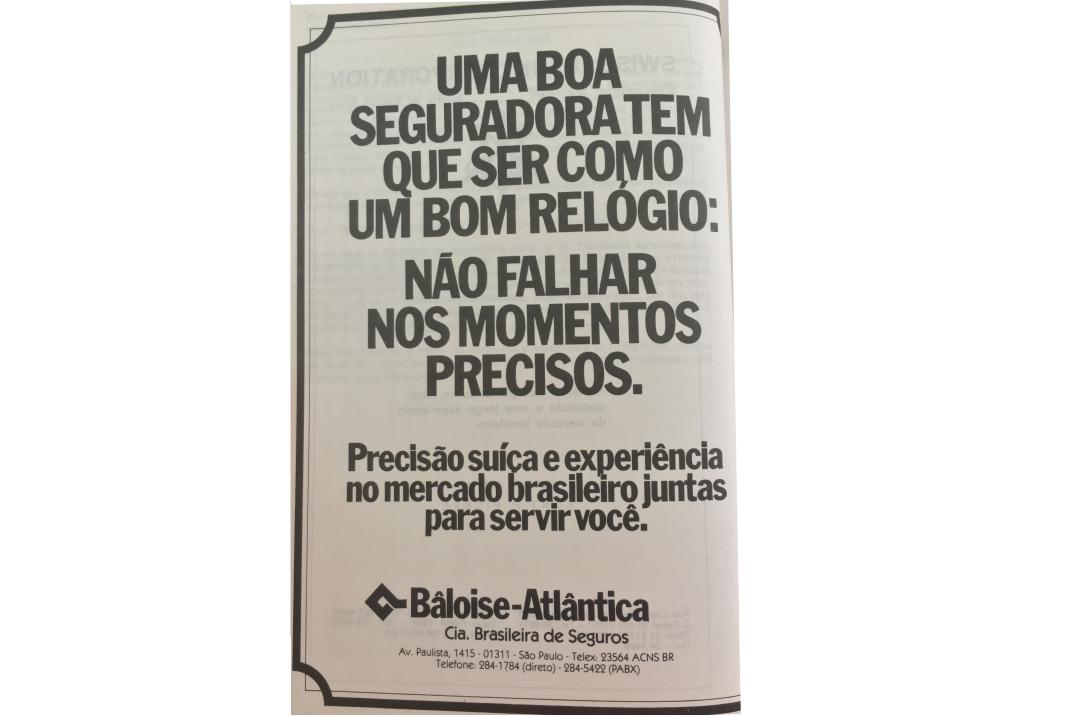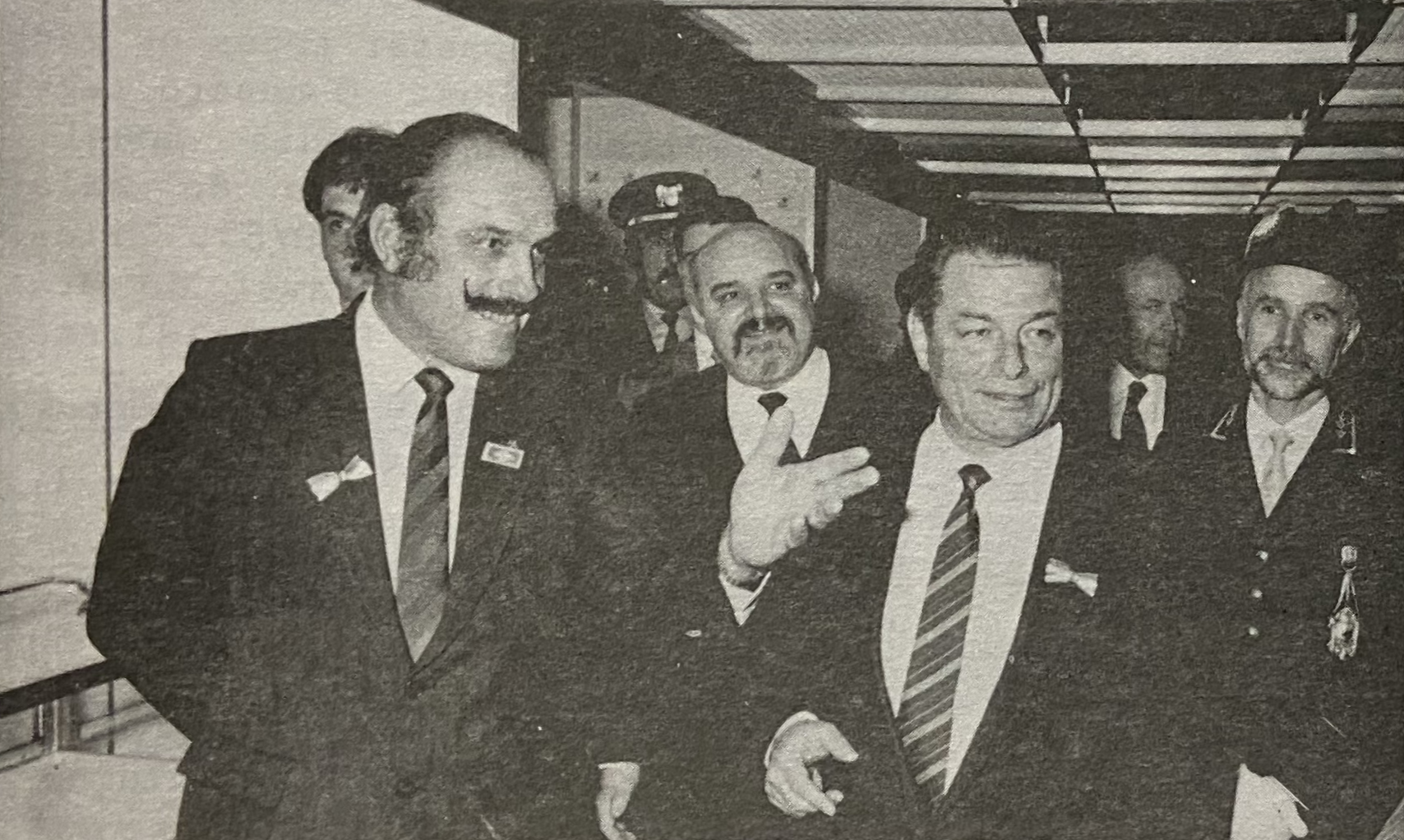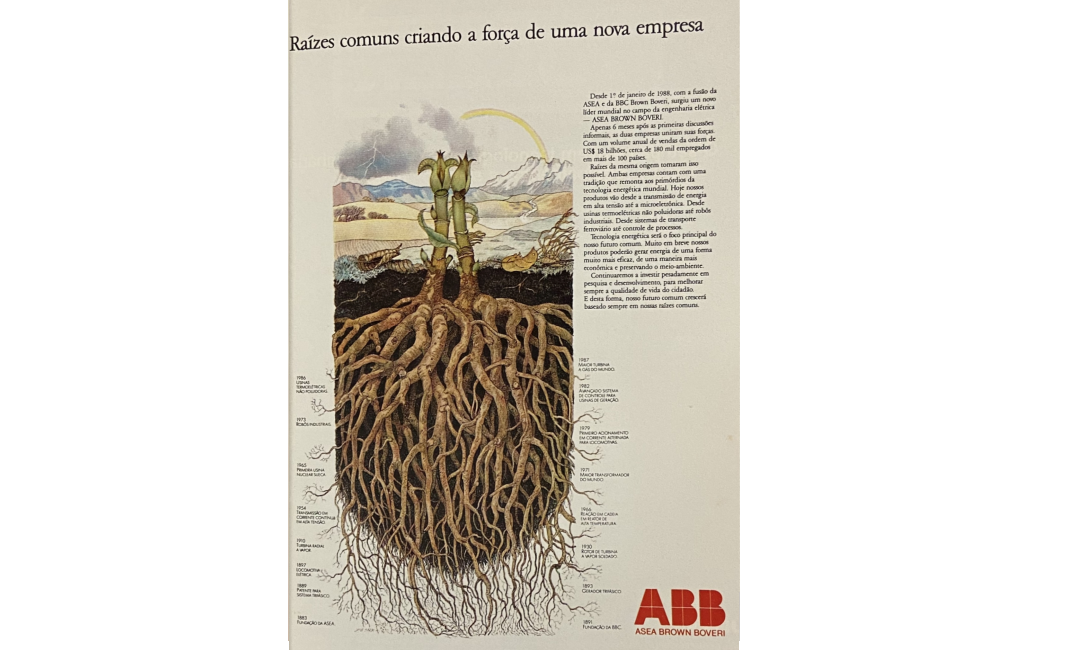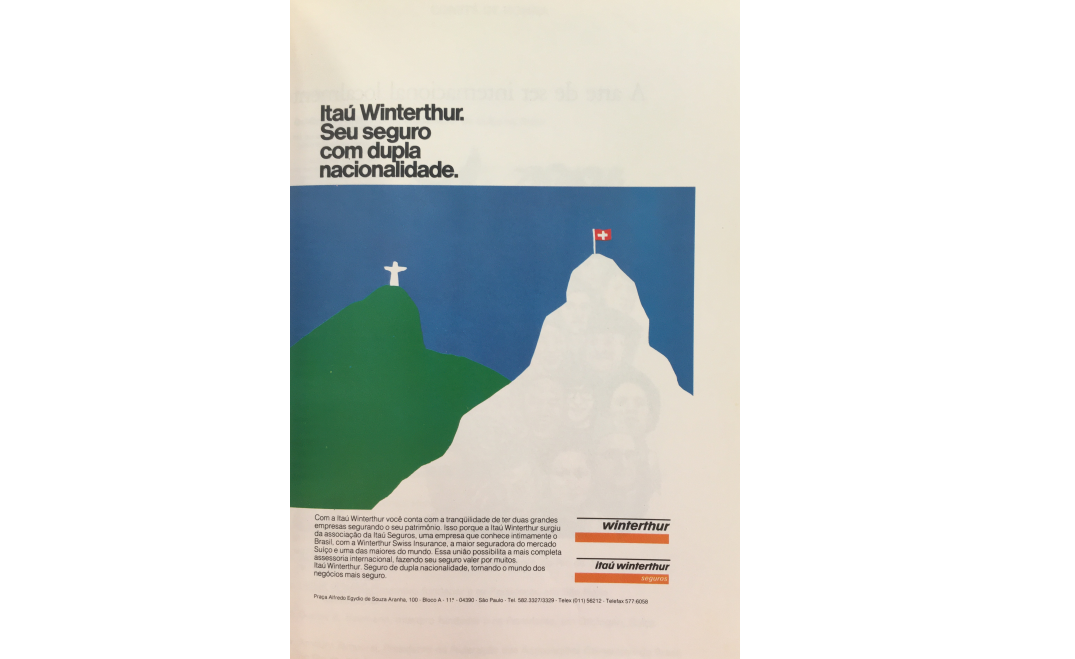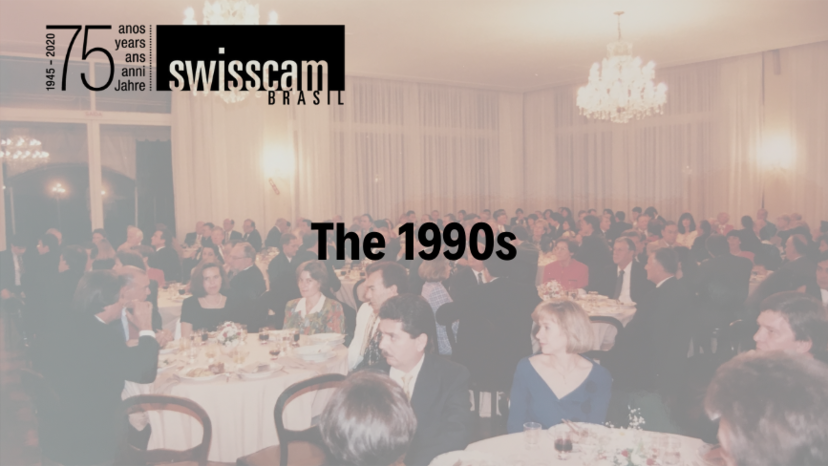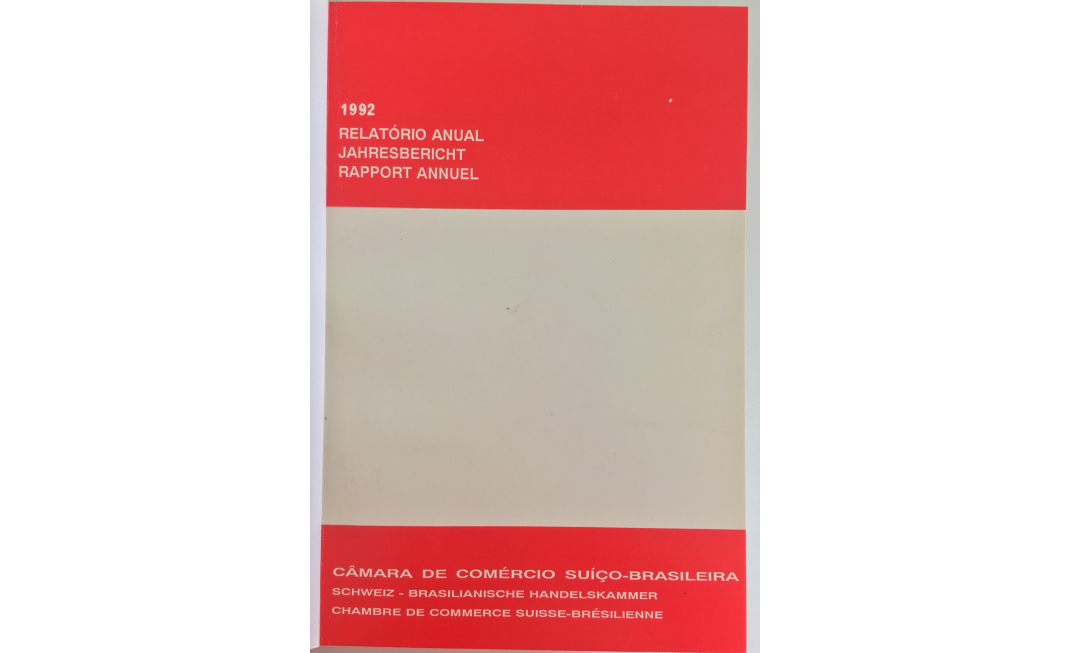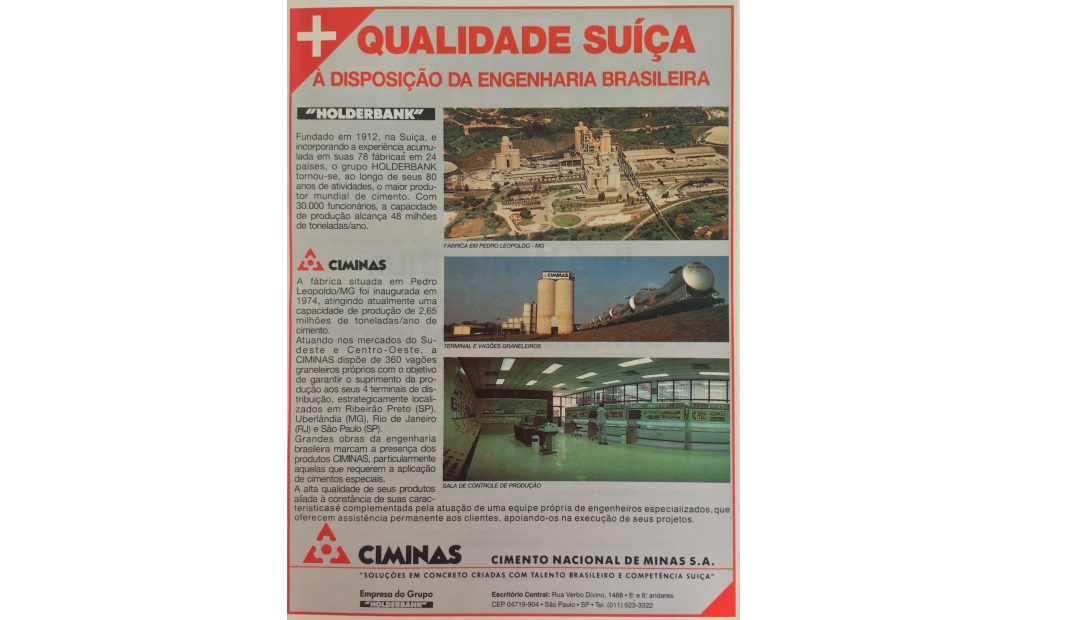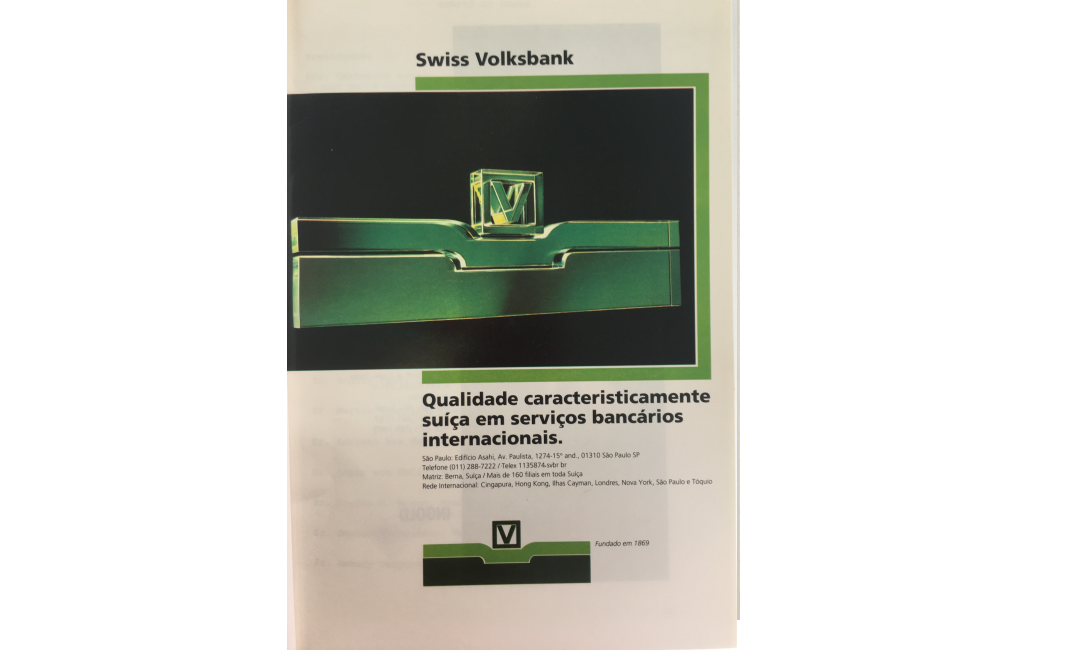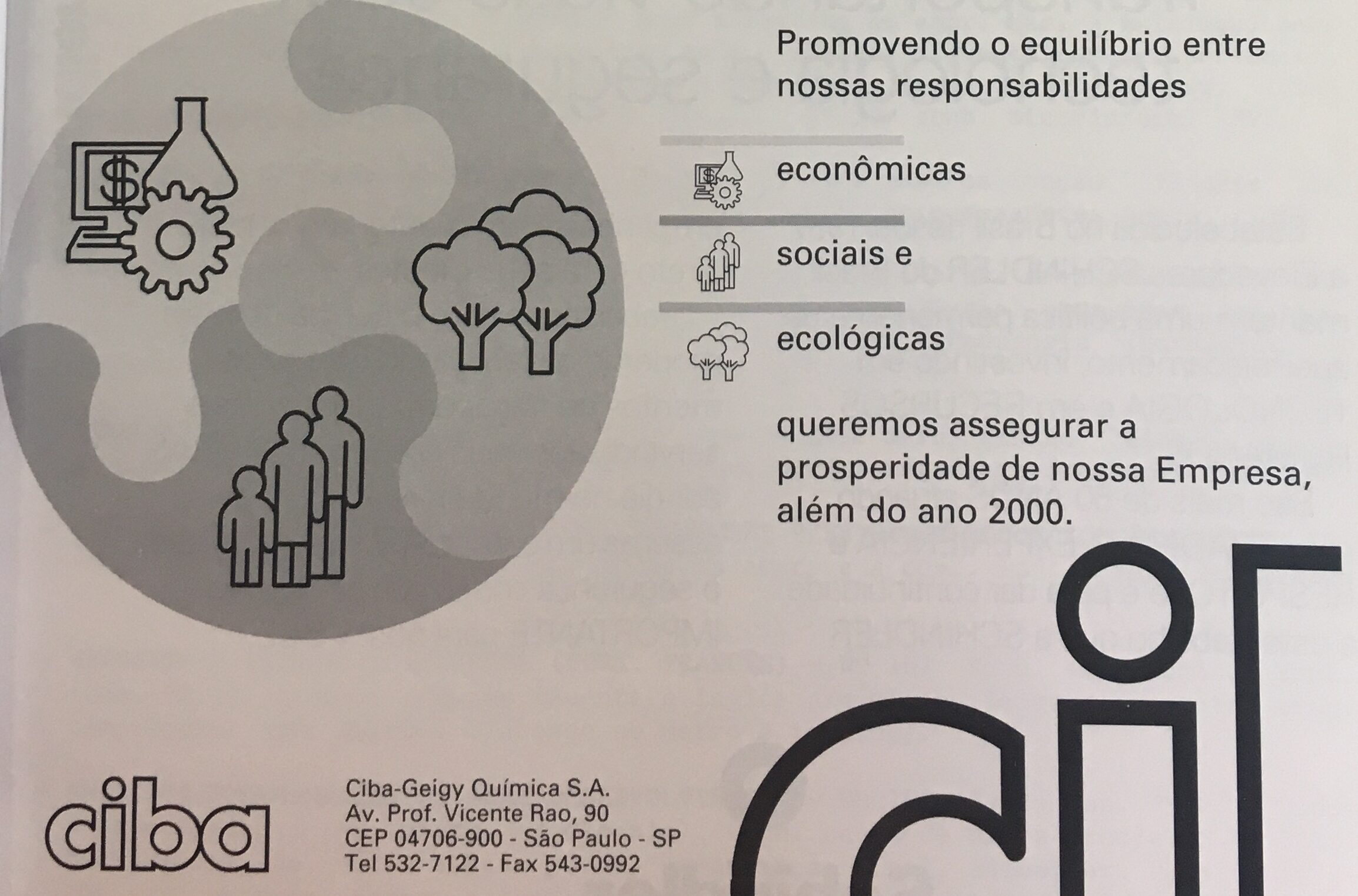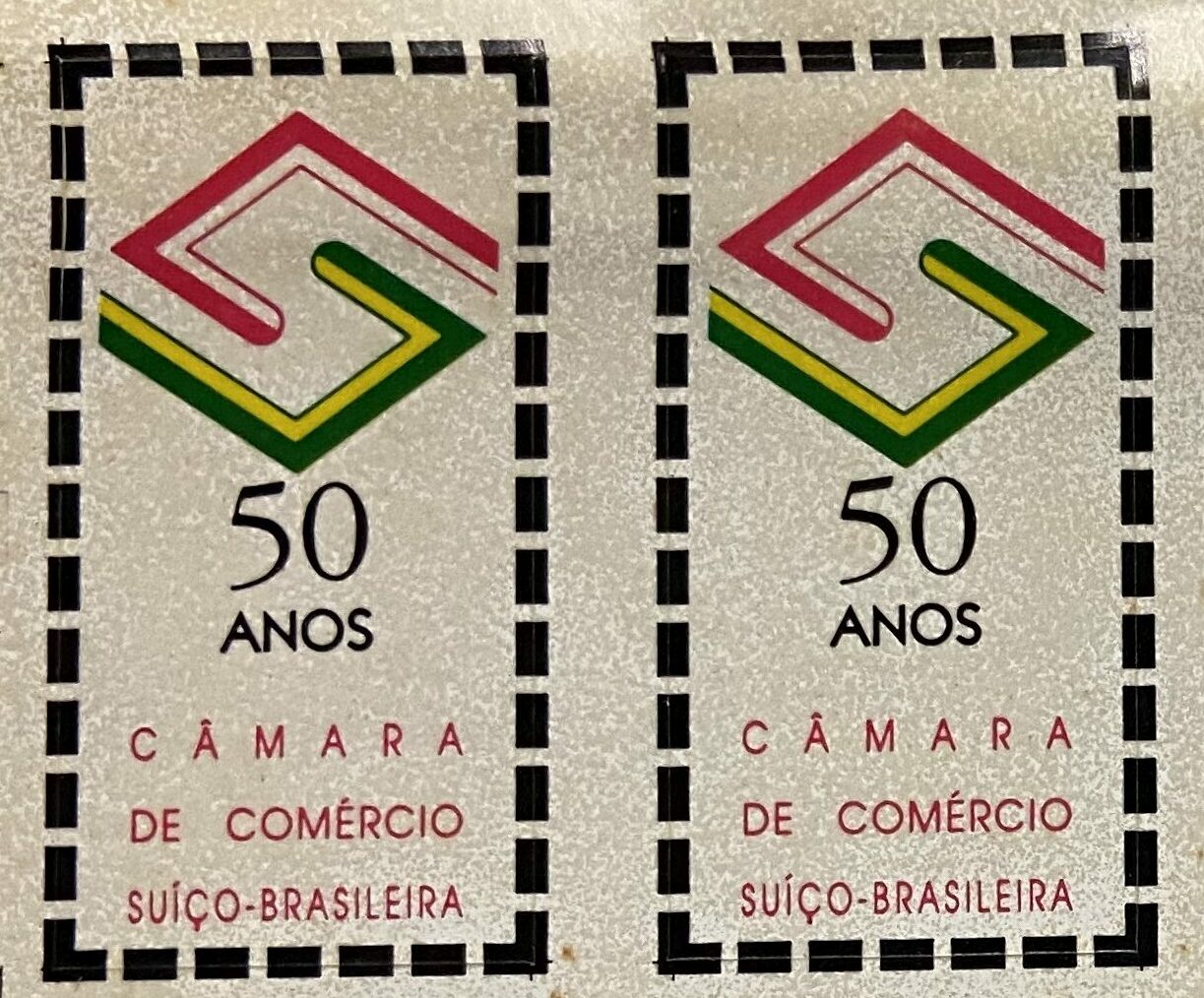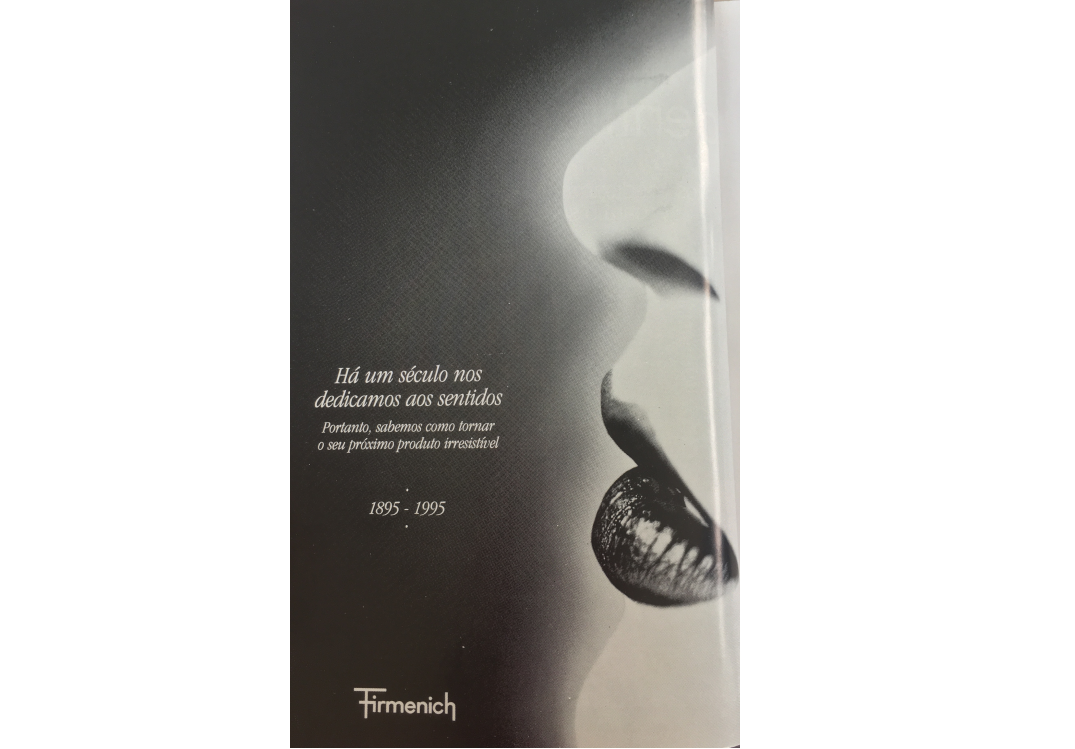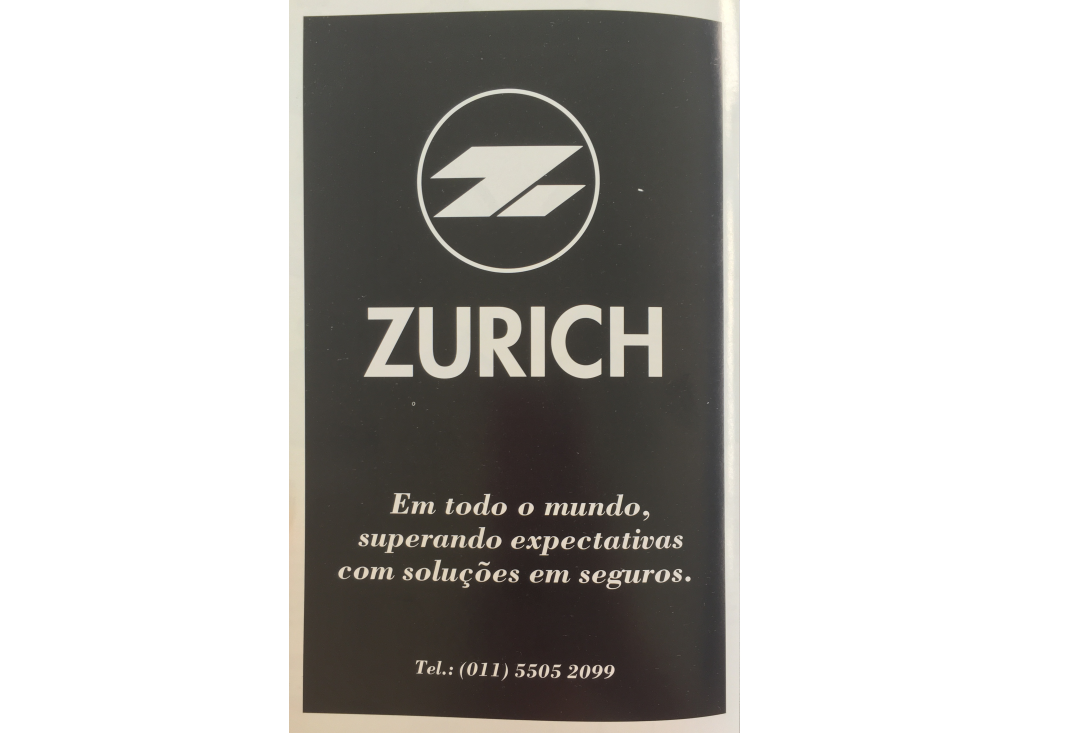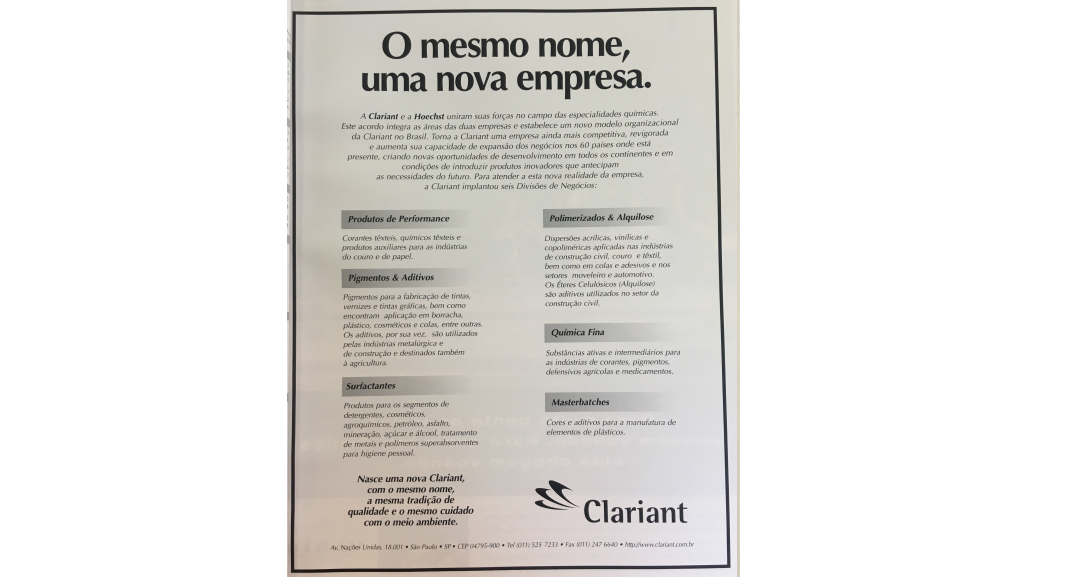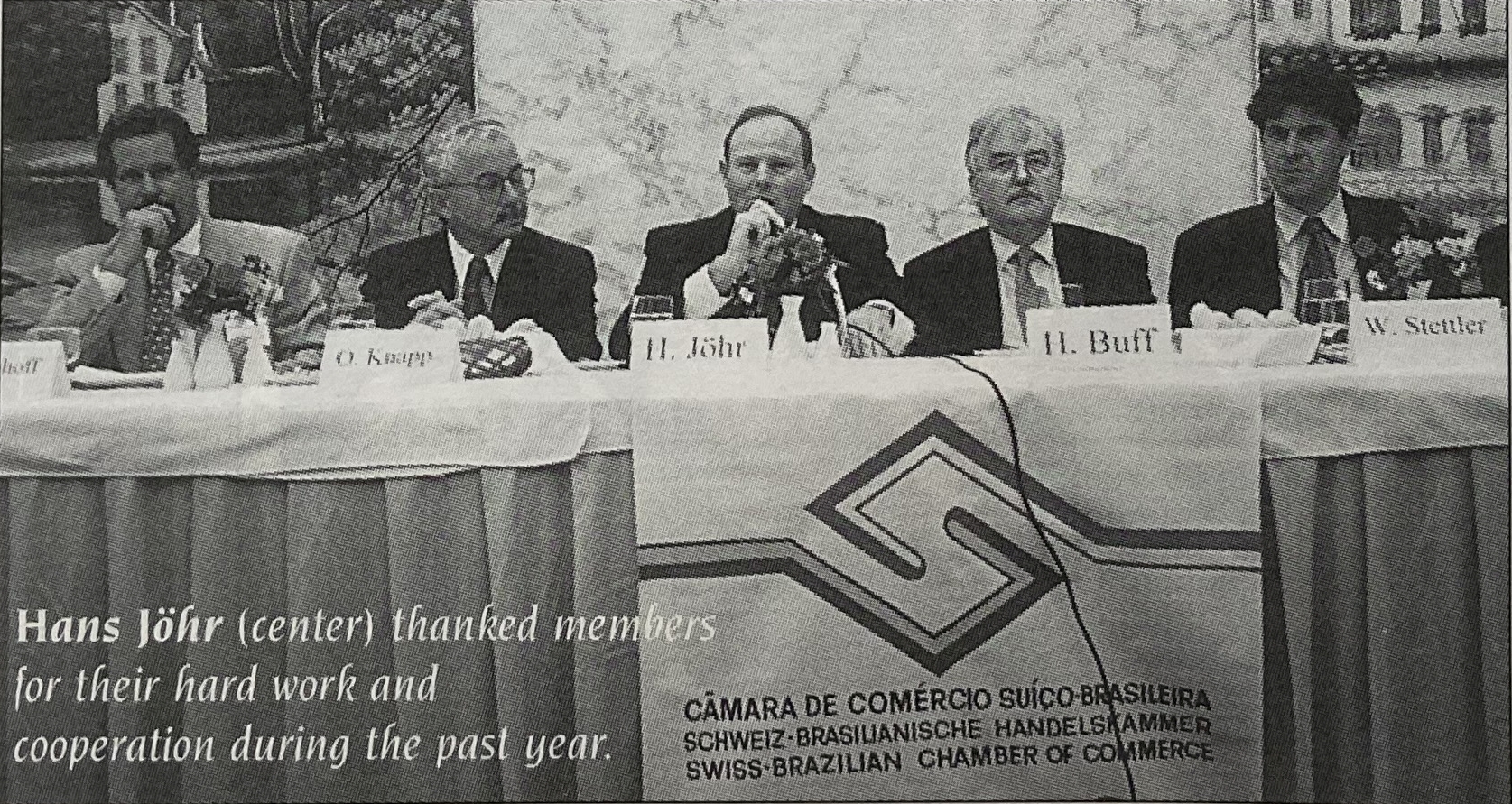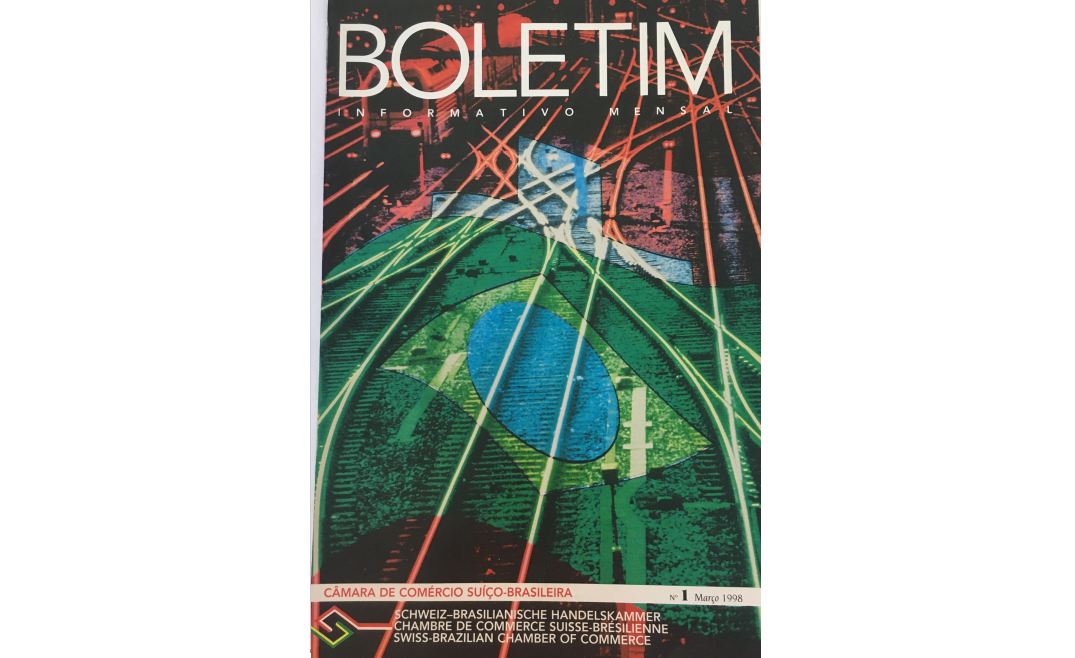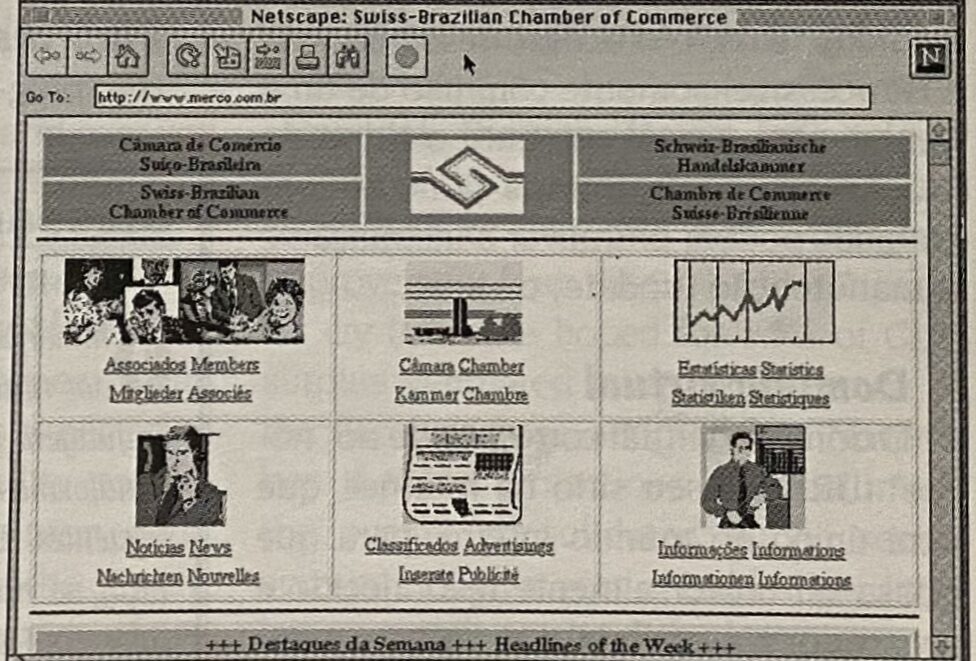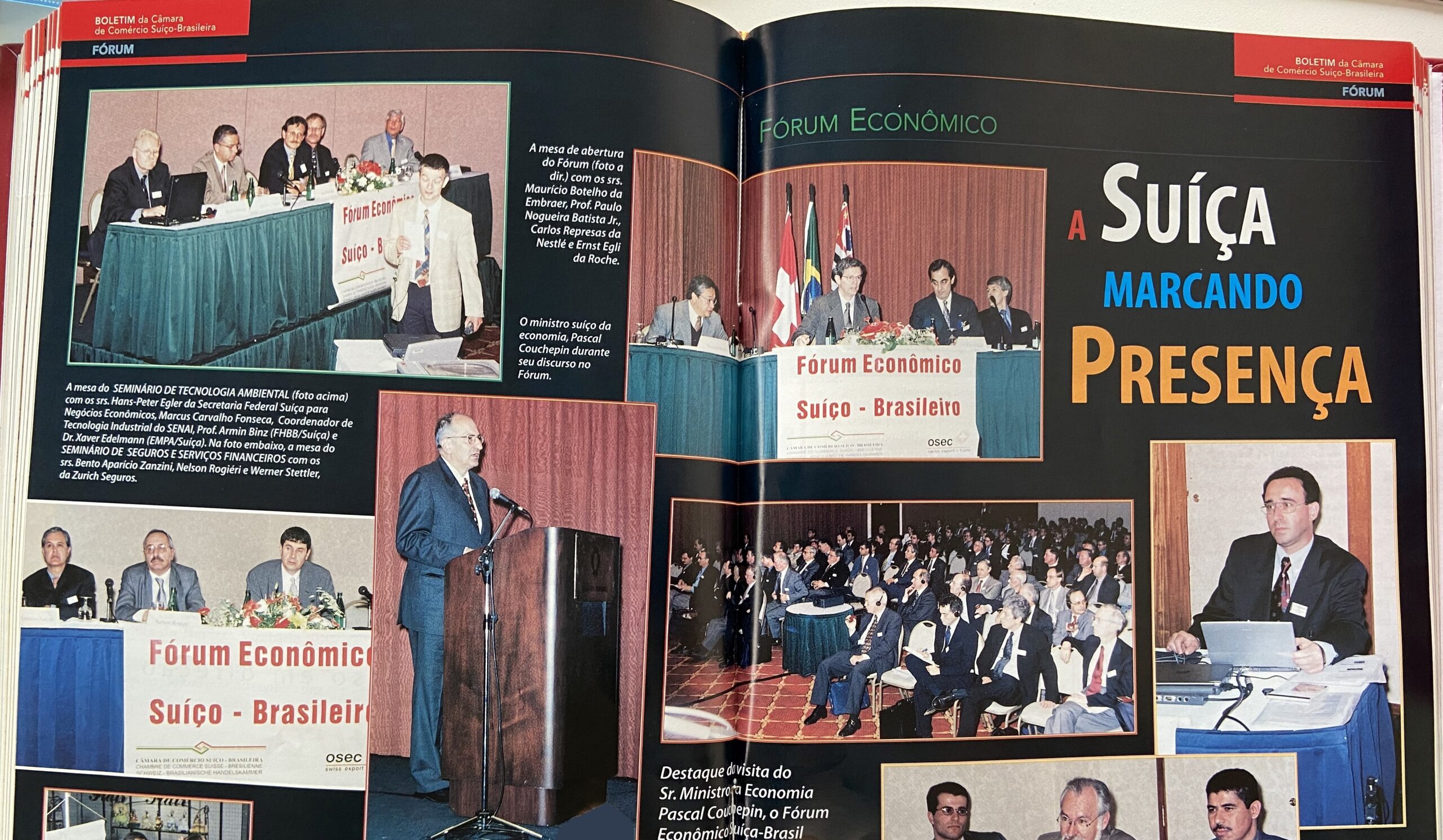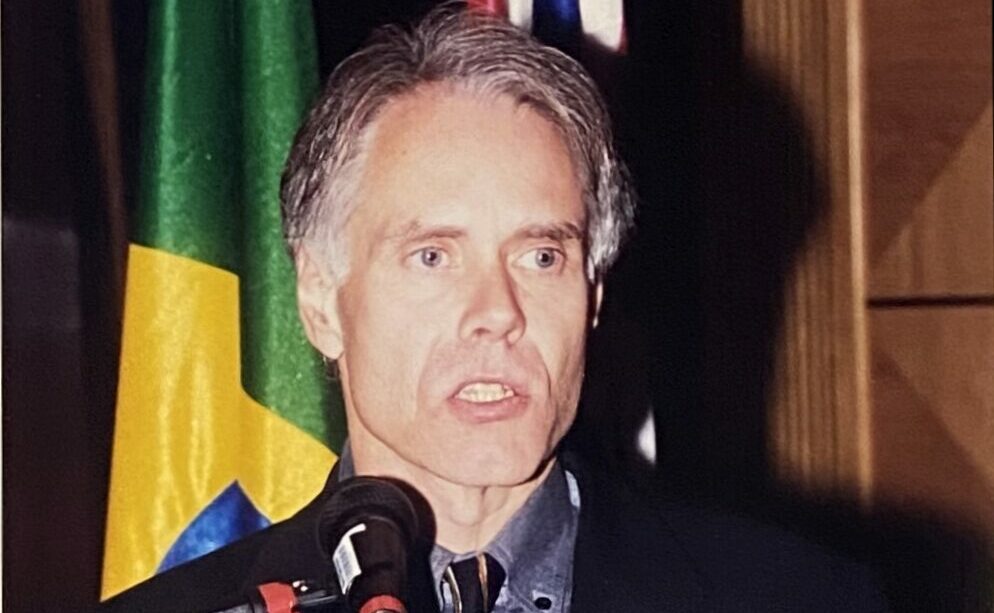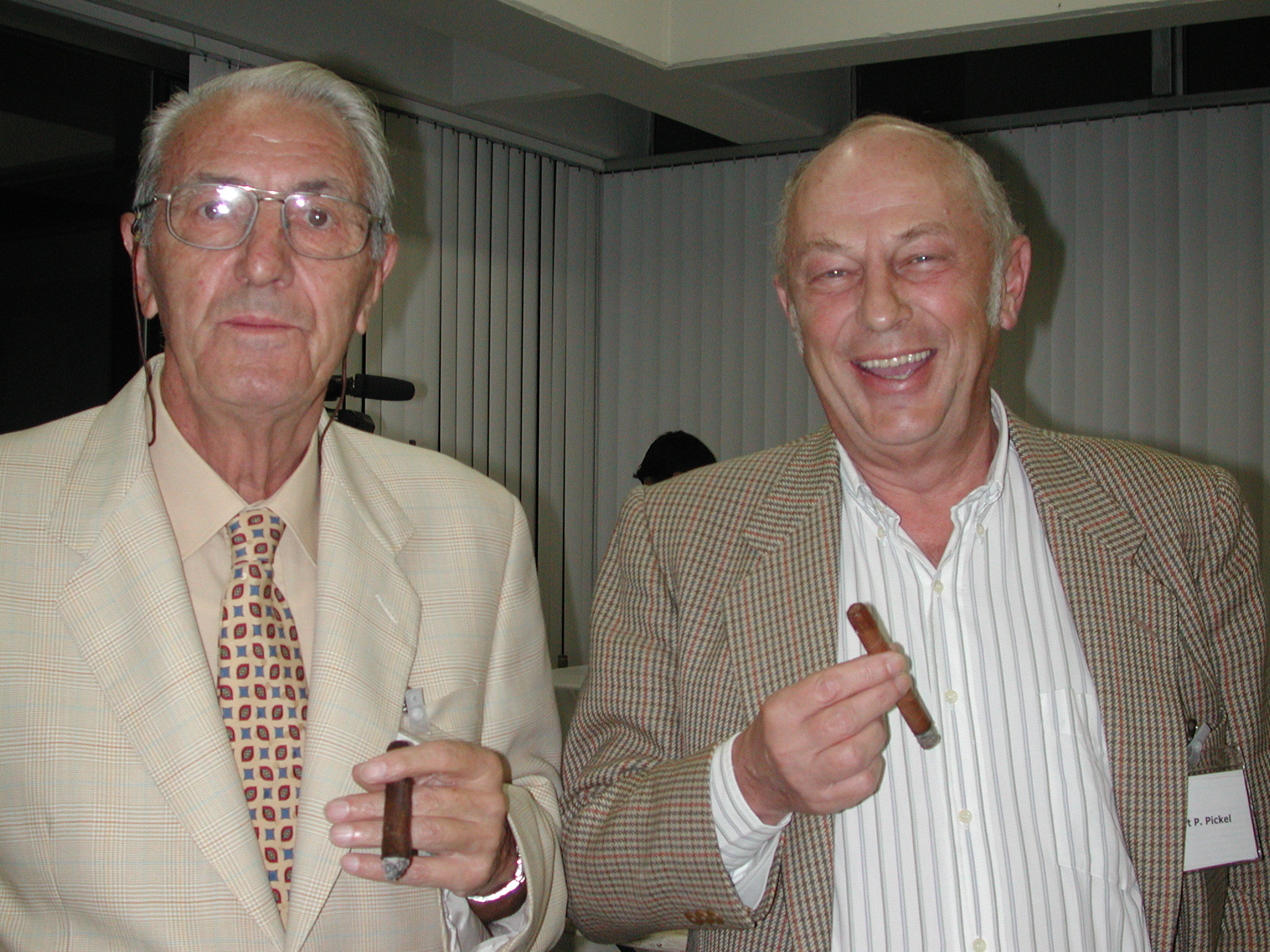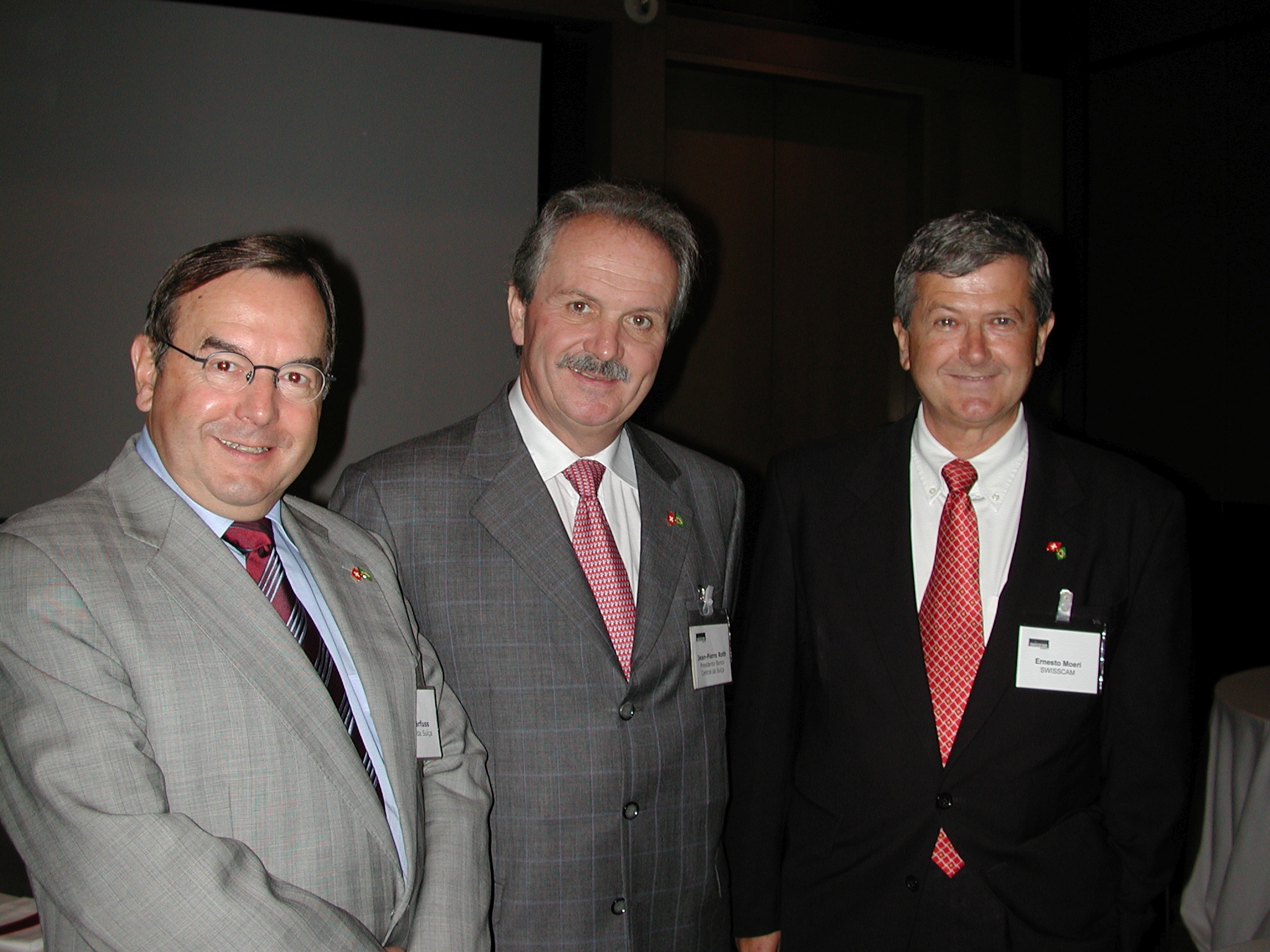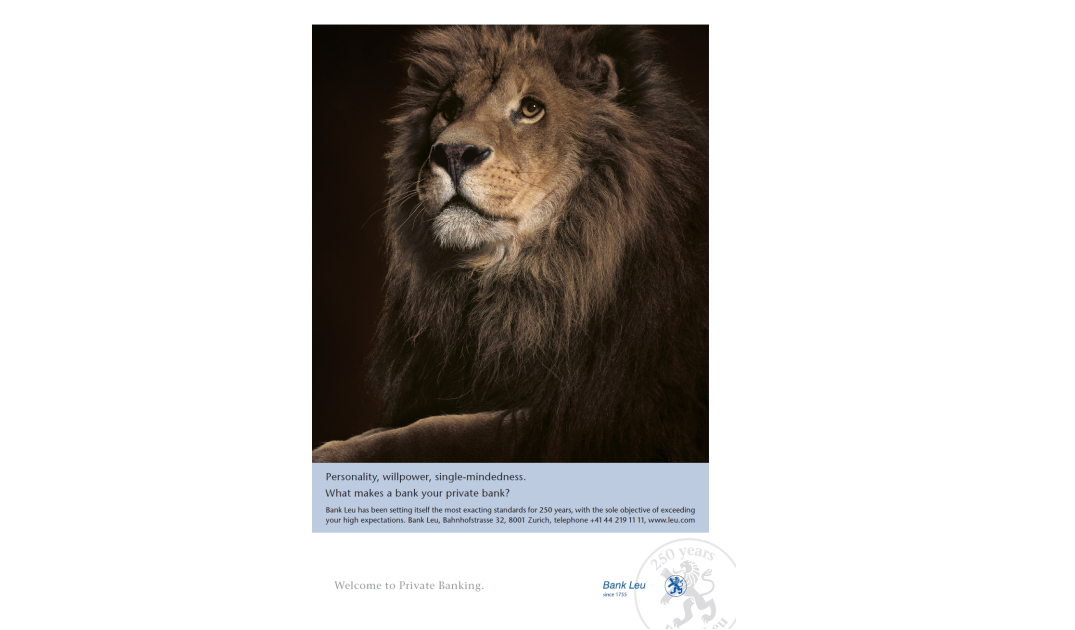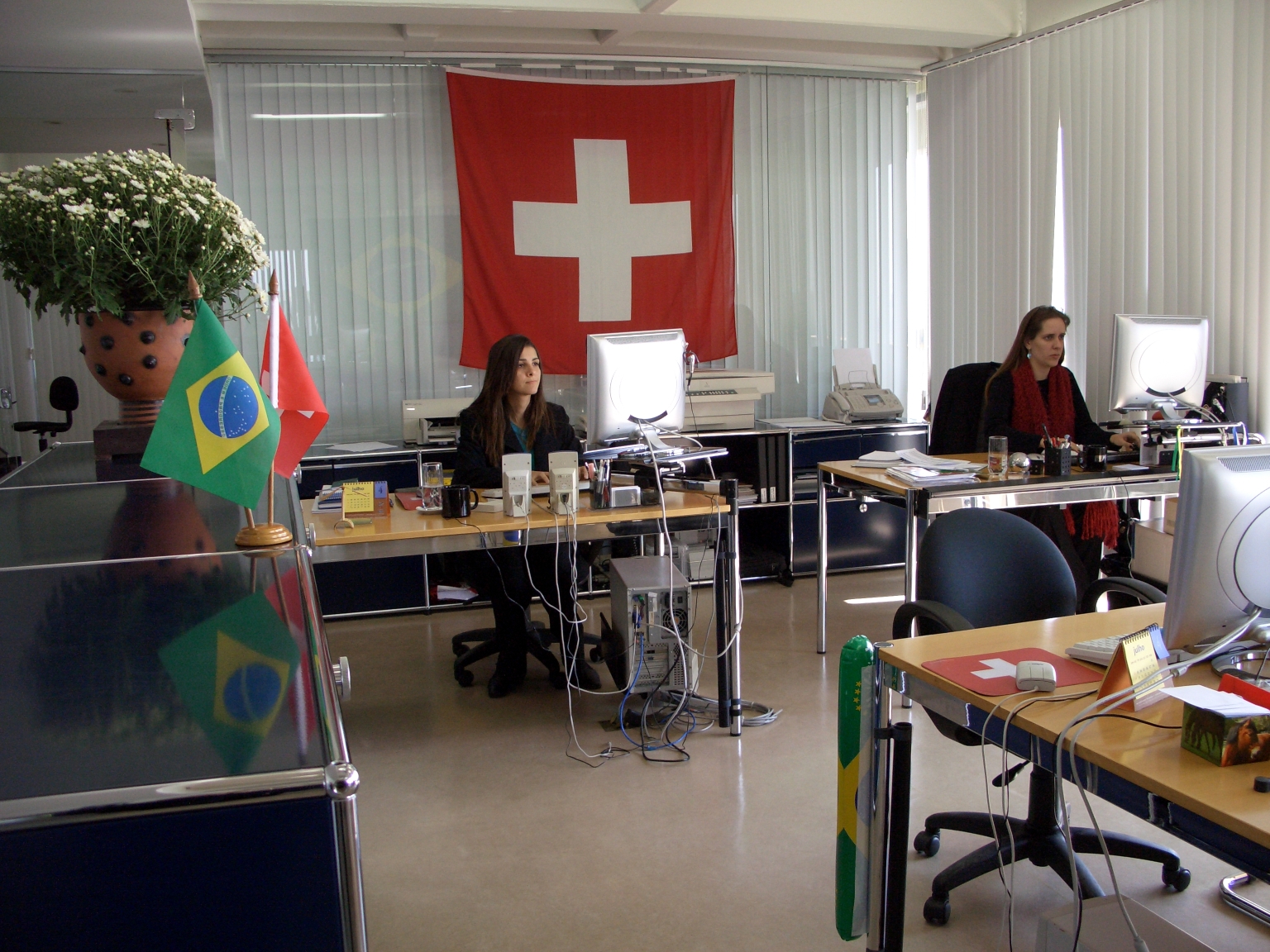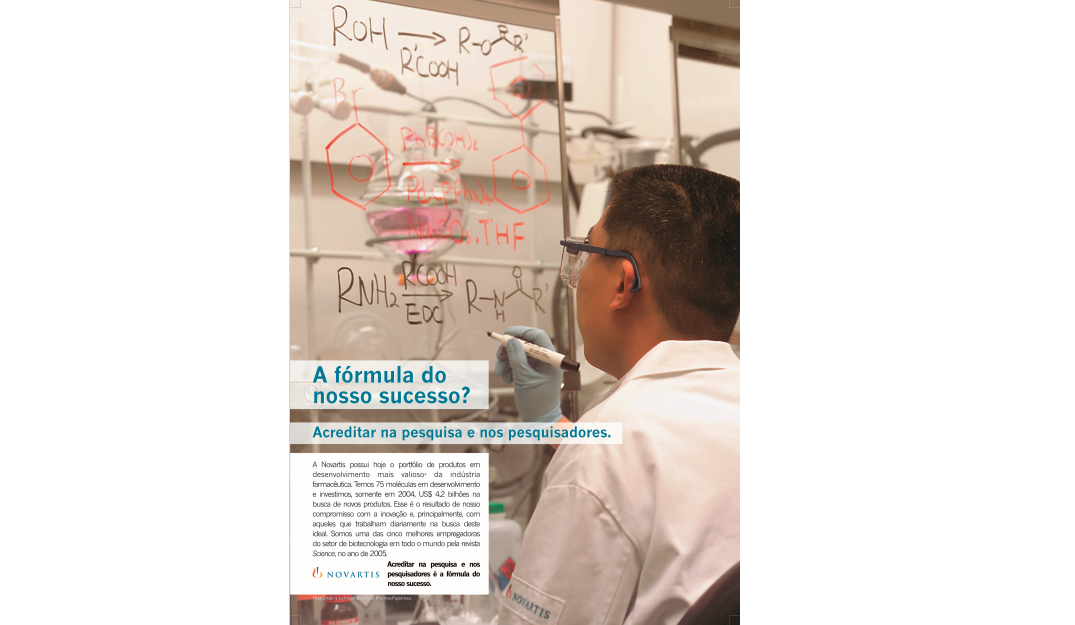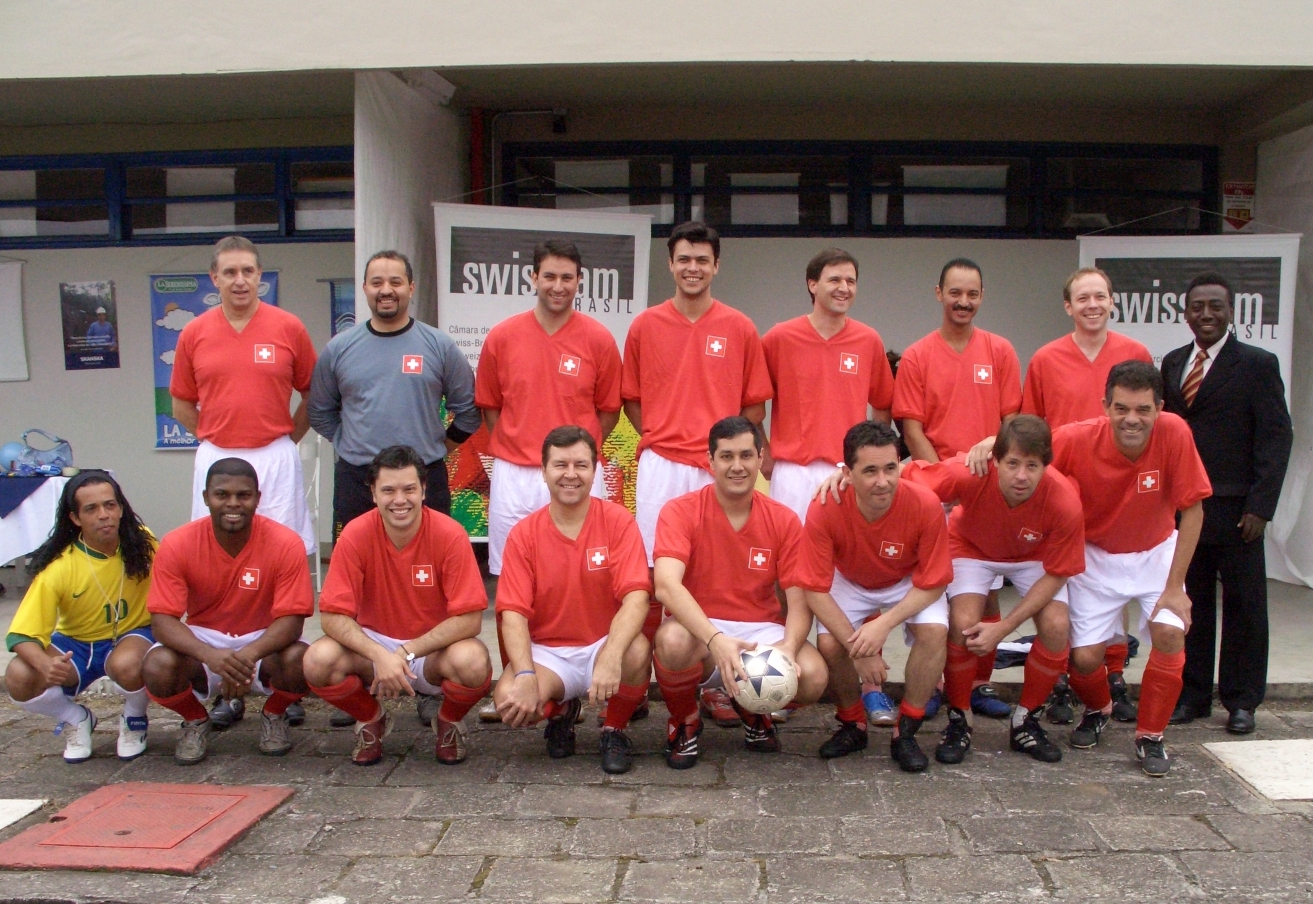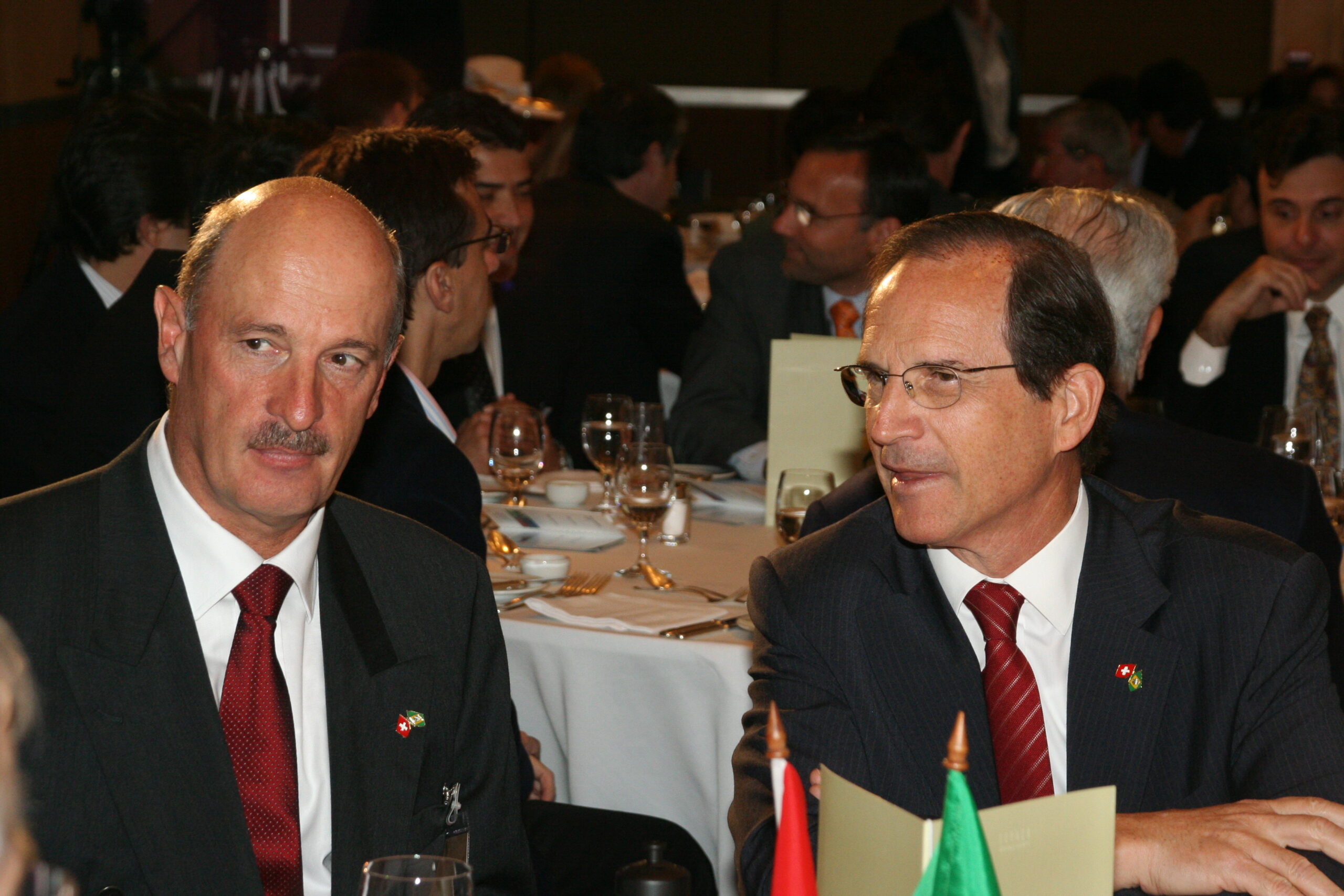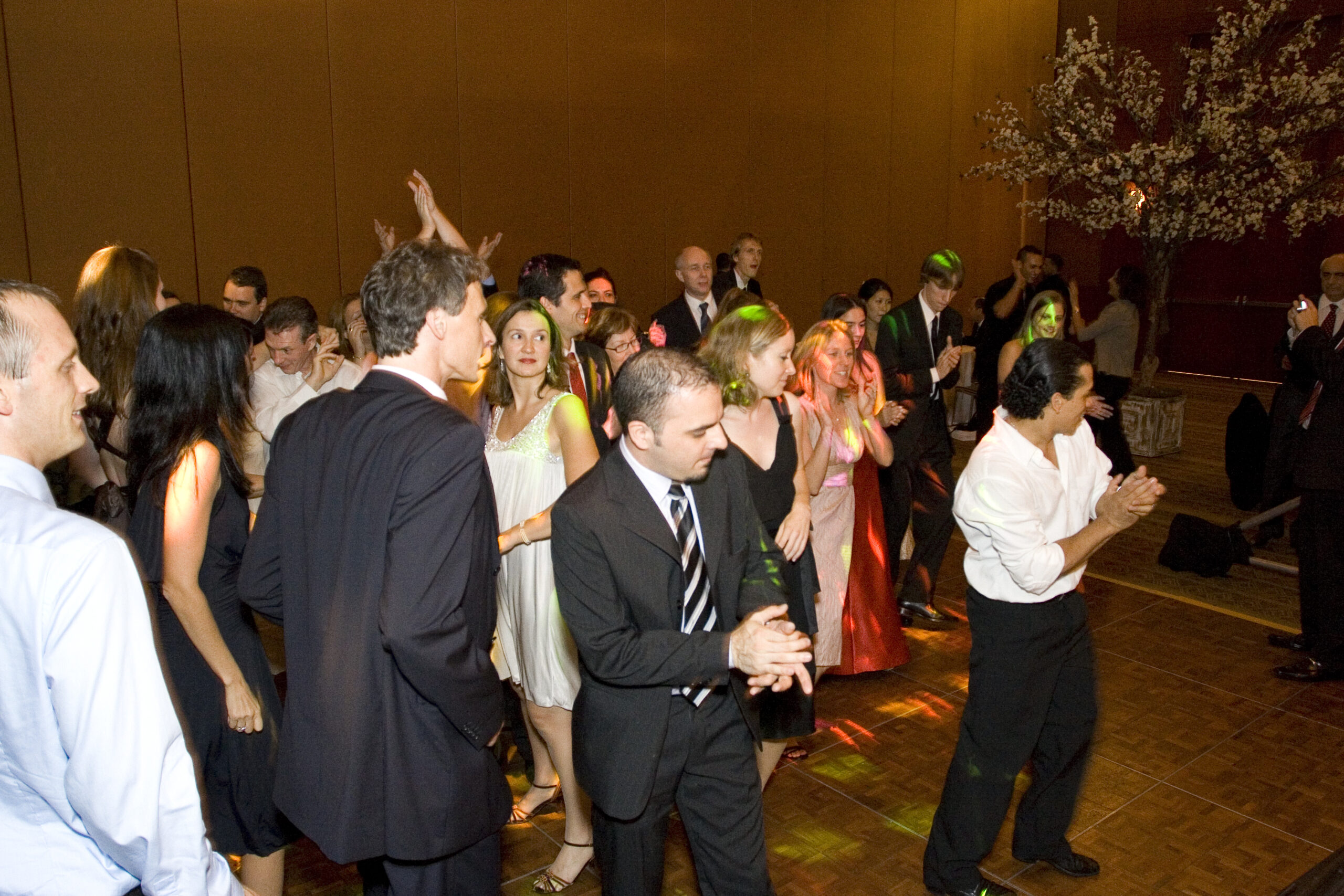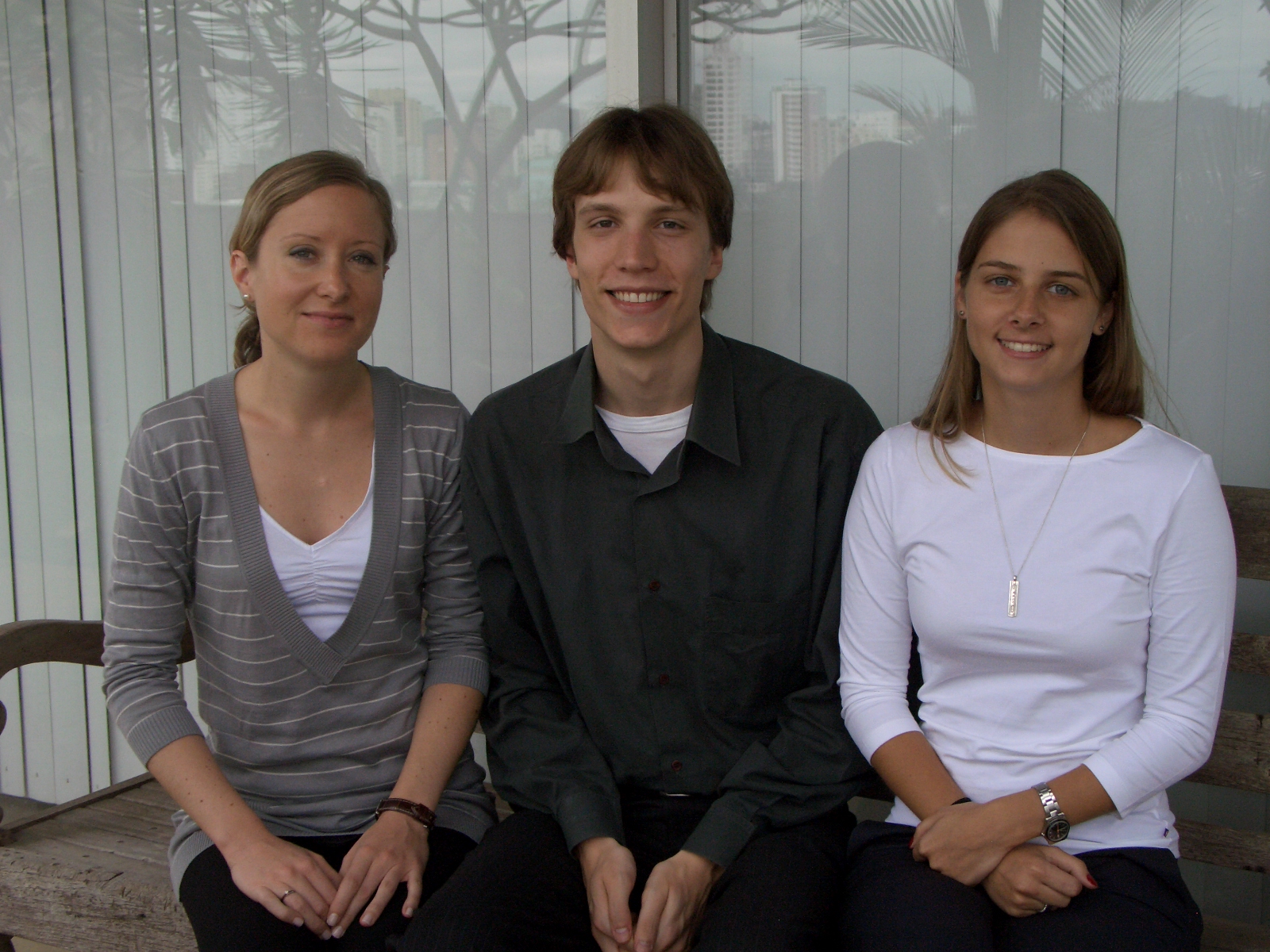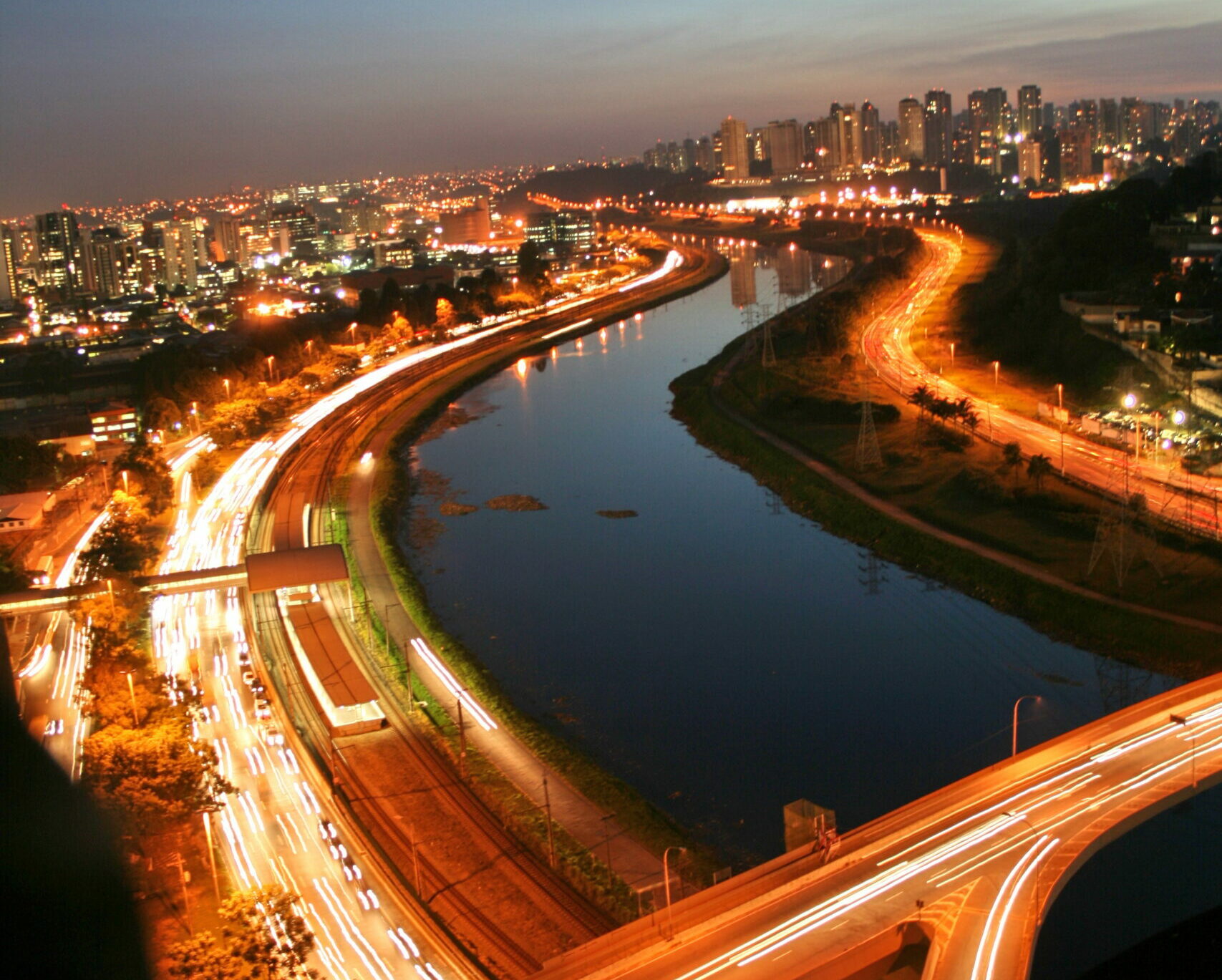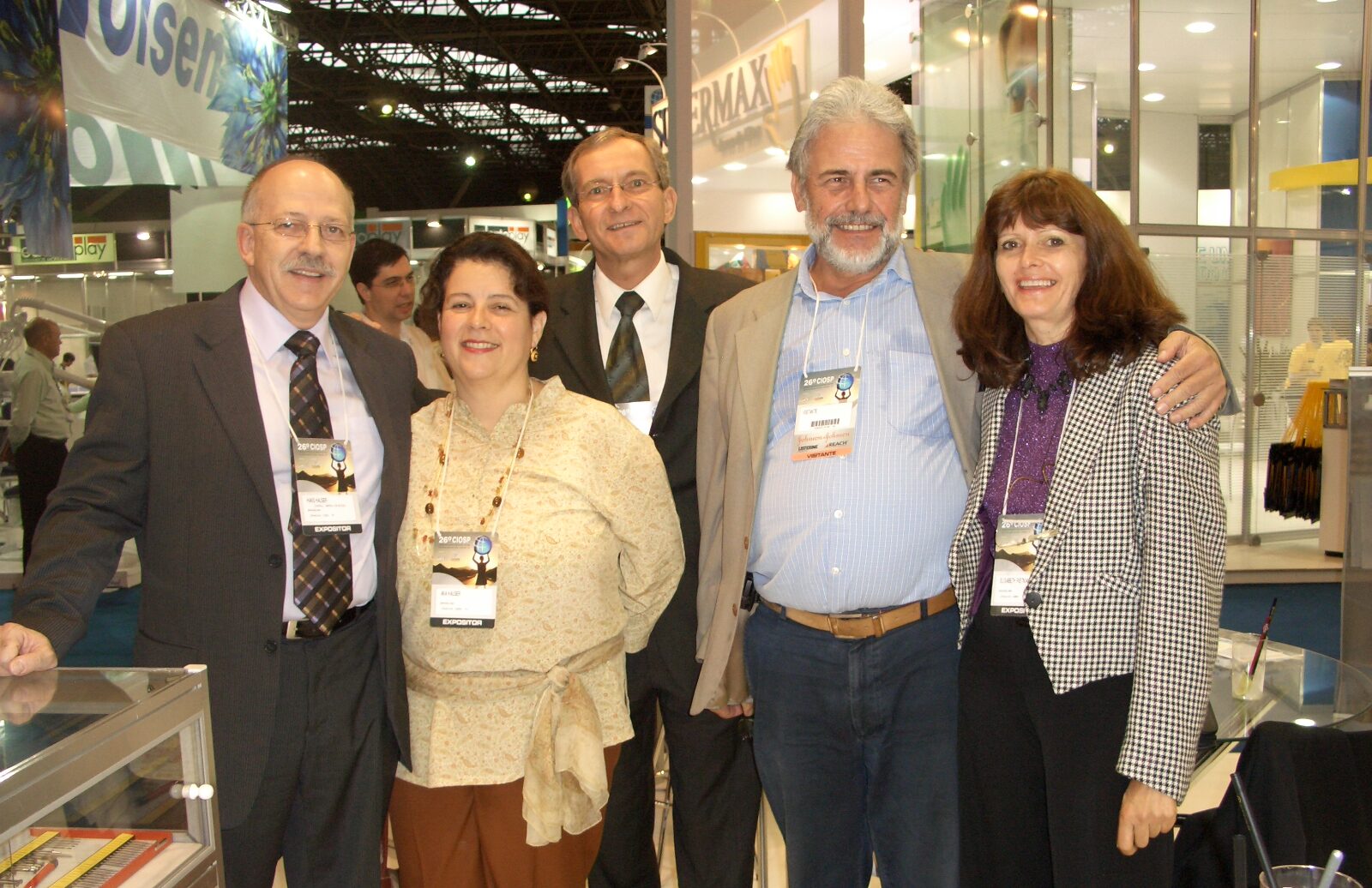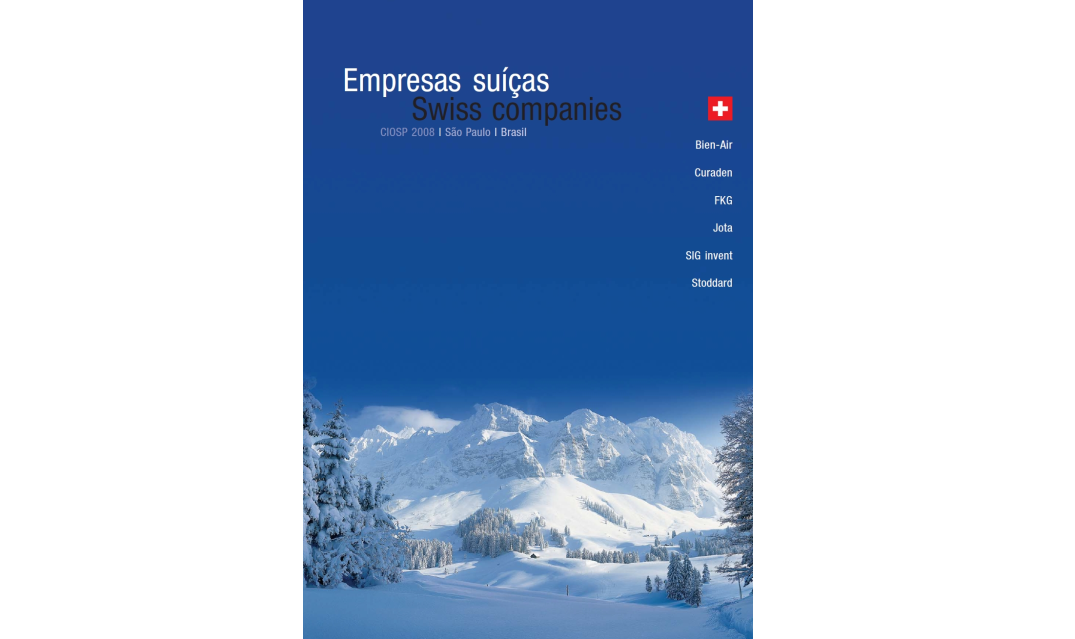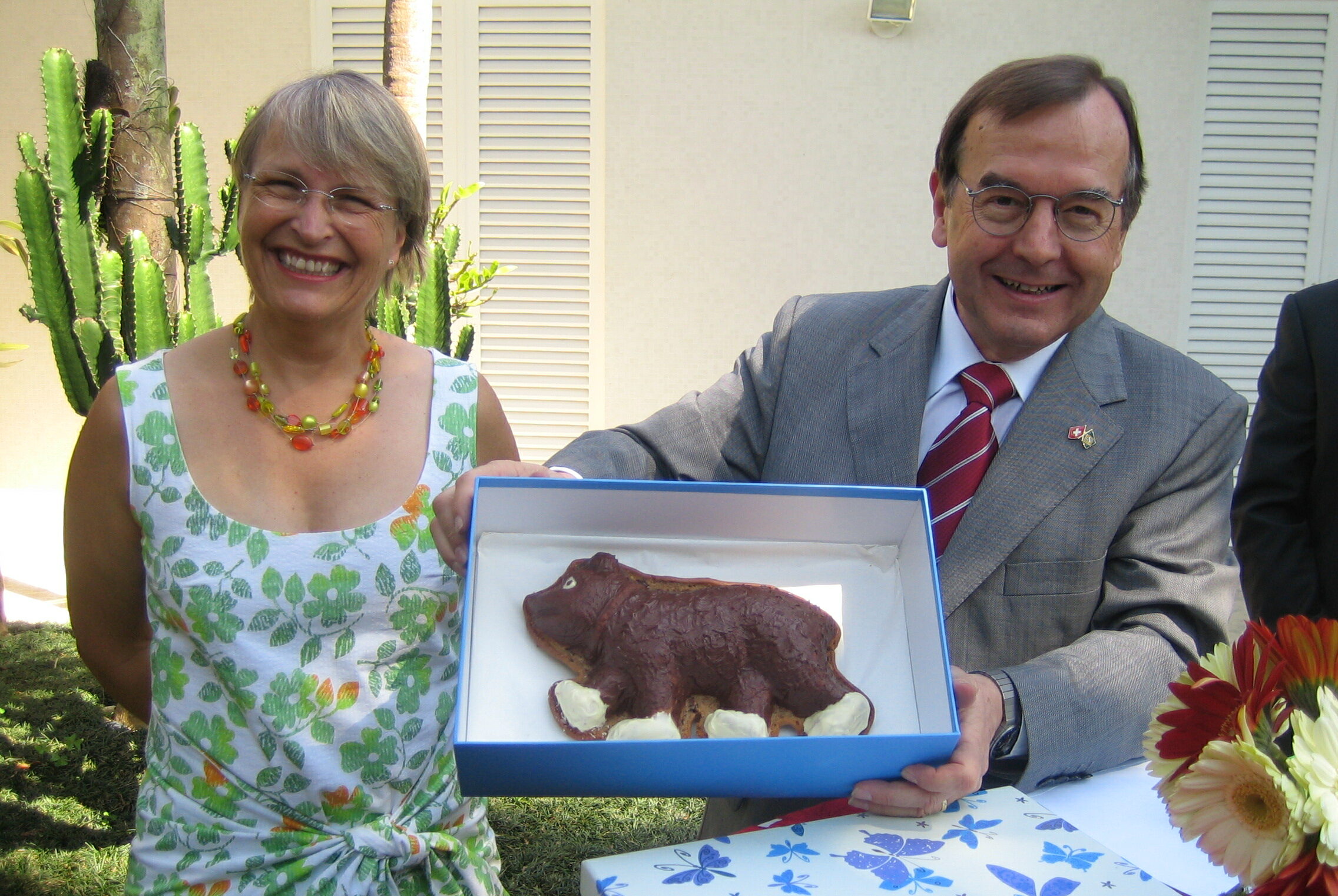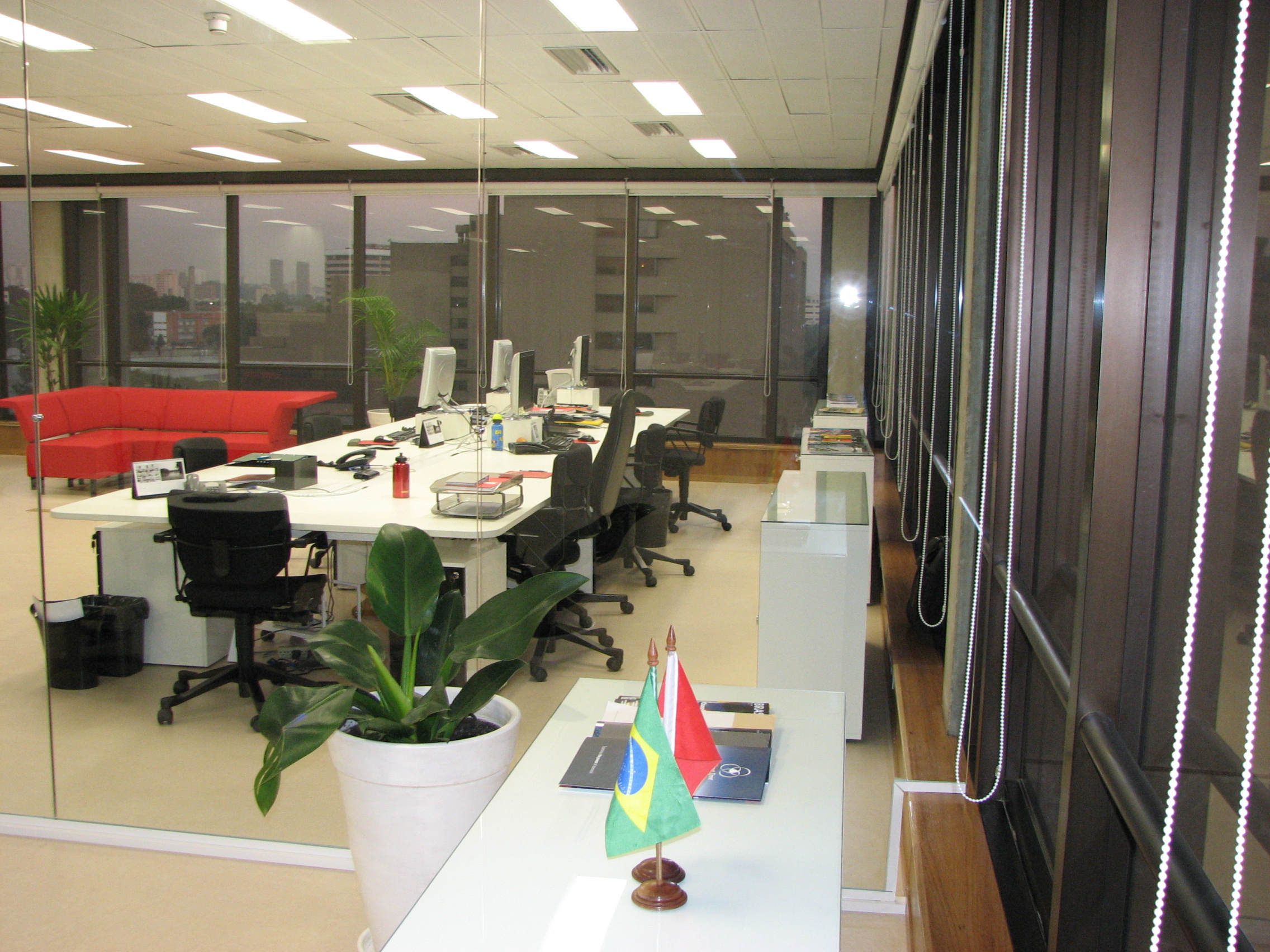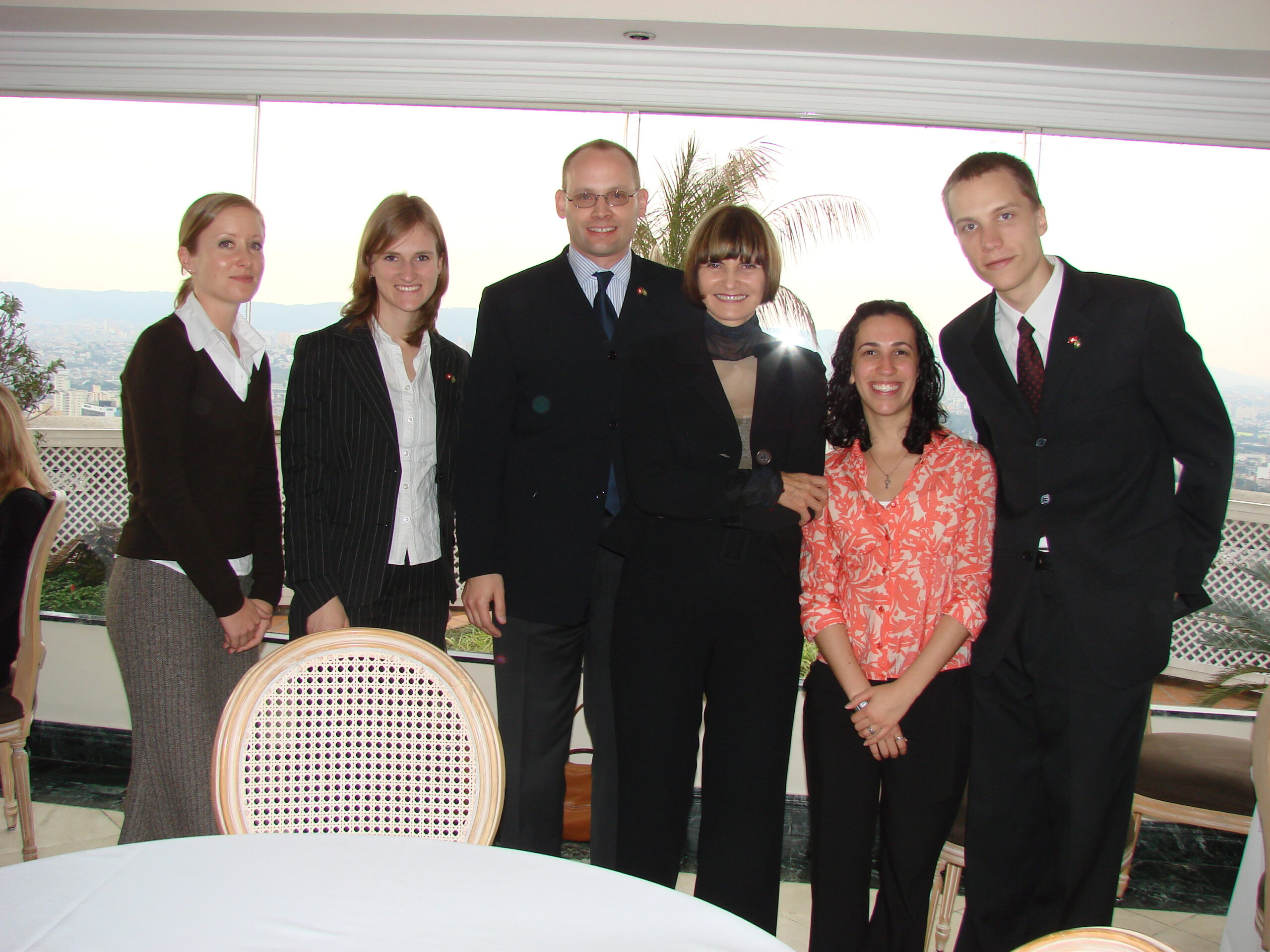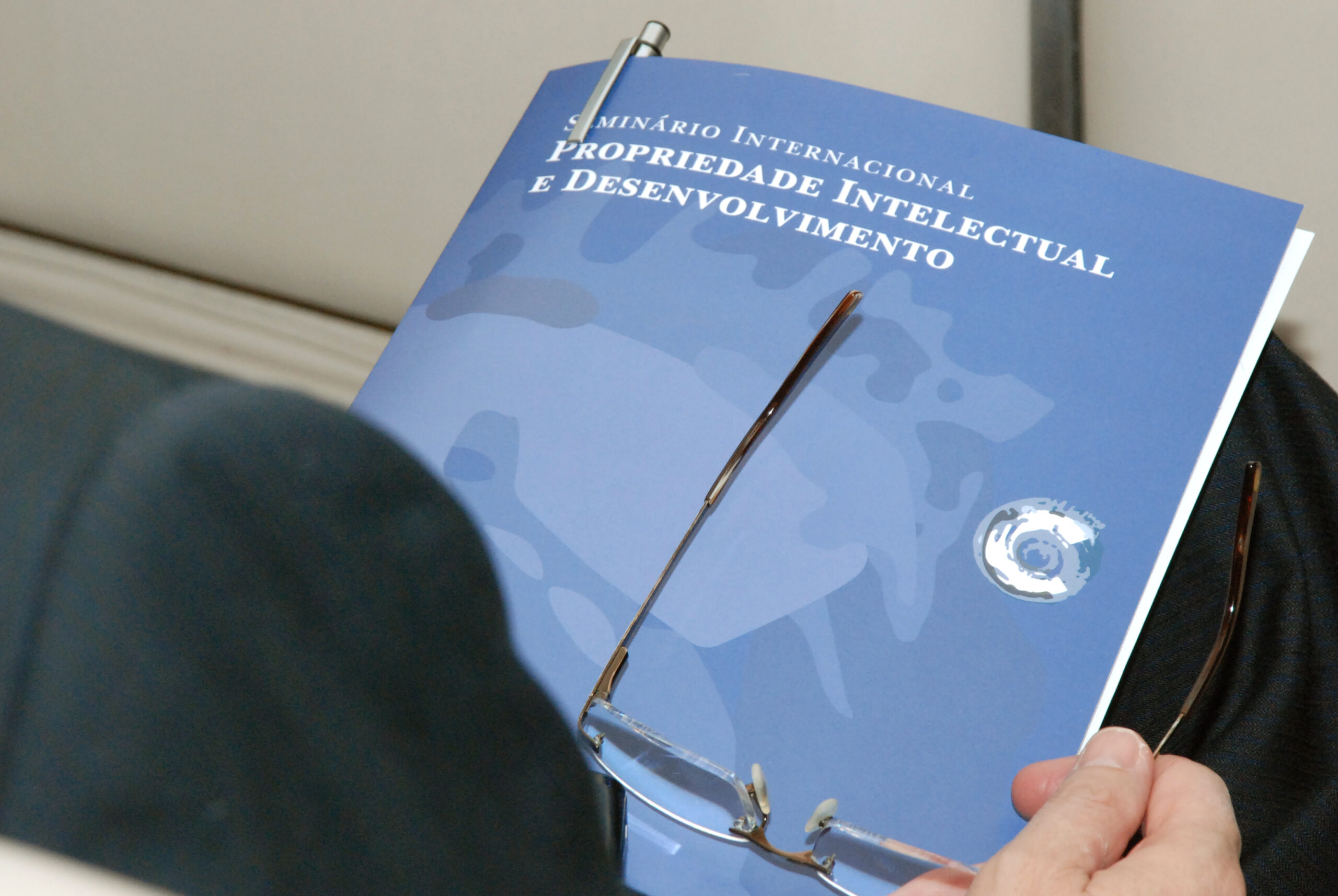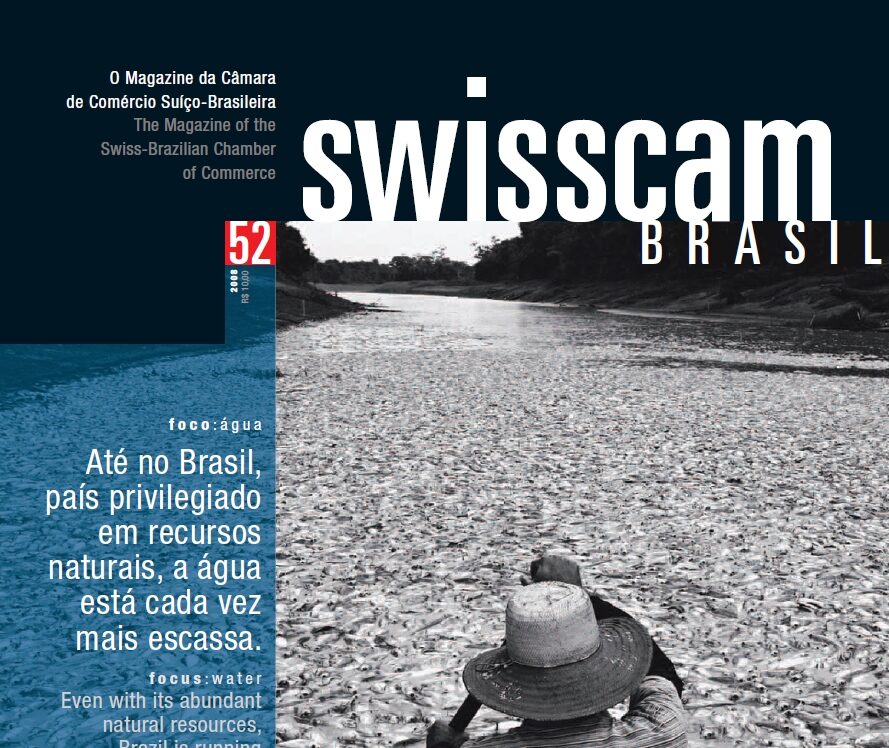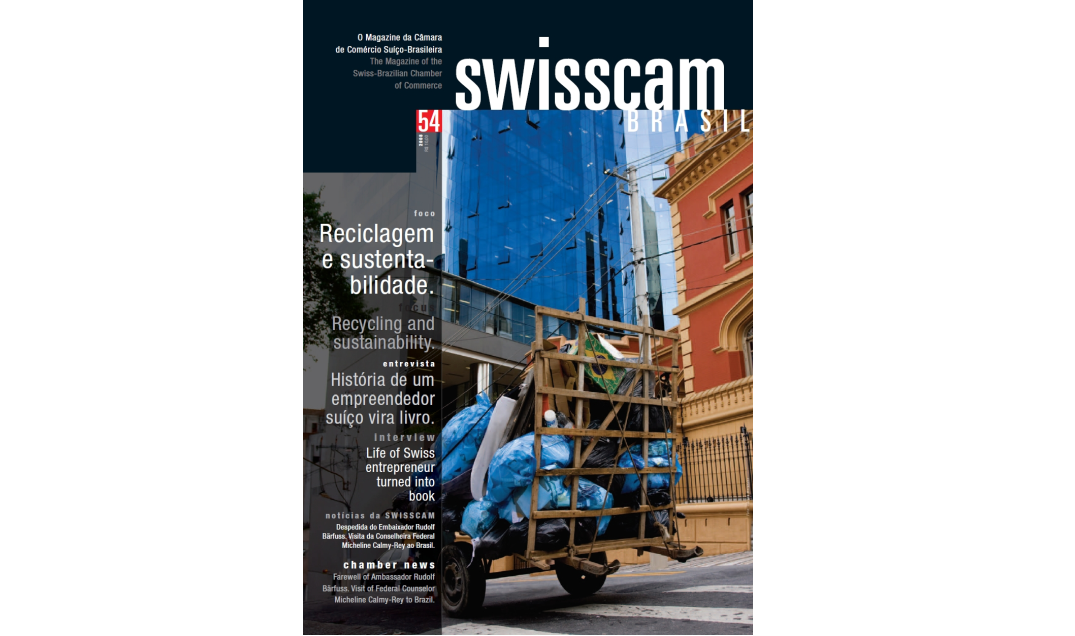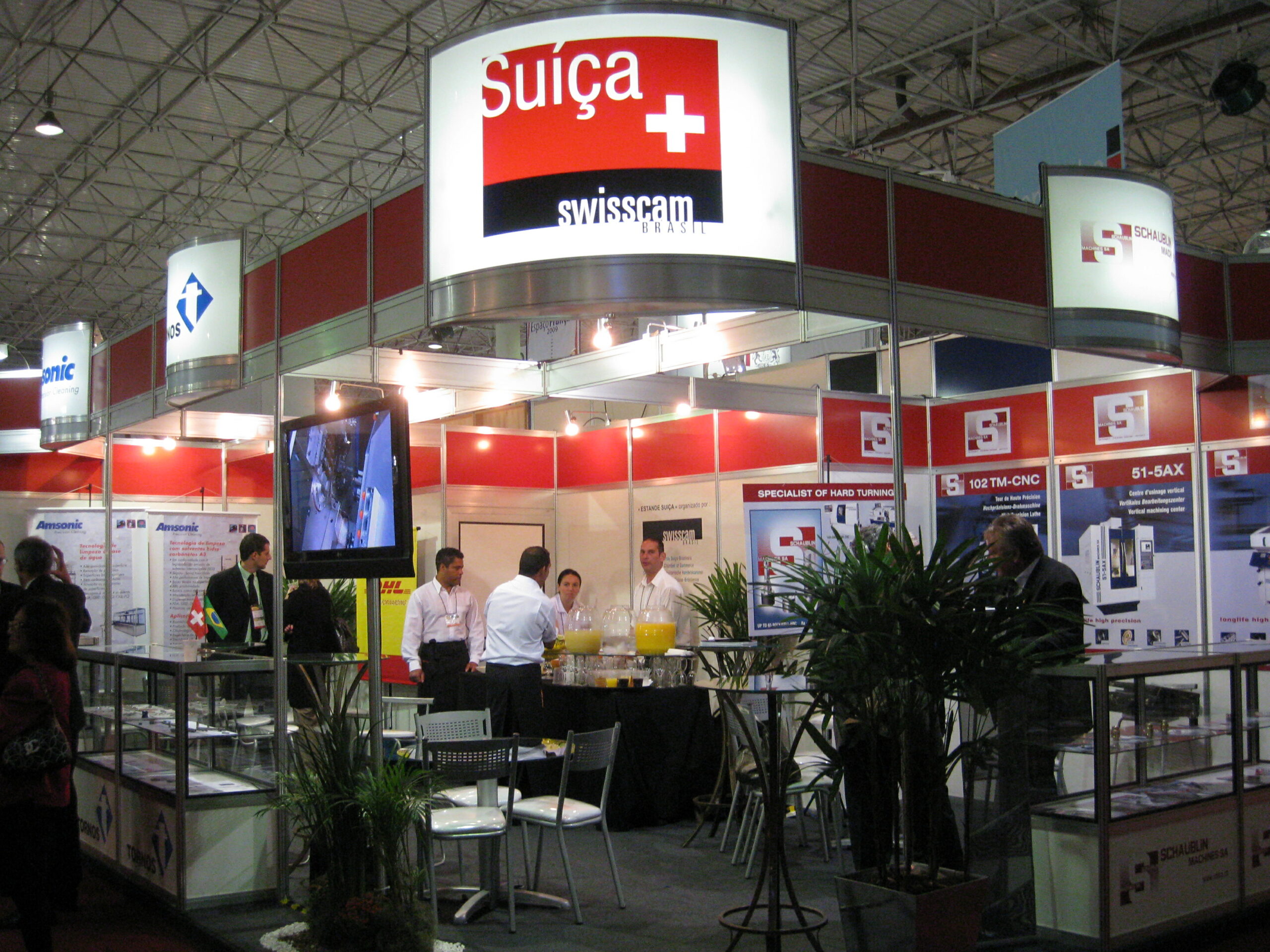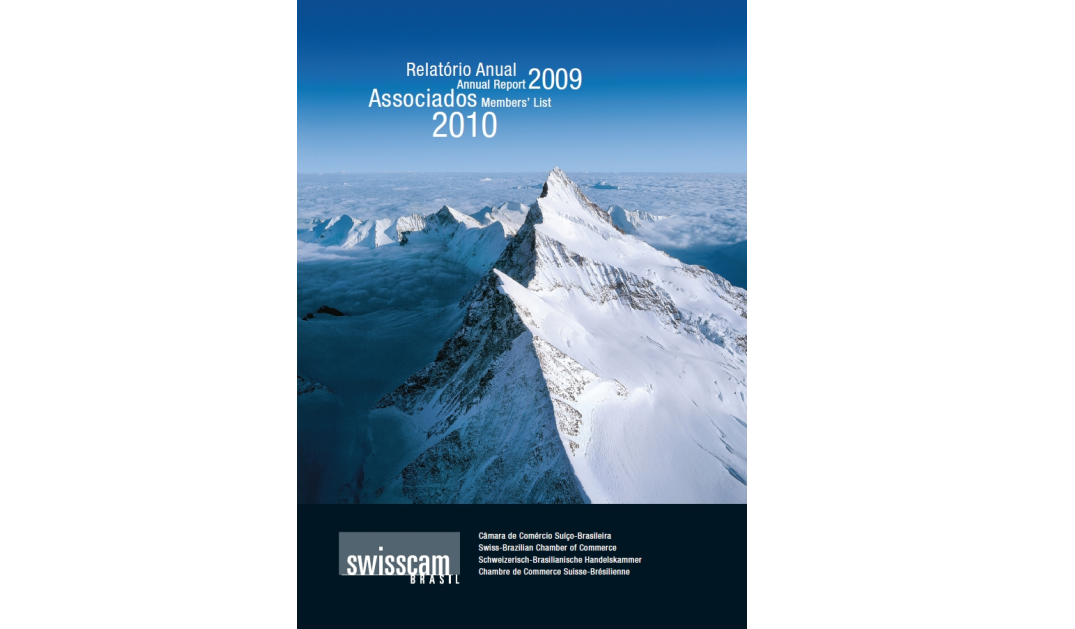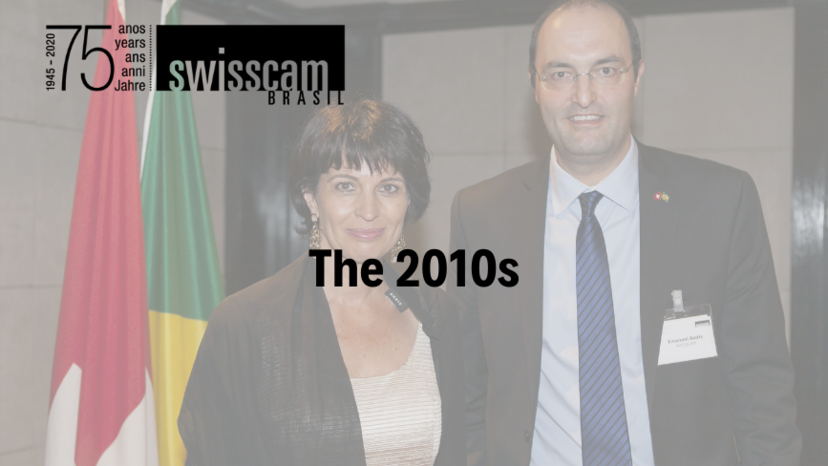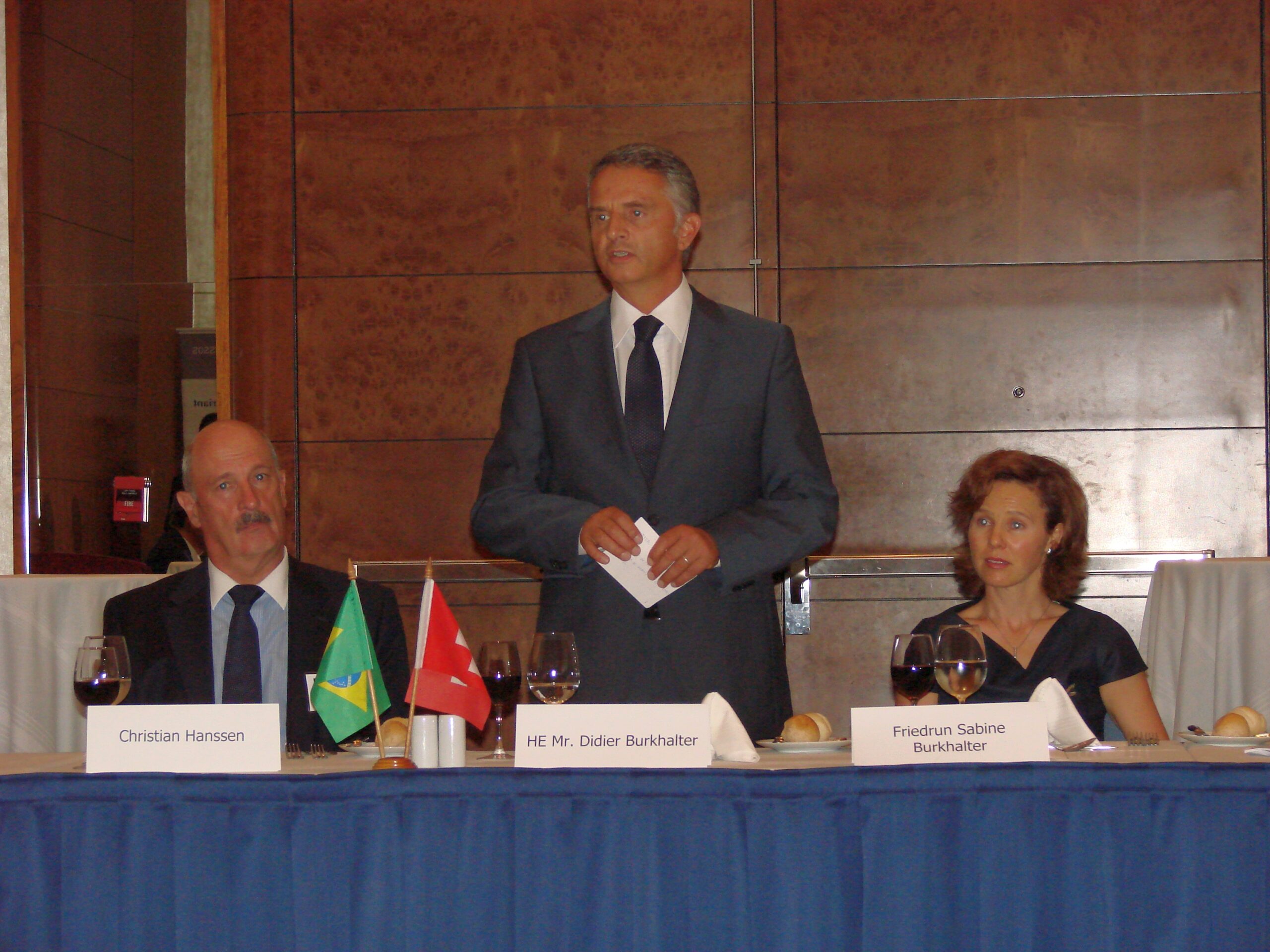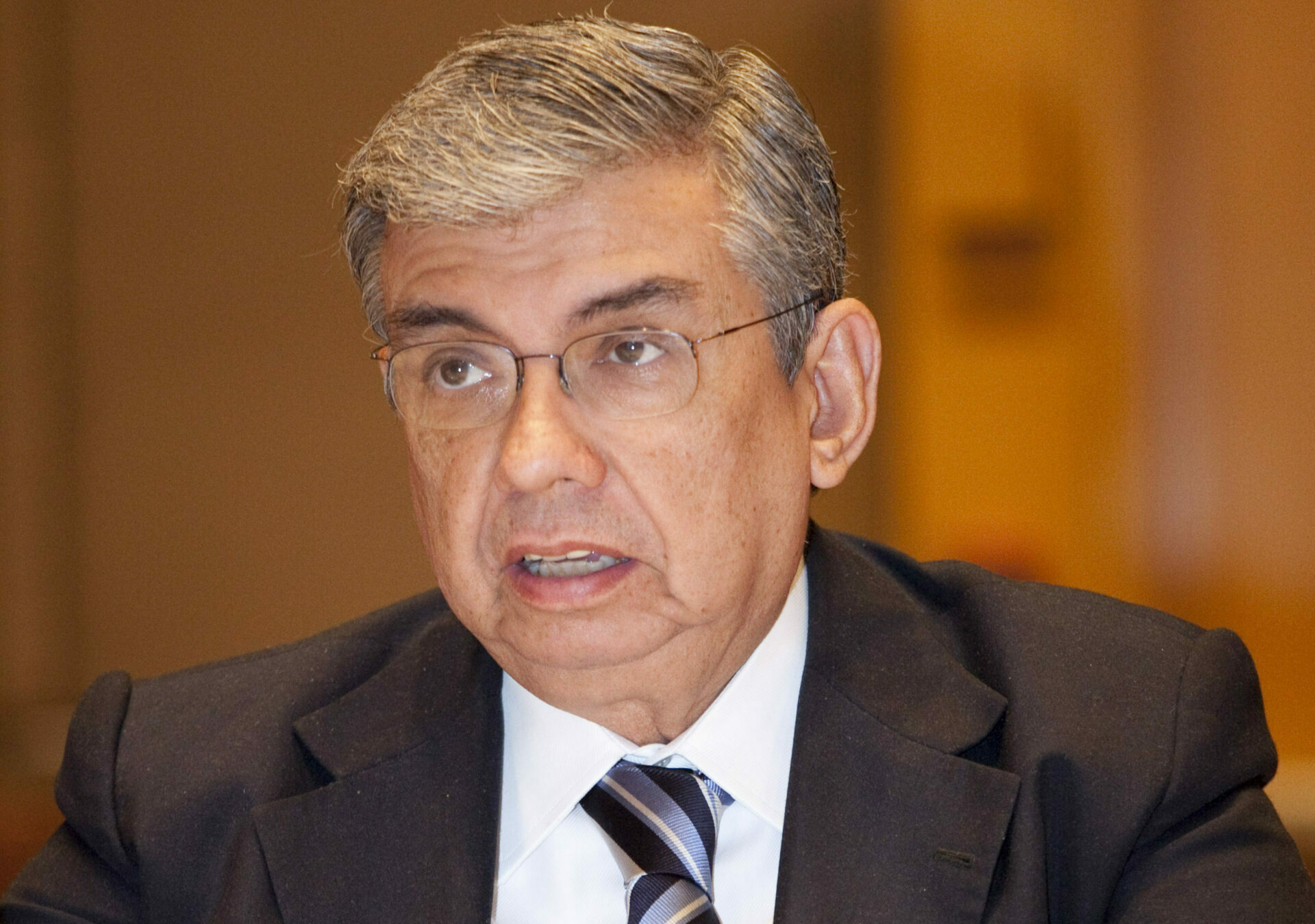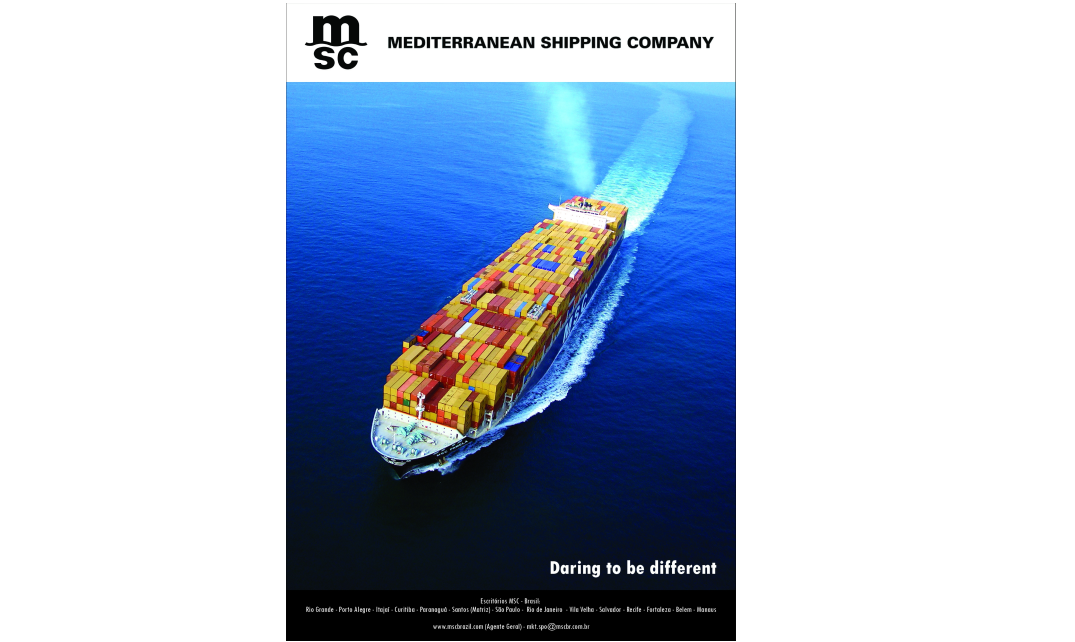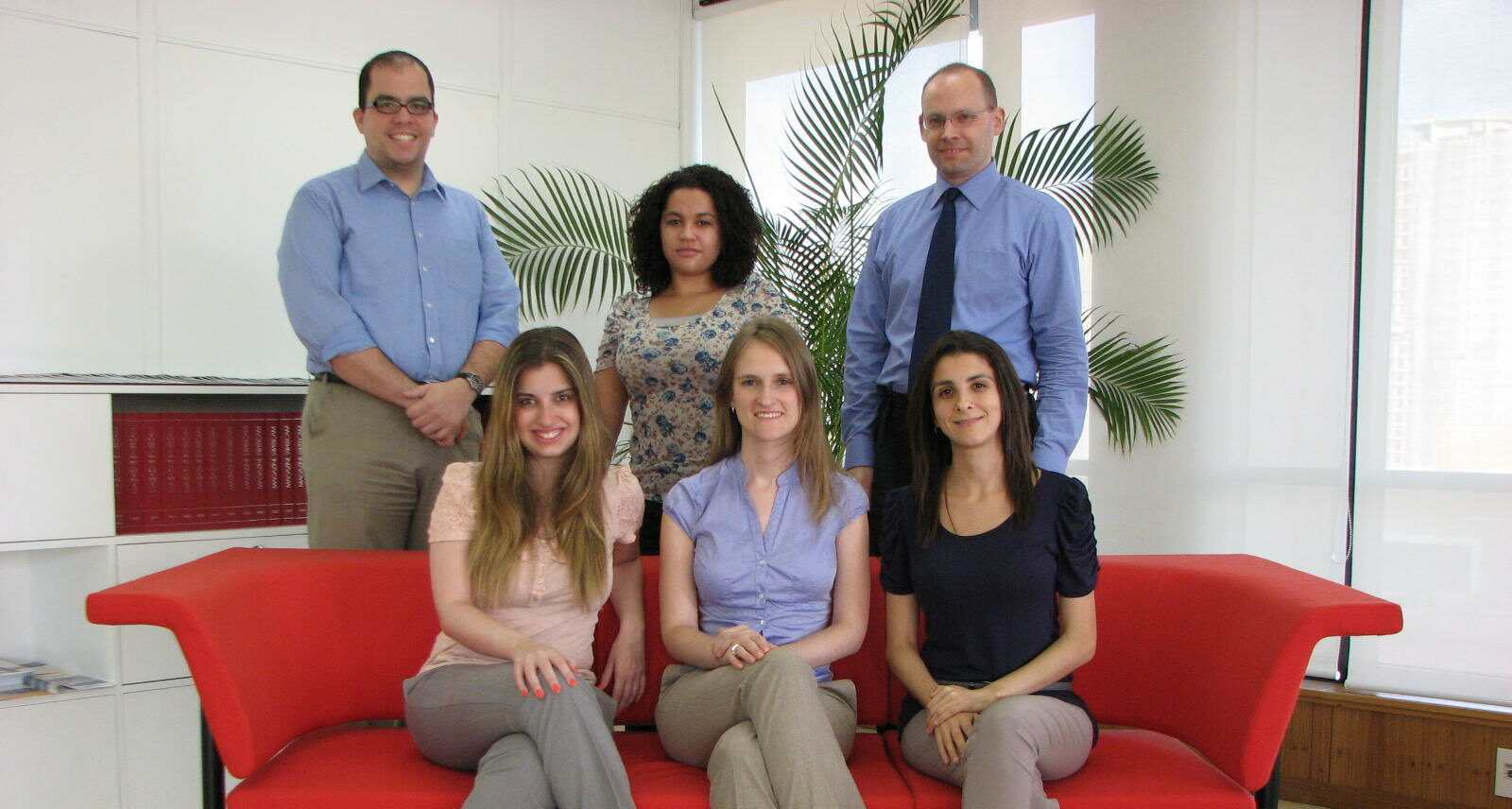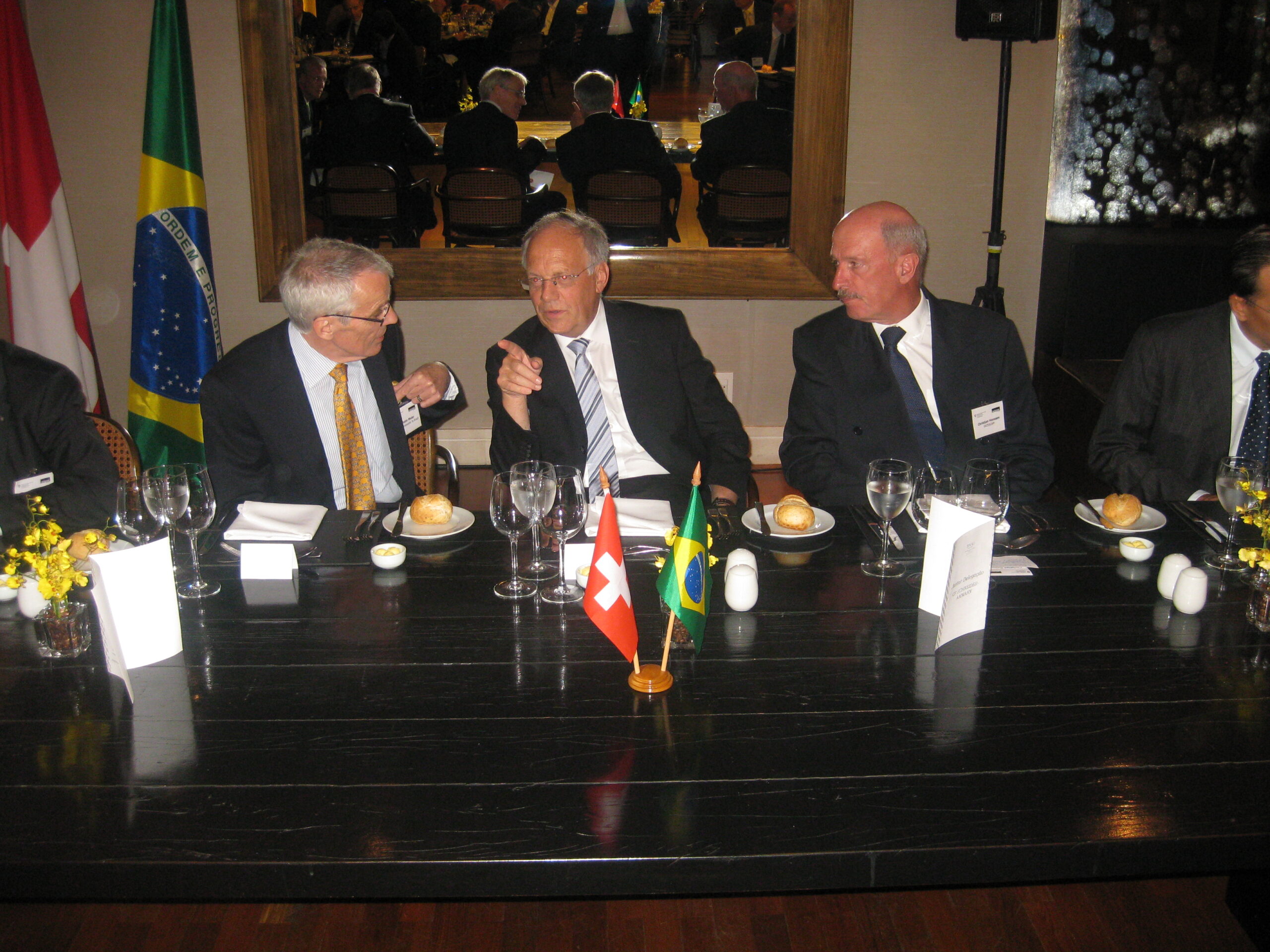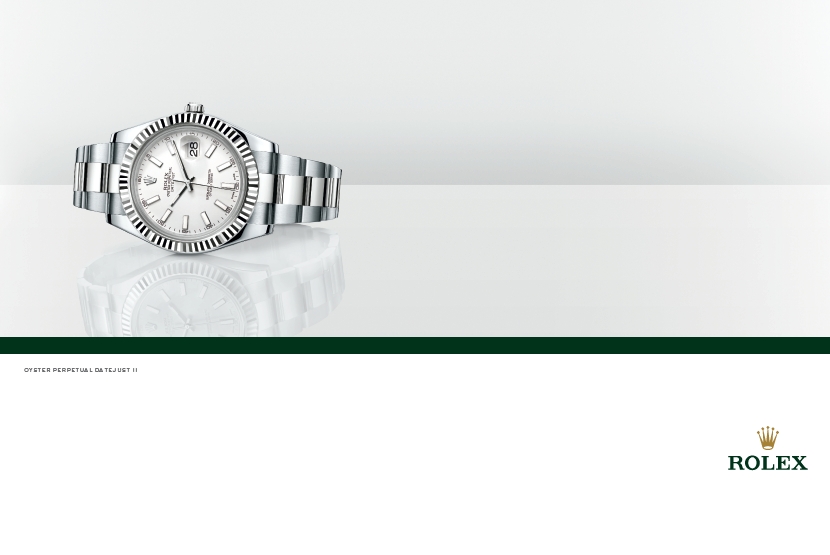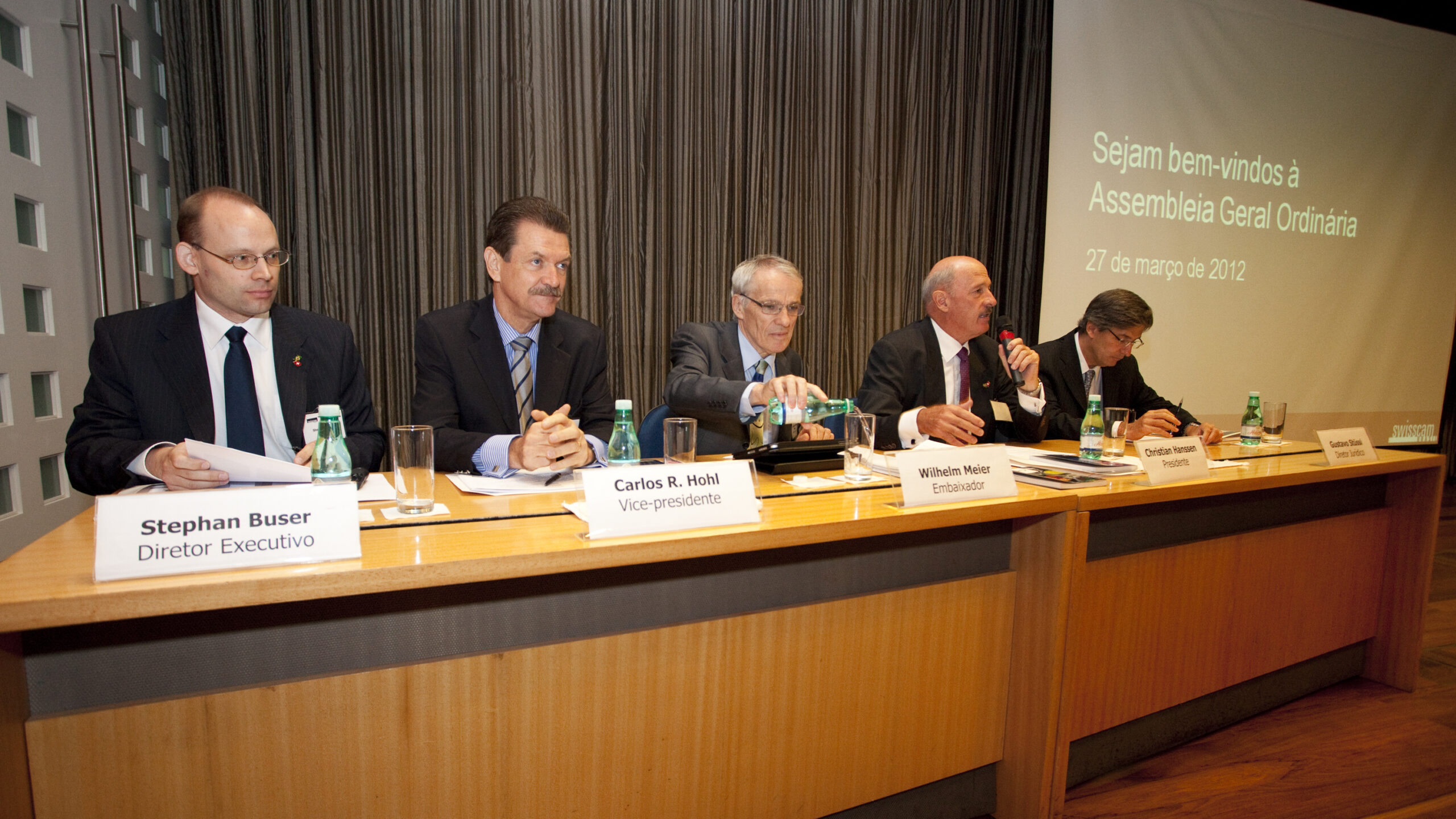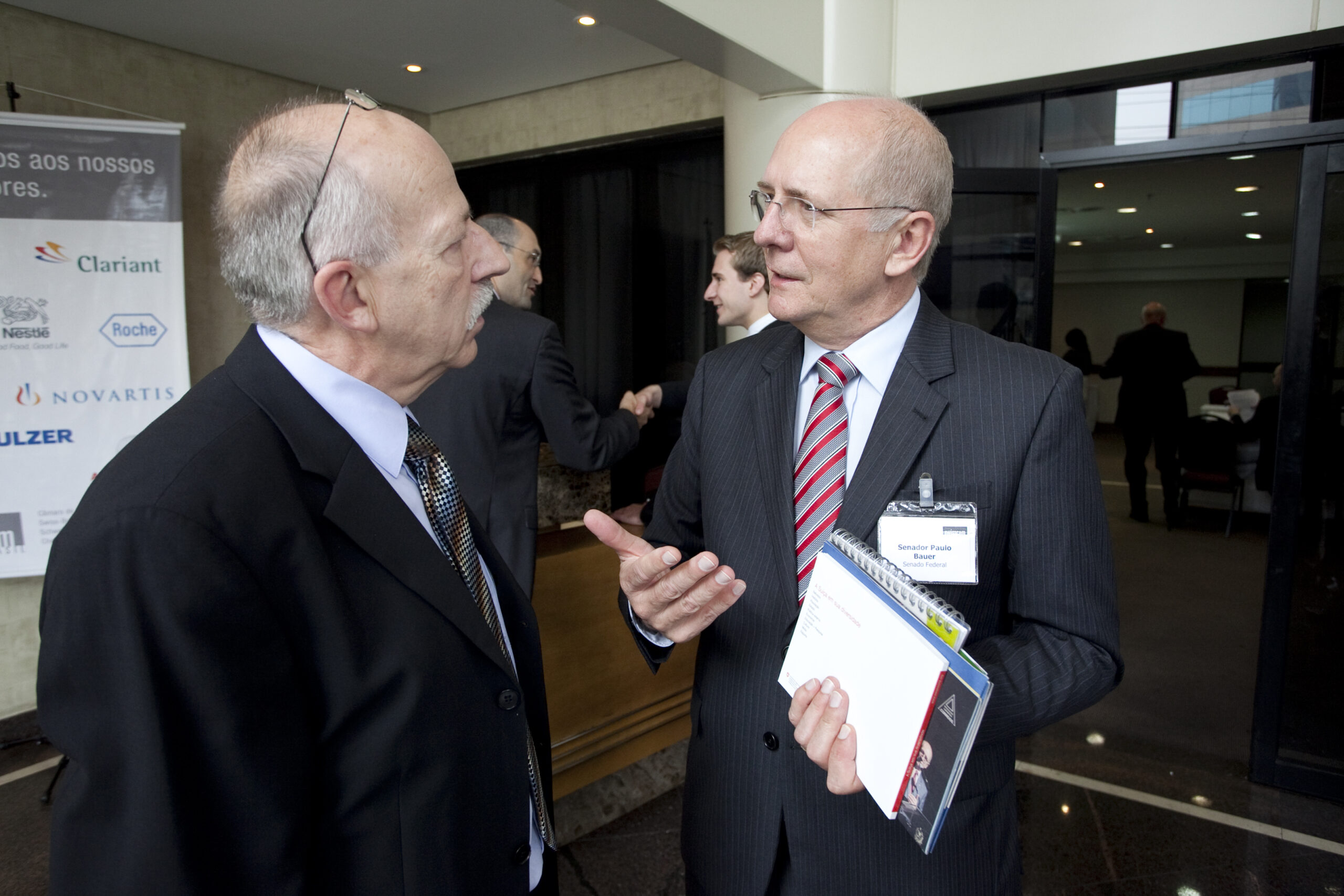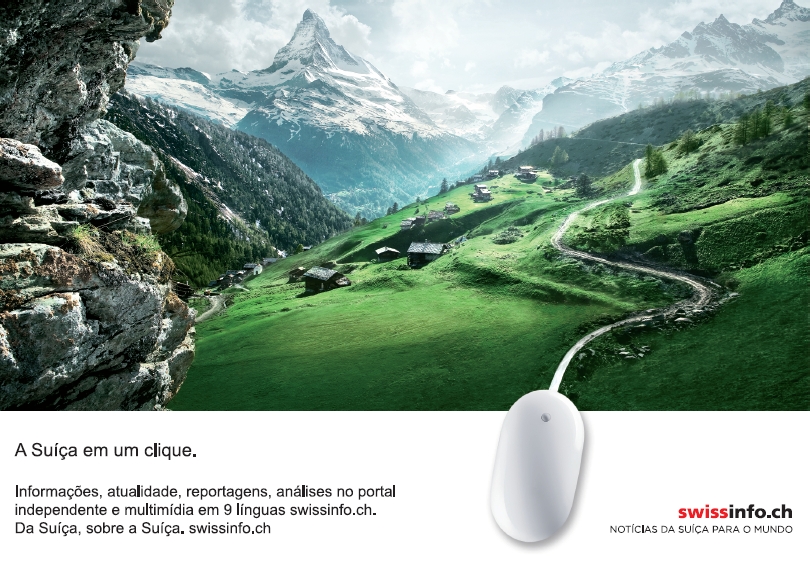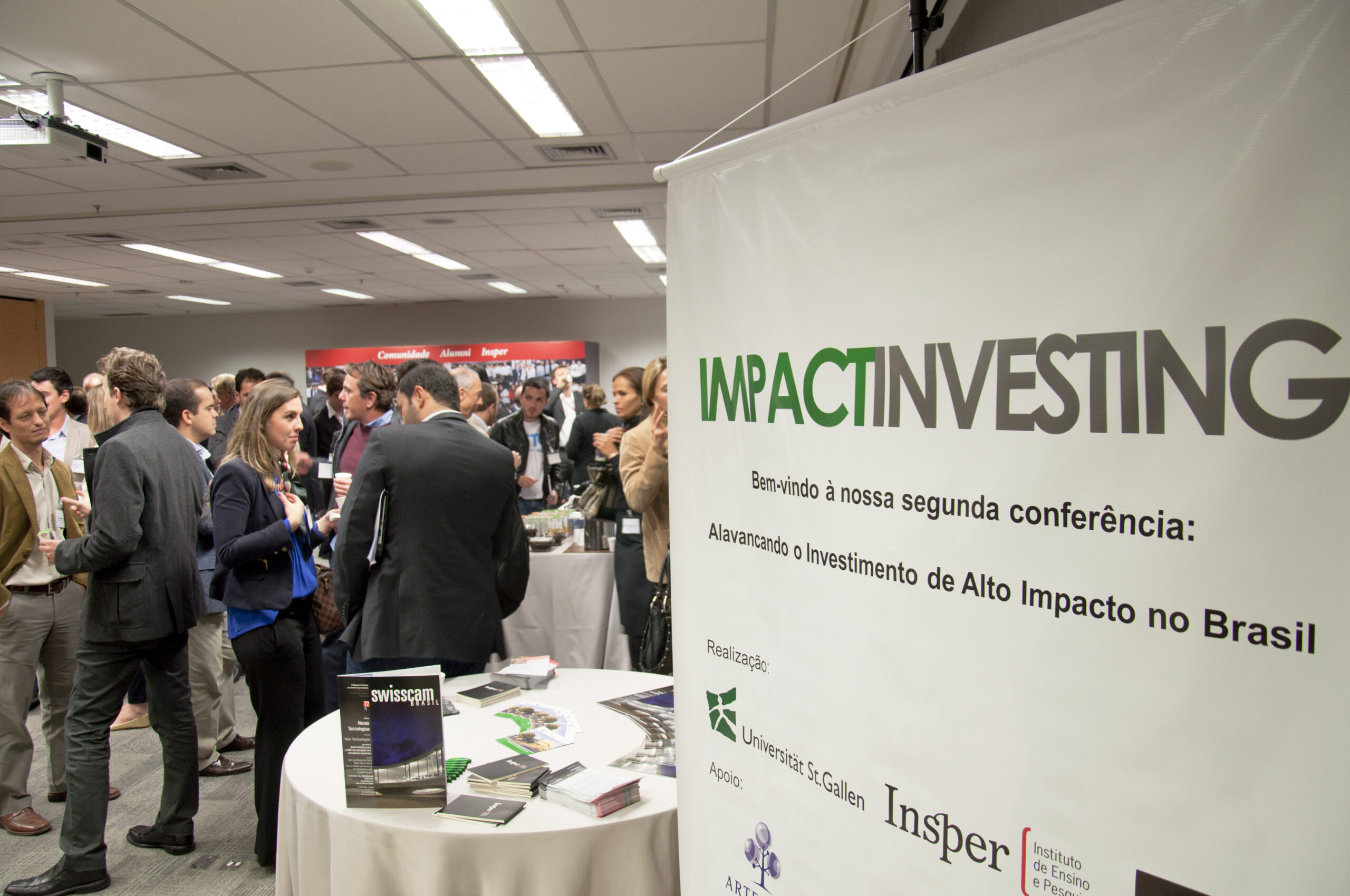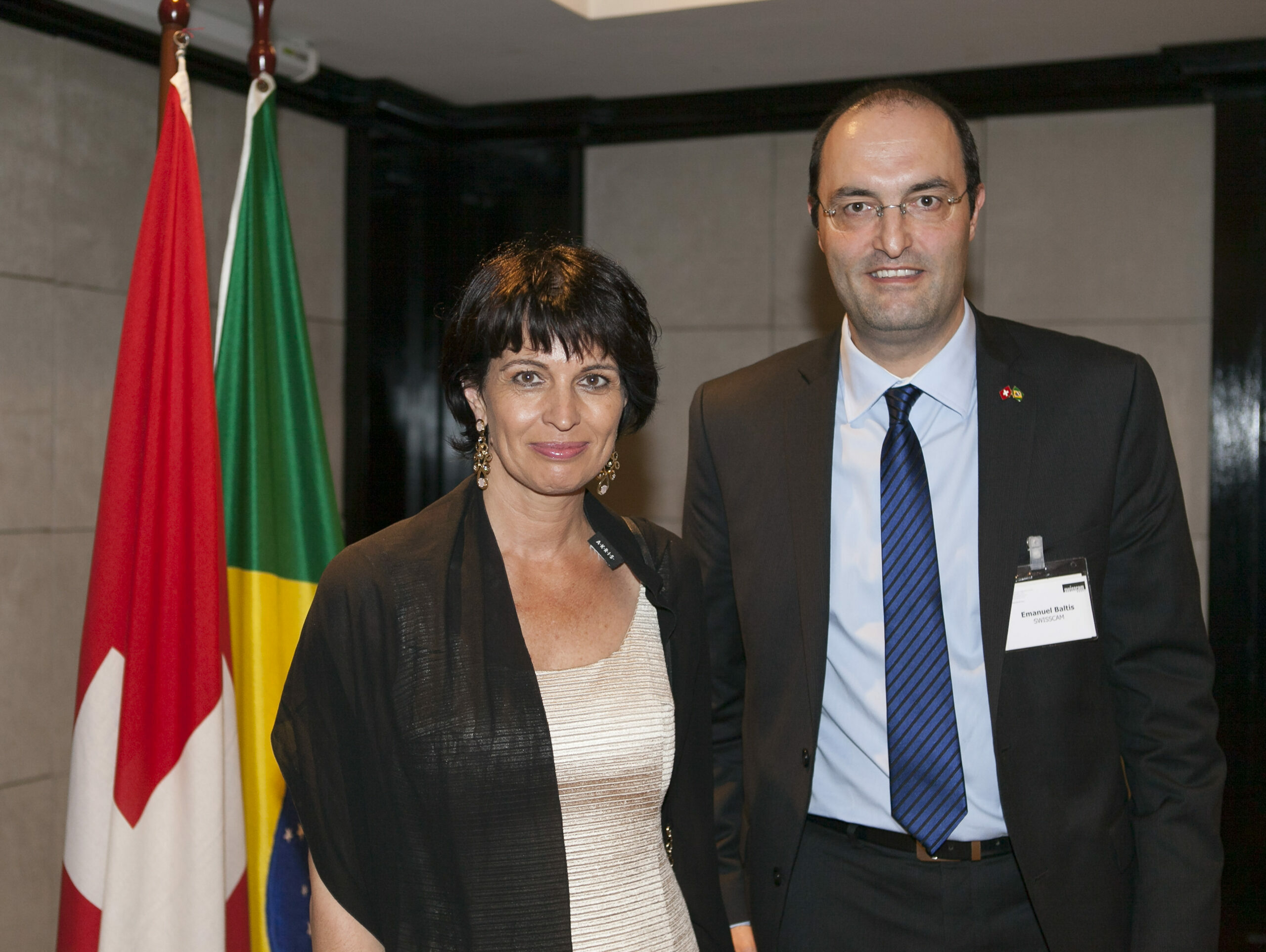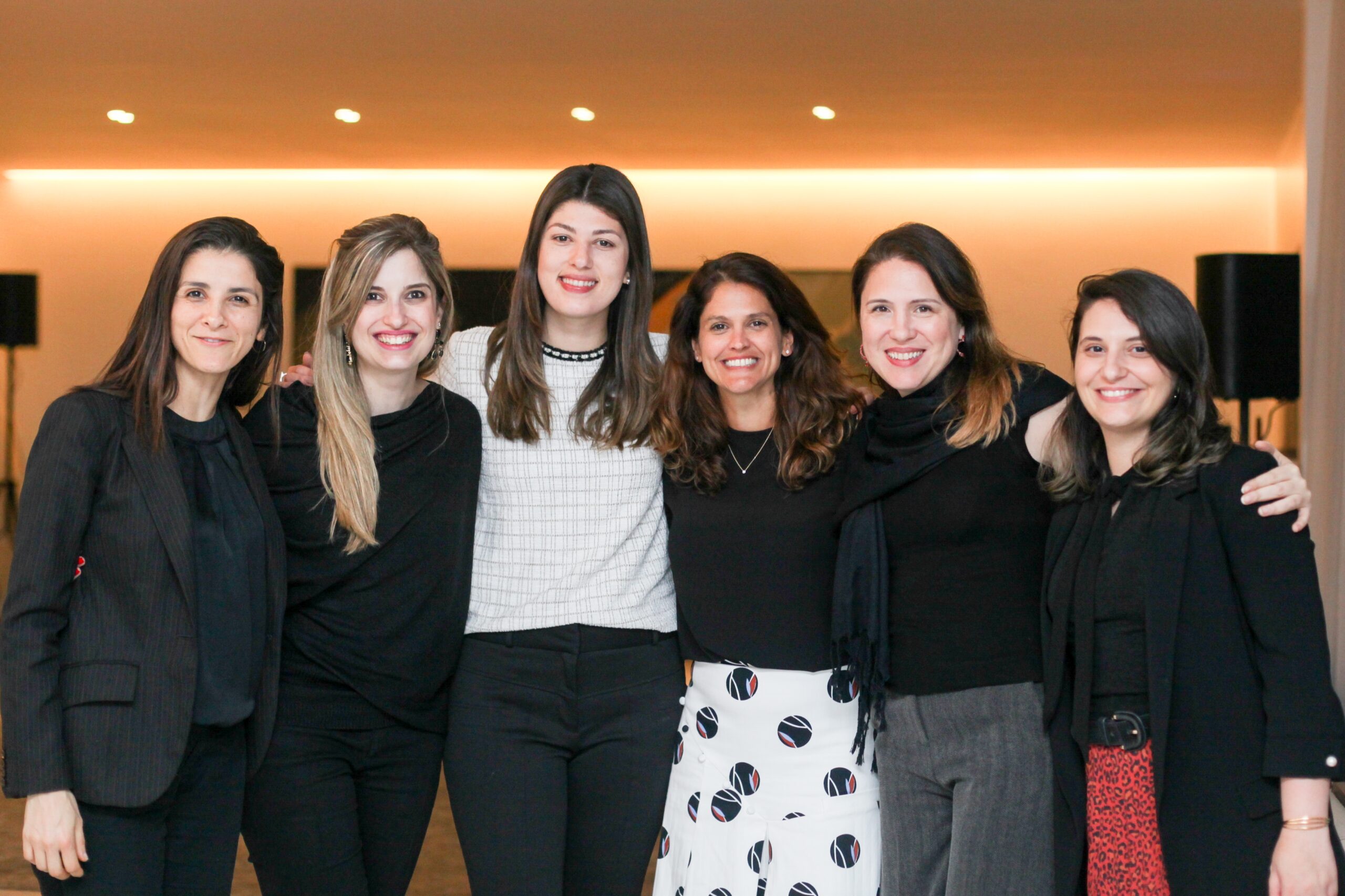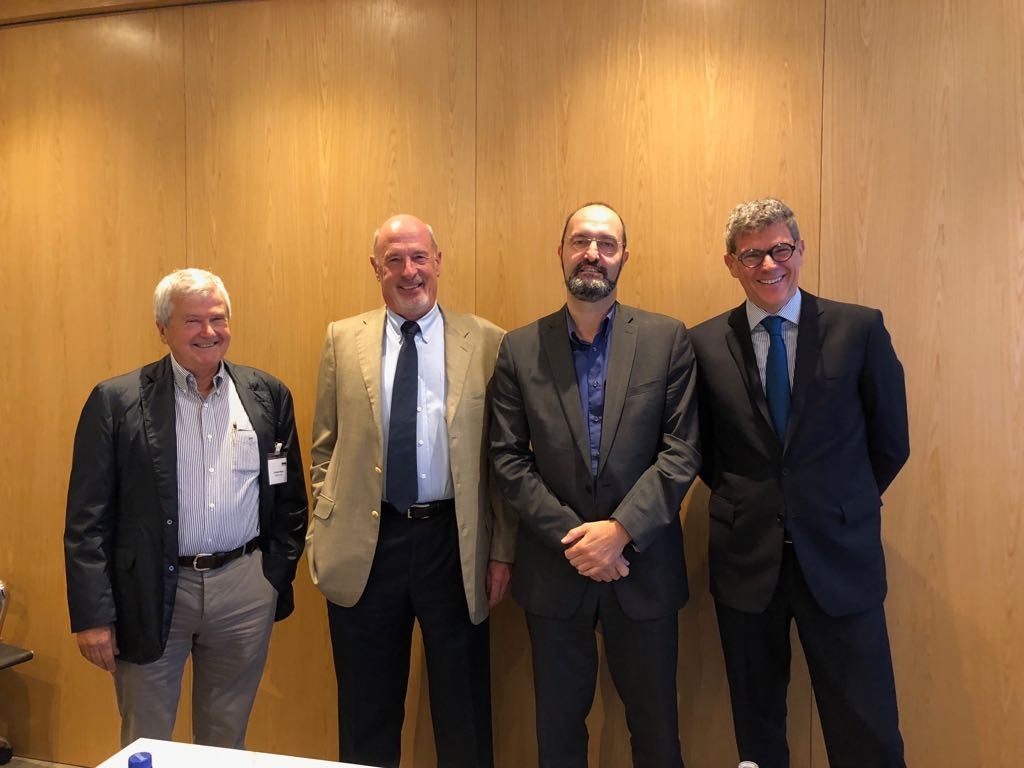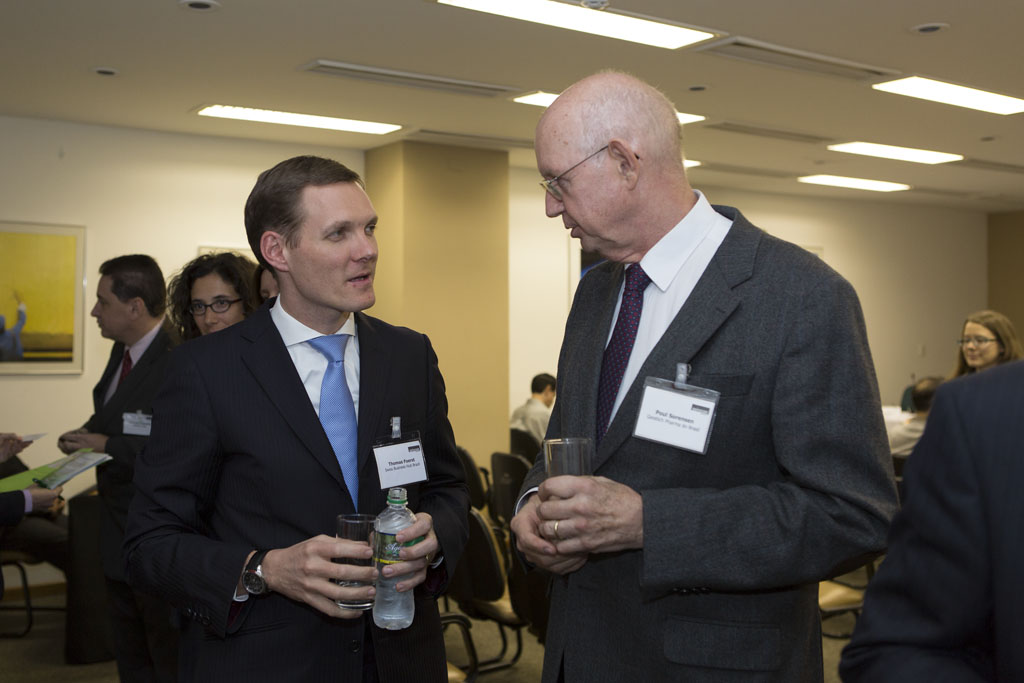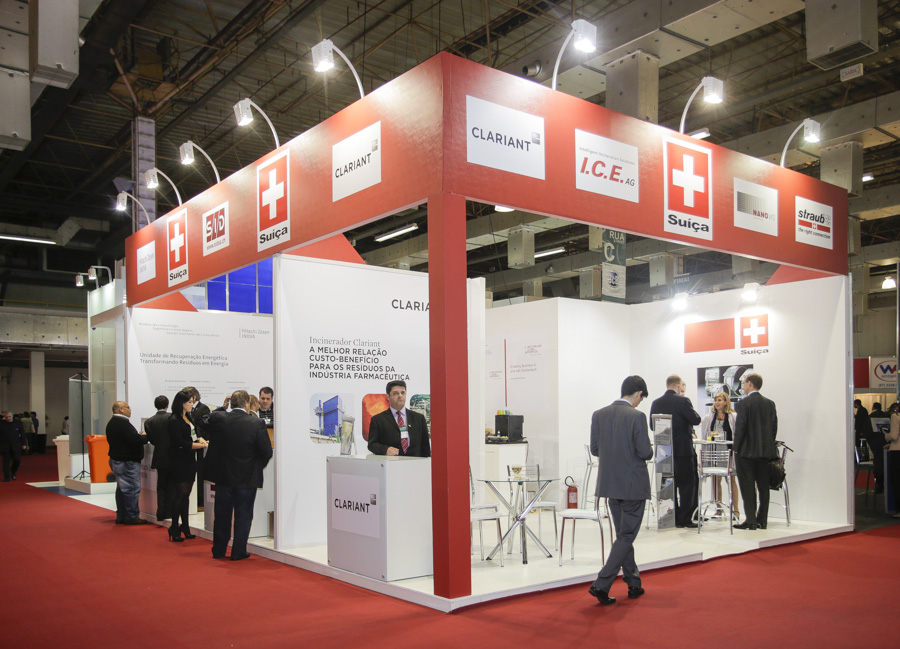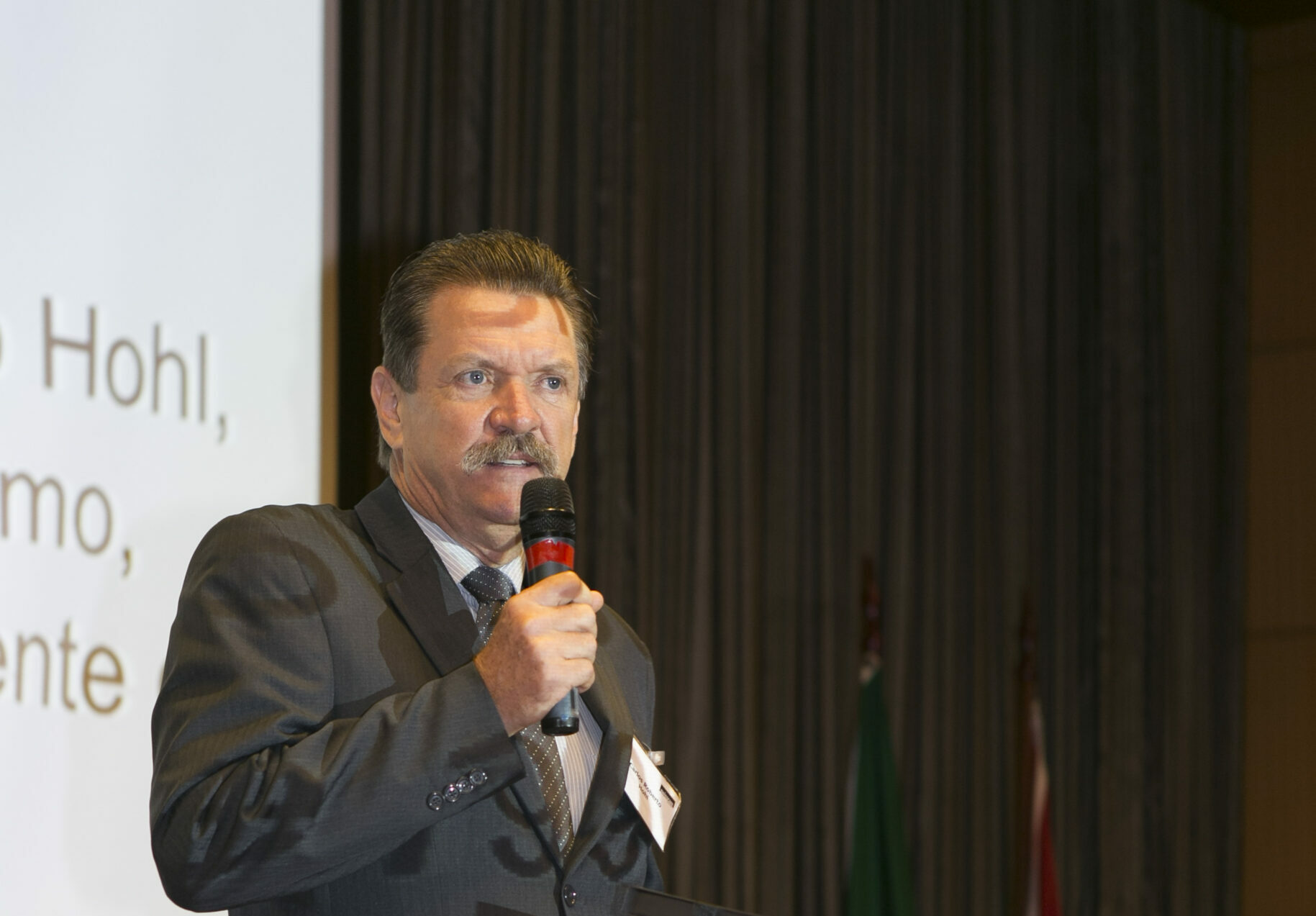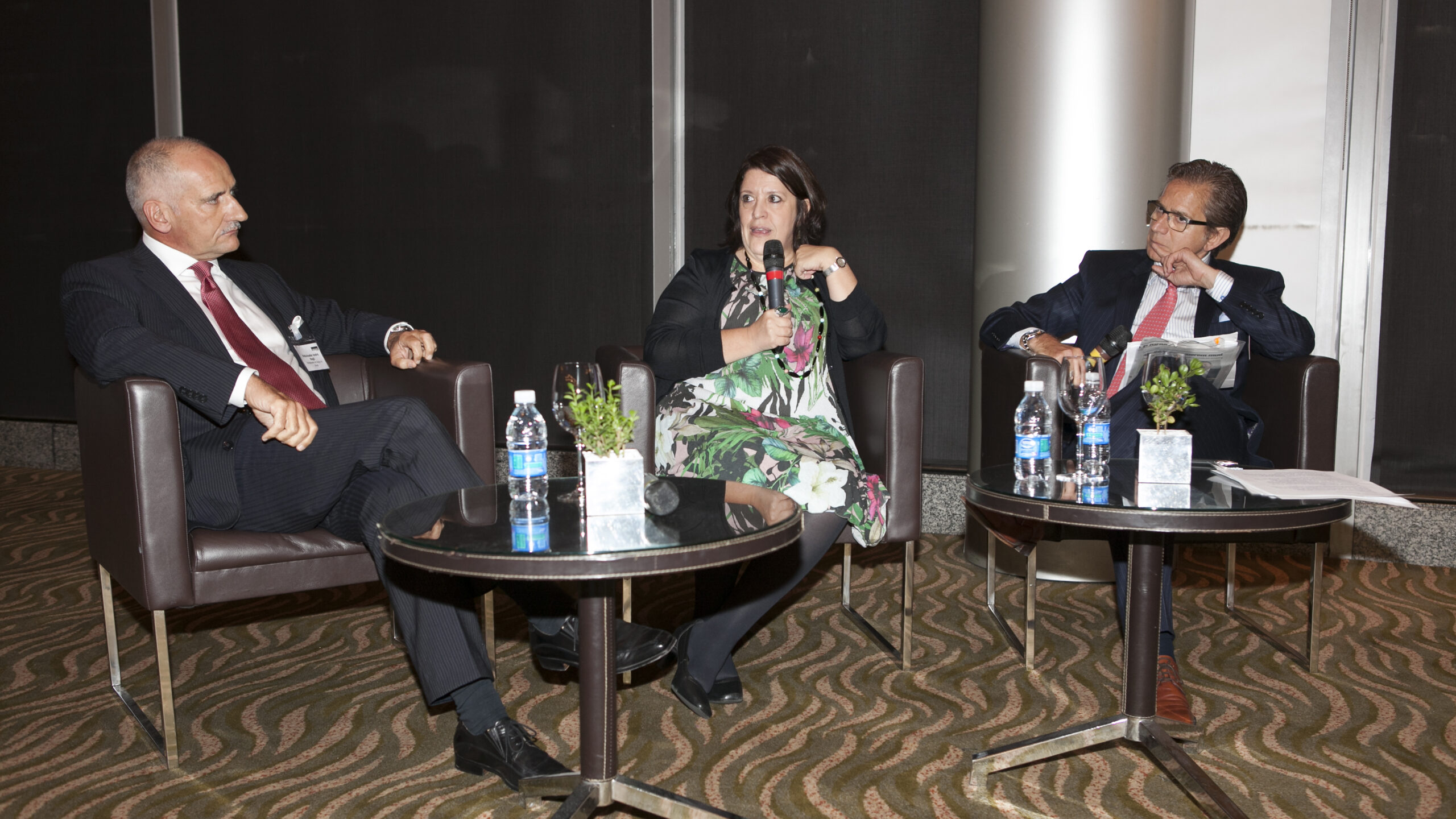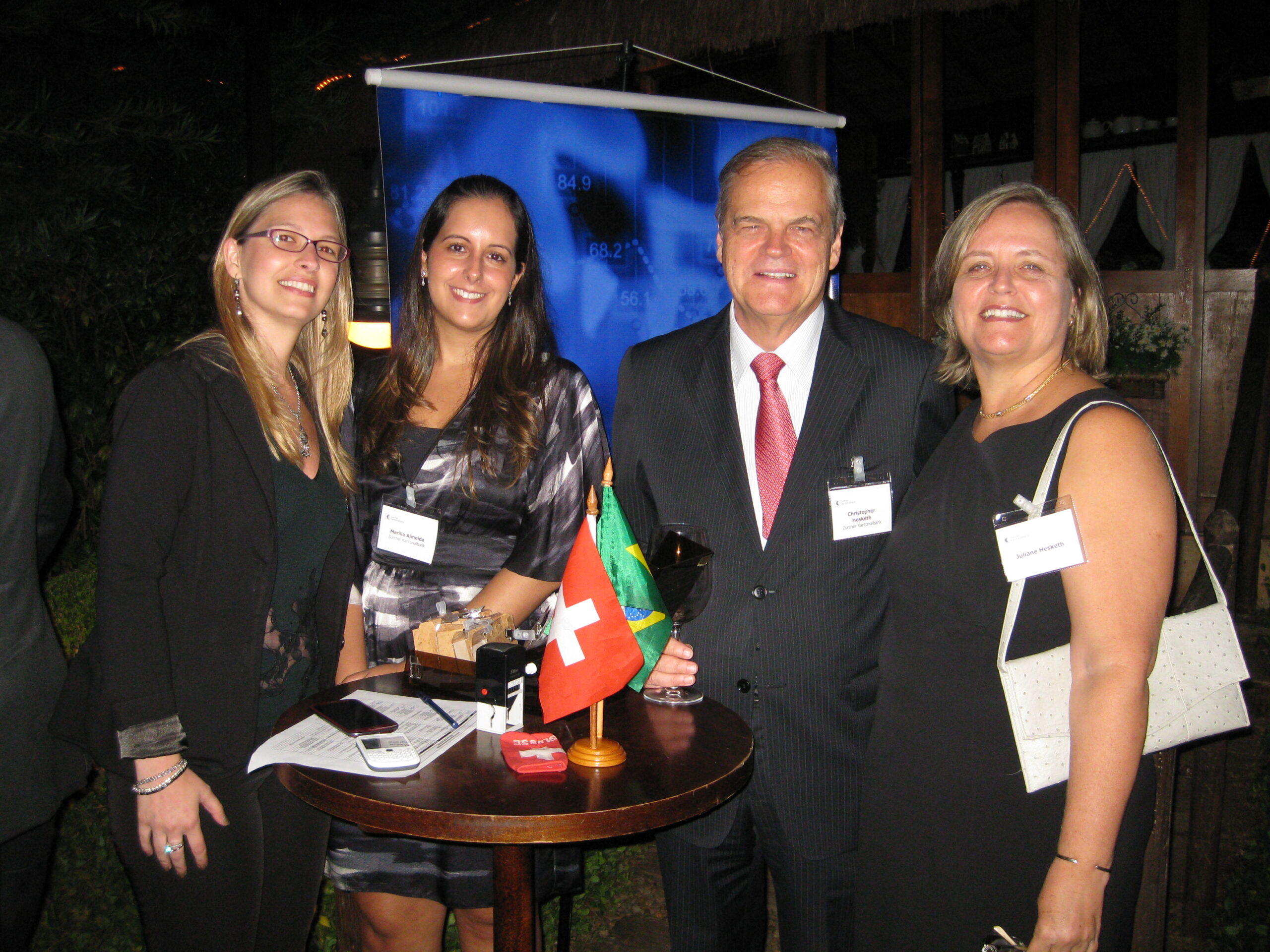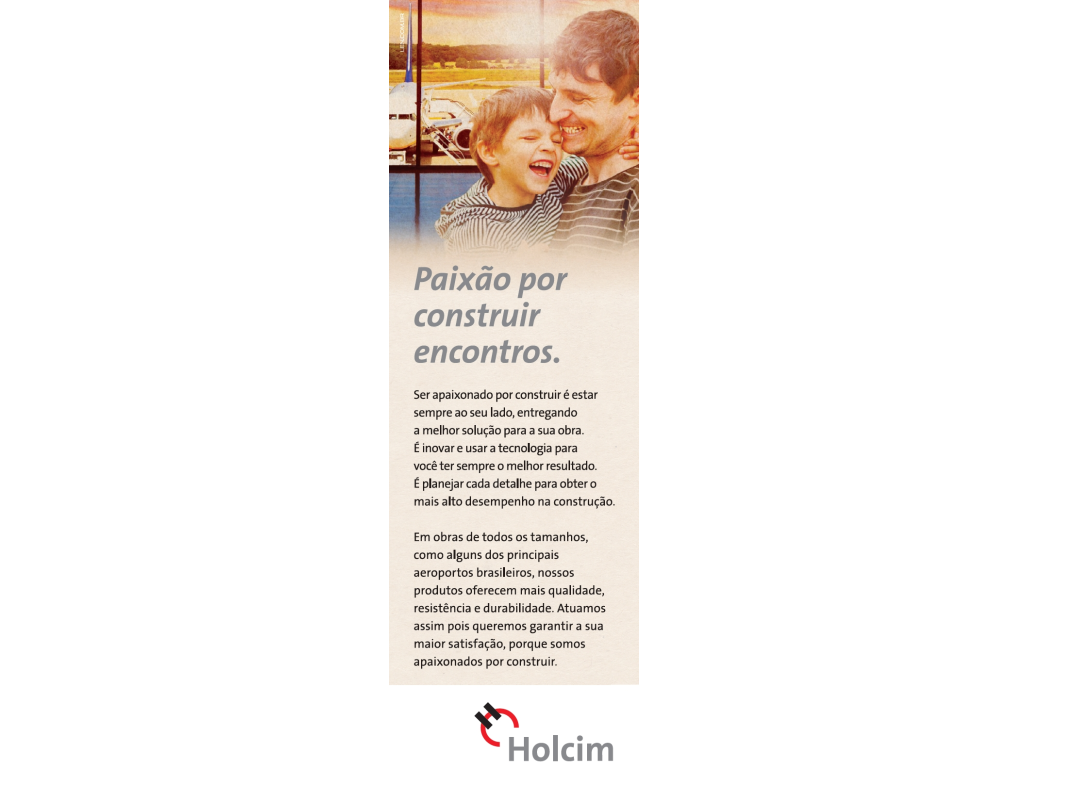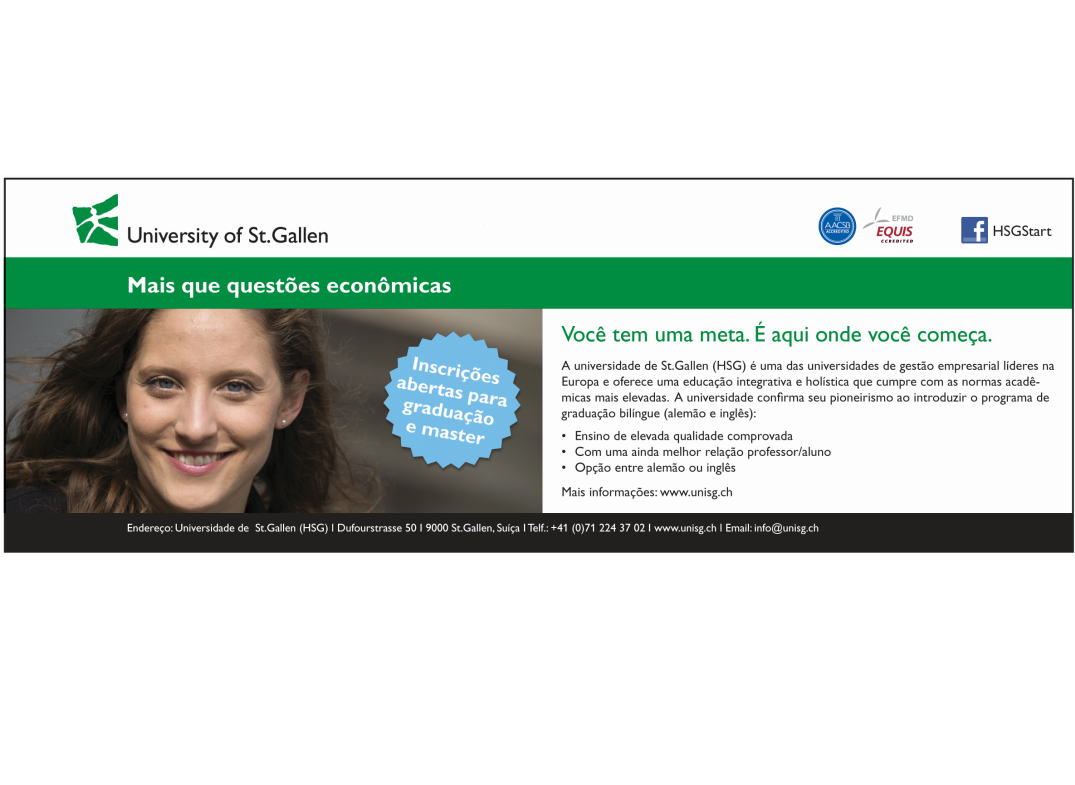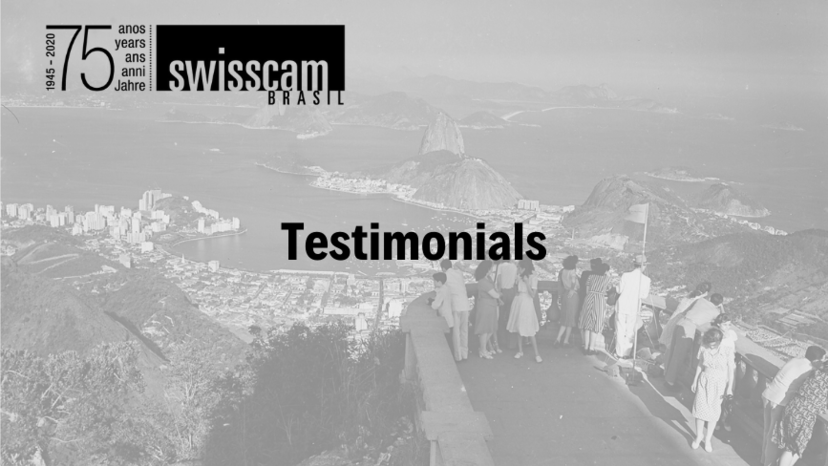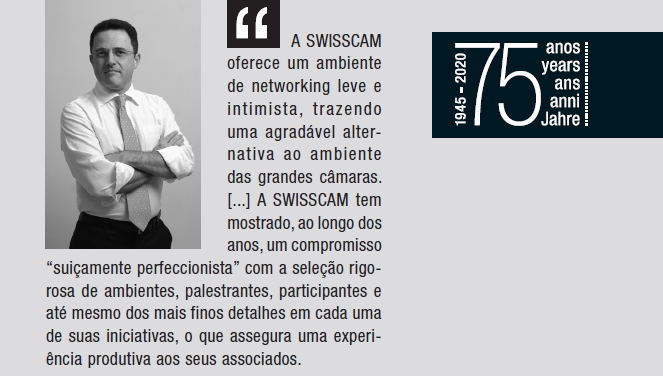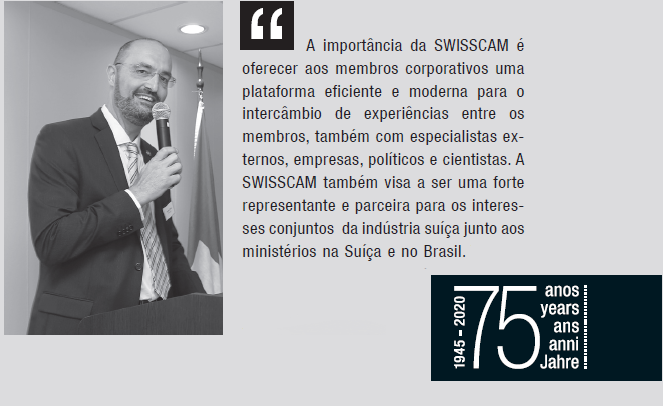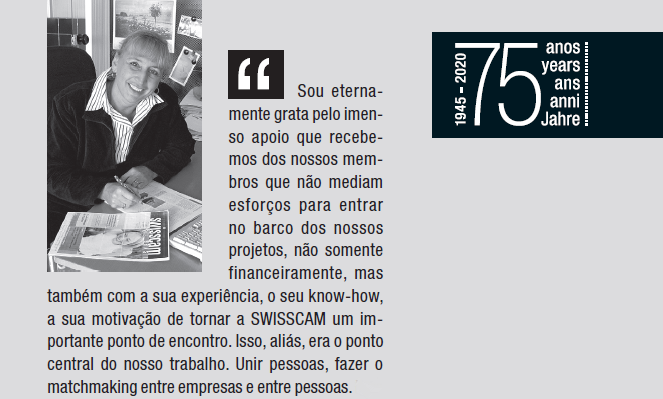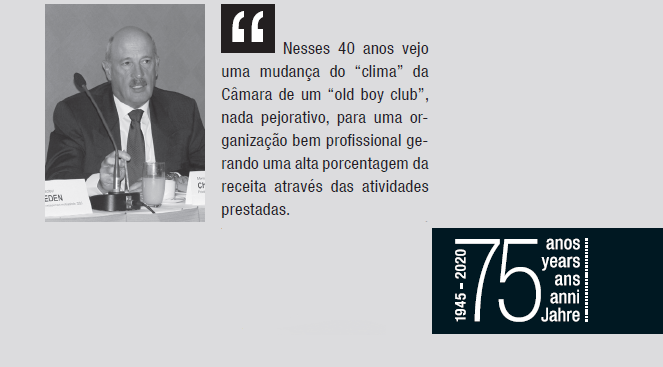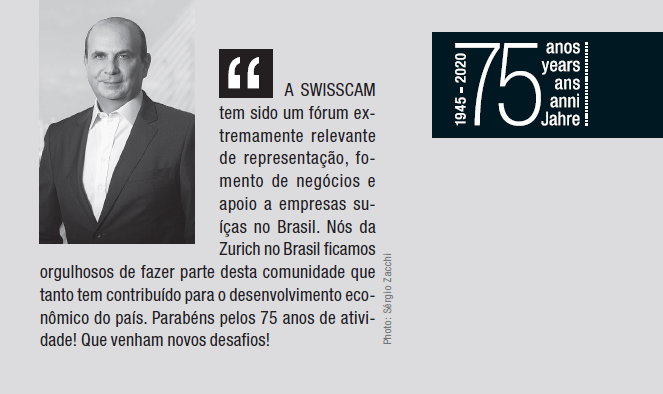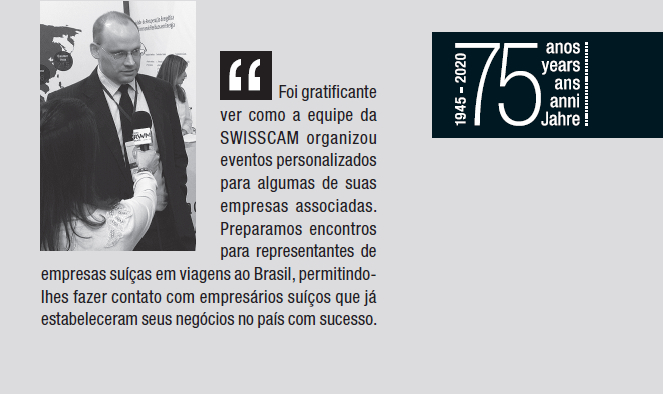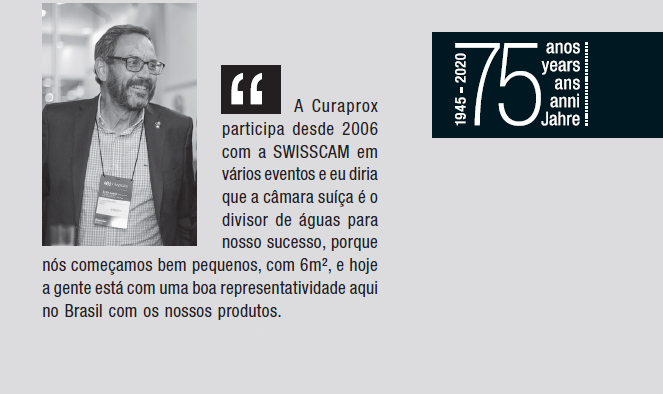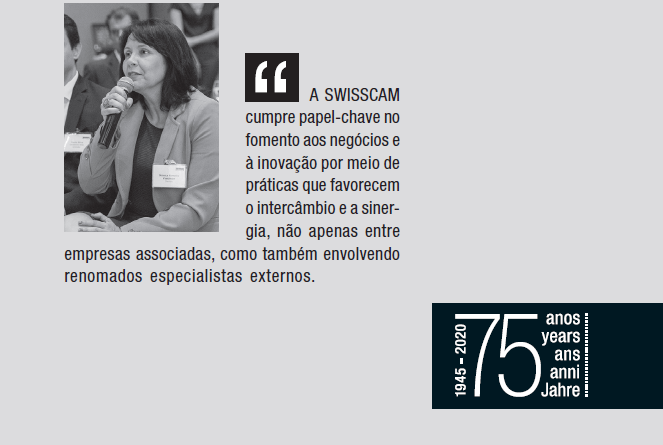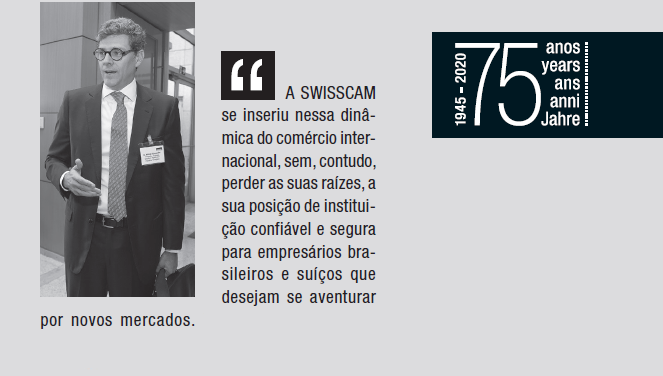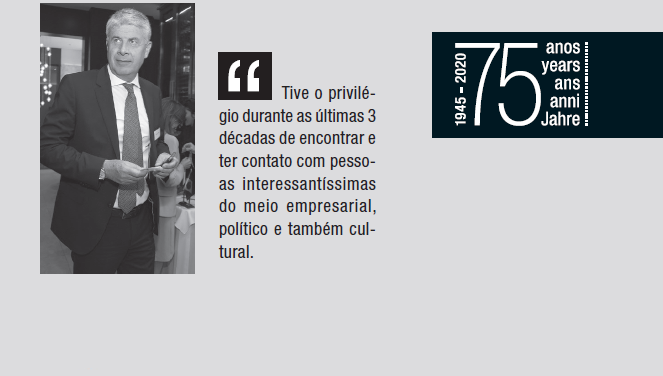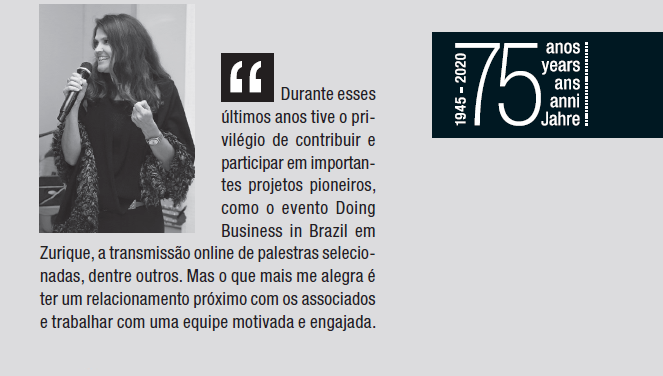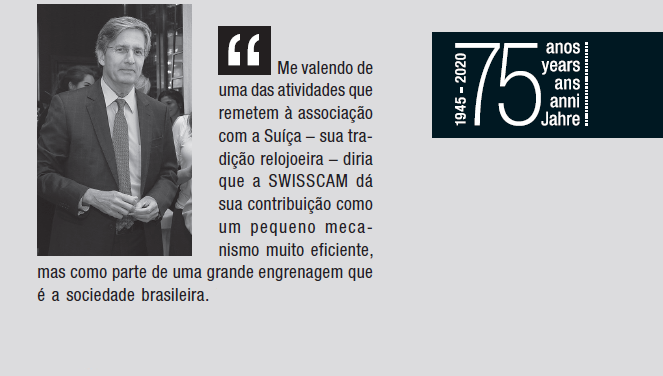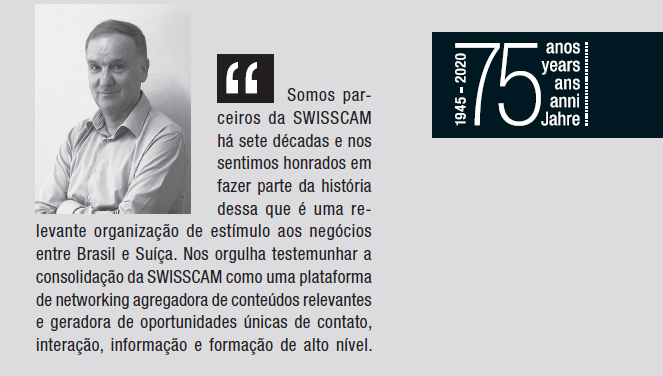To celebrate the 75th anniversary of SWISSCAM, we share historical photos, news and characters that have marked the path of the chamber over these years. Scroll your screen to see photos by decades!
Since the early 1930s, the Association of Swiss Foreign Trade, a group comprised of business leaders from Swiss companies, has worked in an unofficial capacity to provide services for bilateral trade between Switzerland and Brazil. The Association has met weekly for lunch at Casa Heim restaurant in downtown Rio de Janeiro, where they discussed matters related to business between the two countries. They also created monthly reports on the Brazilian political and economic climate that were sent to Switzerland.
During World War II (1939-1945), the sole path for imports from Switzerland to Brazil covered extensive distances: via truck convoys from Geneva through southern France, from Spain to Lisbon, and from there on ships escorted by the Navy to Rio de Janeiro or Santos. During this time, there were years when no commercial trades were made between the countries.
And it was exactly the outlook at the end of World War II and the possibilities that were opening up in bilateral trade that encouraged members of the Association of Swiss Foreign Trade to formalize what had already been functioning as a chamber.
SWISSCAM Presidents
| 1945 – 1948 | Ferdinand Erwin Constantin |
| 1948 – 1950 | Anton Von Salis |
| 1951 – 1952 | Paul Visinand |
| 1953 – 1954 | Georges Parrollaz |
| 1955 – 1956 | Anton Von Salis |
| 1957 – 1958 | Pierre Grandchamp |
| 1959 – 1960 | Anton Von Salis |
| 1961 – 1962 | Gustav A. Baumann |
| 1963 – 1964 | Anton Von Salis |
| 1965 – 1966 | Gustav A. Baumann |
| 1967 | Pierre Grandchamp |
| 1968 – 1970 | Alex Haegler |
| 1971 | Martin Russak |
| 1972 | Walter Kleinert |
| 1973 – 1974 | Lucien Marc Moser |
| 1975 – 1976 | Jean-Pierre Brulhart |
| 1977 | Aldo Heusser |
| 1978 | Norbert Gmuer |
| 1979 – 1980 | Constant Rochat |
| 1981 – 1982 | João Ulrich Pestalozzi |
| 1983 – 1984 | Hansruedi Wipf |
| 1985 – 1986 | João Ulrich Pestalozzi |
| 1987 – 1988 | Fritz Greuter |
| 1989 – 1991 | Urs Plaz |
| 1992 – 1995 | Kurt P. Pickel |
| 1996 – 1999 | Hans Jöhr |
| 2000 – 2006 | Ernesto Moeri |
| 2007 – 2011 | Christian Hanssen |
| 2012 – 2017 | Emanuel Baltis |
| 2018 – 2019 | Philip Schneider |
On March 27th, 1945, the Constituent General Assembly of the Swiss Chamber of Commerce of Brazil – SWISSCAM Brazil – was held in the City of Rio de Janeiro, the capital of Brazil at that time. There were 111 founding members.
In those days, import trade prevailed. One of the Chamber’s first newsletters listed each of the goods arriving on the Swiss steamer Saint Cergue: 173 watches and pieces of jewelry, 592 gramophones and accessories, 446 chemicals such as aniline dyes, 22 textile products like artificial silk clothing, 12 prints.
The Chamber’s first headquarters was located at 45 Cândido Mendes Street, Glória neighborhood in Rio de Janeiro. The branch in São Paulo was housed in a large manor at 183 Caio Prado Street, known as Maison Suisse.
The post-war import boom was expressed in the number of members, including private citizens and companies, which reached 456 in 1948! The first list of members included Ciba (which gave rise to Novartis in 1996 after the merger with Geigy and Sandoz), our oldest and most established associate.
In 1950, as a symbol of the development and consolidation of the work done by the Swiss Chamber of Commerce of Brazil, the Annual Report started being published and distributed to members. Nestlé, Roche, Schindler, Swiss Bank Corporation, Swissair, Ciba and Sandoz were among the first to advertise in the Report.
In 1954, the Chamber staged the Swiss pavilion, intently participating in the 1st São Paulo International Fair, commemorating the city’s 4th Centennial.
The following year, the year in which it marked its first decade, the Chamber moved its headquarters to Swiss House at 157 Cândido Mendes Street. The inauguration celebration took place in April of the following year and was attended by President Juscelino Kubitschek. Under the slogan “50 years in 5”, his government sought to carry out the National Development Plan, integrating the country, building Brasília as the new capital, promoting industry and diversifying the economy.
Swiss House was an eleven-storey building that served as the center of activities for the 12,000 Swiss residing in Brazil at that time. Swiss companies doing business in Brazil also housed their offices there. The restaurant on the ground floor served traditional food, hosted community events and was operating until 2018.
In 1960, Brasília was inaugurated as the capital of Brazil.
With the growing association of industries, the Chamber changed its name on June 18th, 1961 and became the Swiss Chamber of Commerce and Industry of Brazil.
The most popular lunch meeting of that decade was in 1963, attended by Governor Carlos Lacerda of the State of Guanabara (a territory that today is part of the City of Rio de Janeiro). Alex Haegler, President of the Chamber from 1968-1970, recalls that he “was an expert at being antagonistic and had extremely topical and tough issues to discuss. He was, in fact, a very influential speaker at the time.”
From 1964, Brazil underwent years of Military Dictatorship. Numerous new laws were enacted and the Chamber began to provide essential legal assistance services, especially for small and medium-sized companies that did not maintain a specialized department.
SWISSCAM celebrated its 25th anniversary in 1970 with a banquet at Swiss House, attended by Ambassador Giovanni Enrico Bucher and CACEX director Benedicto Fonseca Moreira, the guest of honor.
In 1972, the Chamber’s headquarters was moved from Rio de Janeiro to São Paulo, at 163 Caio Prado Street, next to Maison Suisse.
The following year, from November 22nd to December 2nd, the Chamber organized and held Swiss Expo 73 in the Anhembi pavilions, with 223 exhibitors in industrial machinery, textile equipment, packaging, graphic arts, watches, chemical and food products, and included businesses like banks, tourism agencies, a restaurant with regional foods and an exhibition of industrial design. The entrance was colored by the flags of each of the cantons of Switzerland.
In 1976, Maison Suisse located at Caio Prado Street was sold, closing a chapter in the history of SWISSCAM with a massive farewell party that included lots of live music, streamers and balloons. On January 24th, 1977, the office began working out of the eighth floor of 53 Marconi Street, São Paulo.
The 1980s marked a time for Brazilian re-democratization and economic instability. In 1988, Brazil had the largest trade surplus, its highest inflation of all time and a new constitution.
Earlier this decade, the Chamber changed its name to the Swiss-Brazilian Chamber of Commerce.
In 1986, the Chamber sponsored the Tecno-Switzerland-Brazil Technological Trade Symposium at the Grand Hotel Ca’d’Oro in São Paulo, an event featuring presentations by technicians from numerous Swiss companies – such as BBC Brown Boveri, Nestlé, Sulzer, Swiss Bank Corporation, Ciba-Geigy, Tettex – on applying technology to industry.
Towards the end of the decade, the Chamber began organizing year-end dinner dances attended by members’ wives. In addition to dancing, there were other attractions offered like documentary screenings. The first ones were by Jean Manzon and the Office Suisse d’Expansion Commerciale – OSEC (Swiss Center for Commercial Expansion), on Switzerland.
The São Paulo and Rio de Janeiro branches merged in 1989, and new statutes were approved in two Special Meetings, one held in each city. The new organization enabled administrative streamlining and significantly reduced expenses. The headquarters were moved to a suite at 1004/06 Paulista Avenue.
The 1990s were shaped politically by the impeachment of President Fernando Collor and economically by the monetary reform of the “real” currency plan. In terms of international trade, the creation and consolidation of Mercosur was one of the most prominent events. In 1992, the United Nations Conference on the Environment and Development, also known as Eco-92, was held in Rio de Janeiro to discuss global environmental issues.
Information technology permeated the institutions’ daily lives and SWISSCAM initiated its process of modernizing and mechanizing administrative services with the installation of a Microtec 286 computer, the purchase of a Laserdesk printer, and a Canon copier. And at the end of the decade, the Chamber published its homepage on the Internet.
SWISSCAM turned 50 in 1995, released a commemorative logo and held a party for members at the National Club.
In order to casually gather high-level decision makers, the Chamber created the Presidents’ Club in 1998, a tradition that continues to this day.
The 2000s were characterized by relative political and economic stability in Brazil, benefiting bilateral trade activities between Switzerland and Brazil.
At the turn of the millennium, the Chamber received a new logo and became known as SWISSCAM Brazil. It also acquired new headquarters at a penthouse located on 13797 Nações Unidas Avenue, in the City of São Paulo. During this period, the annual reports started featuring thematic articles and the Chamber’s magazine began offering more comprehensive content dealing with business, including touristic and cultural issues, in addition to providing a space for members to express themselves. The website was also redesigned. All members earned the right to a vote regardless of category.
Sustainability, social responsibility and impacts from climate change – all notable topics that topped the news in the 2000s – were recurrent issues within the Chamber’s activities. This included encouraging Swiss companies to take part in FIMAI, at the time the largest and most prestigious trade fair on environmental technology in Latin America.
In 2002, SWISSCAM reopened an office in Rio de Janeiro to support Rio members, which remained active until 2006. It also created the committees, which put on the lectures, symposiums and workshops on subjects of interest. That was also the year that the Chamber’s participation in trade fairs intensified, an area of expertise that is fully entrenched today and that offers members activities ranging from booth rentals to staff support and promotion.
SWISSCAM turned 60 in 2005. It created a special logo and held a musical cocktail party at the headquarters for its members.
In 2008, a new change of address and the promotion of the International Intellectual Property and Development Seminar marked the year.
Two major sporting events turned the world’s eyes towards Brazil in the 2010s: The 2014 World Cup and the Olympic and Paralympic Games in 2016. Brazil was also at the center of global attention in 2012 with the United Nations Conference on Sustainable Development (UNCED), also known as Rio+20. In the political and institutional scenario, Brazil went through a period of turbulence and crisis with the impeachment of President Dilma Rousseff in 2016 and the 2018 presidential elections.
In 2015, a groundbreaking initiative by SWISSCAM created SwissShopping, which showcased Swiss products and services to the general public at an upscale shopping mall in São Paulo. In 2016, SWISSCAM moved offices to its current address.
Playing an increasingly relevant role in bilateral relations between Switzerland and Brazil, SWISSCAM saw a considerable increase in the number of events held throughout this decade, highlighted by the “Doing Business in Brazil” initiative in 2018 in the City of Zurich (Switzerland). Support for business-related inquiries and studies has been broadened. The Innovation Trip Mission in 2017 was another exciting initiative: it was a trip to Switzerland with Brazilian authorities and representatives from Swiss companies in Brazil to visit companies and entities that are notable for investments in innovation, research and development.
The Chamber’s ties to the Swiss and Brazilian governments have also been bolstered through collaborations in the Brazil-Switzerland parliamentary group, participating in delegations of Swiss authorities visiting Brazil and arranging meetings and “petit comités” with associated companies to further explore the topic. Solidifying the efforts of the Committees was also a major issue of the 2010s: responding to the demands of members, two more committees were created: Supply Chain (2013) and Innovation (2016).
Click here to read the full testimonials of members and directors.
- Frederico Turolla, Partner-Director of Pezco Economics and coordinator of SWISSCAM Financial and Economic Committee since 2007
- Emanuel Baltis, President of SWISSCAM between 2012 and 2017 and Board member in 2018 and 2019
- Ursula Bardorf, Executive Director of SWISSCAM from 2001 to 2008
- Christian Hanssen, Director of Helamin Brasil, President of SWISSCAM from 2006 to 2011 and Board member since 2012
- Edson Franco, CEO of Zurich Seguros in Brazil
- Stephan Buser, Executive director of SWISSCAM from 2008 to 2016
- Erik Vidal, Partner/Director of Curaprox and SWISSCAM Board member since 2016
- Mônica Ferreira Vassimon, President of Clariant Latin America and SWISSCAM Board member since 2015
- Philip Schneider, Partner of Schneider, Pugliese, Sztokfisz, Figueiredo e Carvalho Advogados and president of SWISSCAM since 2018
- Werner Stettler, SWISSCAM Board member since 1997
- Stefania Moeri Hertach, Executive director of SWISSCAM since 2017
- Gustavo Stüssi, Legal Director of SWISSCAM since 2001 and partner of Stüssi-Neves Advogados
- Jürg Marbach, Program Manager ERP Implementation Americas, Schindler Group.
Vice-president of SWISSCAM from 2013 to 2018

